JOHN
NADIA
RACHEL

A r t R e v i e w Anniversary Edition C o n t e m p o r a r y
LandEscape
MEMOTICON JOAQUIM MARQUES CHRISTOPHER FLUDER KINNARI SARAIYA JALEH FARSHI
PANCHEVA
Rachel Kienitz
NINA
A. BLYTHE
ADINA ROSE
KIENITZ ART
I am a painter whose paintings depict Iran's landscapes. The landscape is not just geography or place, it is also memory and spirit.
The recollection of the past that we've all experienced at some stage in our lives. I take what I see in the landscape and imagine how it relates to my personal experience. I am not governed by what is true.I am creating an artwork that, to a large degree, is recognizable to all. The one that both exists in reality and imagination.
My paintings represent subjects that are familiar from reality, but also part of the artistic imagination.
Garmany


I see watercolor as a subconscious way to create fictitous memories of landscapes which might exist somewhere.
As times goes by memories become blurry, but at the same time they get a new immaterial quality.
The unpredictability of water transforms color and shapes in oneiric images of Nature. Unpainted parts on the paper are like a loss of information, a loss of memories.
Watercolor is, paraphrasing the brazilian writer Guimaráes Rosa, working memory in its solid, liquid and gas state.


Canada
My paintings are a visual representation of my dreams. I'm inspired by nature and the healing qualities of being in nature. I'm interested in woman's relationship with nature and how it relates to her relationship to herself. I use elements such as paper, fabric and paint to create a textured layering effect. This layering represents different levels of the psyche and the ability to catch a glimpse into deeper realms of our true being. I'm interested in the tiny details and hidden items beneath the surface. These elements are clues to unfolding the mystery of the story I'm creating. I hope my work inspires the viewer to open themselves up to the idea that there is so much to explore within themselves. My paintings give them a peek into my inner world which, in turn, encourages them to explore their own.
Emotion and reason have long been considered opposites, mostly to subordinate the alleged feminine to the alleged masculine. Unless, that is, a male artist's works express feelings, urges, and passion, which has been traditionally regarded as a sign of g reatness. With our series entitled Axioms of Passion, we subvert common codes of art evaluation by not telling perceivers which of us created which piece. In other worlds, we do not reveal the truth about which pieces, if any, have a proper penis connection. Through initiating a dialogue with viewers — who themselves are also part of that landscape —, we aim to provoke a conscious reflection on deeply ingrained biases against women. We hope, therefore, that the project will contribute to an escape from a centuries-old landscape to give way to less biased and more democratic surroundings.
Christopher Fluder USA




Contrast doesn’t come into being by way of permission; it is autonomous and no one is immune, no one absolved from it.
My photographs examine contrast and dichotomy. Eschewing comfortable patterns or artistic conventions, I examine the features of real life as they occur — whether beautiful or horrifying.

My recent works represent a reflection of New York City over a tumultuous threeyear period; the mistaken, unseen, and overlooked have presented themselves on a case-by-case basis, highlighting the fragile nature of our existence. Before harmony, there is chaos.
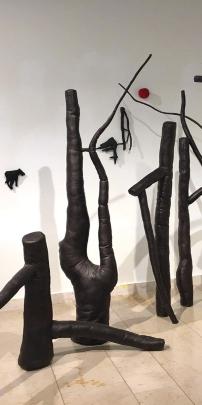
My works are not an attempt for self-expression. Also, they are not an attempt to escape reality. My artisitc approach is the result of the idea that fine art is a unique method for exploring and ‘seeing’ the world. In my art practice I often work on subjects concerning political and ecological problems - I am convinced that visual art could exceed its formal endeavors and could provide new and different insights than a purely scientific approach.The other direction started with my intention to contribute to the awareness of some of the current ecological problems, which we all face – the melting of the polar ice caps and the overall global climate change. In this sense the computer dialogue boxes appear in the paintings as signs of a reality, which seems saturated with images, especially in screens.

SUMMARY
C o n t e m p o r a r y A r t R e v i e w
Jaleh Farshi World
Iran
Rachel Kienitz
Special Issue
Joaquim Marques
scape Land CONTEMPORARY ART REVIEW
Memoticon Bulgaria
Nina Pancheva
Anna Fine Foer
United Kingdom
I am an artist and educator based in Oxfordshire. My practice is situated in and beyond the realm of light and time based image making. My interest is as much in process as it is in subject. My current art practice is an experimental exploration of the material possibilities of photography and the space between the representational and the abstract.
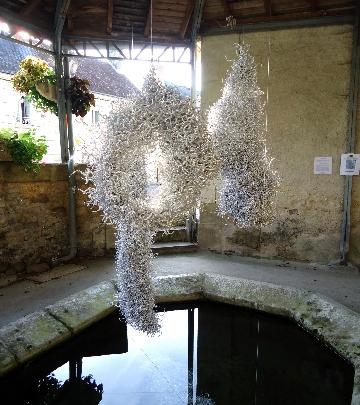
Rather than using photography to capture images ‘out there’ that represent something external, I’m interested in how images might emerge from the photographic process itself and express something of the nature of the materials used.

I’m particularly interested in contact, how material photography can capture and articulate the physical presence, both of the photographer and the subject. I’m excited by the alchemy of early and alternative photographic processes. magic at work that surpasses the technicality of the process and taps directly into the imagination. Underlying my work is my need to be sustainable and to acknowledge my individual responsibility to my community and the wider world.
Rachel Kienitz
lives and works in Toronto, Canada
Christopher Fluder

lives and works in New York City, USA

Kinnari Saraiya
lives and works in London, United Kingdom
Memoticon
live and work somewhere in the world
Jaleh Farshi
lives and works in Tehran, Iran

Nadia Adina Rose
Kinnari Saraiya United Kingdom
Kinnari Saraiya, born in Bombay, India, addresses contemporary discourses of the imperial past from a post-colonial standpoint. Her grandfather has seen the final days of the British Raj to the early days of Indian independence and the post-colonial effects of it today. Her art practice, inspired by the stories engrained in her being, narrates the silences in history. She explores the absence of presence through sculpture, mixed media drawings and digital gif animations. She gives voice to the architectural landscape that is regarded as a silent witness of the British Raj and transforms it through contemporary techniques like lasercutting and moulding. Further decolonising materiality in contemporary art, she hero’s chilli powder in her work to reflect domesticity and a sense of home through a spice that is vibrantly red and hot, symbolising violence. These, coming together as a cautionary tale, contemplates the duality of creation and destruction, past and present. While the voice is faded and neglected in their existence in the landscape, her responses allow space for reflection and speculation.

4
32

56 78
100
Nadia Adina Rose Russia / Israel
In my work, I make us of ready-made textile objects related to my childhood experiences and impressions to see them surface in today’s reality, which is so different from that of the past – up to the point that the two seem to be incompatible. The textures, domestic objects and design patterns that were totally self-evident decades ago, during the epoch that has been over, in the country that does not exist any longer, are still present in my mind – as if they were the “gravity points” that affect my perception. I extract these objects out of my memory (they are still present: forgotten in the lower drawers of creaky wardrobes, on the shelves of the shops in the Russian provincial towns, all those old-school blankets, linen sheets, pillows and pillowcases) and re-figure them to find them a place in the world as I know it today. I sew and arrange objects that expand our traditional living space, turning it into a large-scale, panoramic vision where, by playing with things, I push them outside the boundaries of conventional everyday experience.
lives and works in Jerusalem, Israel

Nina Pancheva
lives and works in London, United Kingdom
John A. Blythe
124

lives and works in Oxfordshire, United Kingdom

Joaquim Marques
lives and works in Germany
154 190 212
Special thanks to Miya Ando, Juerg Luedi, Urte Beyer, Beth Krensky, Rudiger Fischer, Lisa Birke, Haylee Lenkey, Martin Gantman, Ariane Littman, Max Epstein, Nicolas Vionnet, Sapir Kesem Leary, Greg Condon, Jasper Van Loon, Alexandre Dang, Christian Gastaldi, Larry Cwik, Michael Nelson, Dana Taylor, Michael Sweeney, Colette Hosmer, Melissa Moffat, Marinda Scaramanga and Artemis Herber.


Special Issue
SUMMARY scape Land CONTEMPORARY ART REVIEW
John A. Blythe
LandEscape meets
Rachel Kienitz
My paintings are a visual representation of my dreams. I'm inspired by nature and the healing qualities of being in nature. I'm interested in woman's relationship with nature and how it relates to her relationship to herself.
I use elements such as paper, fabric and paint to create a textured layering effect. This layering represents different levels of the psyche and the ability to catch a glimpse into deeper realms of our true being. I'm interested in the tiny details and hidden items beneath the surface. These elements are clues to unfolding the mystery of the story I'm creating. I hope my work inspires the viewer to open themselves up to the idea that there is so much to explore within themselves. My paintings give them a peek into my inner world which, in turn, encourages them to explore their own.
Hello Rachel and welcome to LandEscape. Before starting to elaborate about your artistic production, we would like to invite our readers to visit in order to get a wide idea about your multifaceted artistic production, and we would start this interview with a couple of questions about your multifaceted background. You have a solid formal training and you graduated in Interior Design from Sheridan College: how did those formative
years influence your evolution as an artist? In particular, does your work as a Set Decorator and Buyer in the Toronto film industry help you to develop your attitude to experiment with different techniques and materials?
Rachel Kienitz: Thank you so much for having me. Yes, I went to Sheridan College for Interior Design and before that I took a general arts course called Art Fundamentals. The Interior Design program at Sheridan was intensetechnically and artistically. During my years in school, I learned how to create under pressure and within a time frame, which has been such a helpful skill both in my film work and my art
scape Land CONTEMPORARY ART REVIEW
An interview by Josh Ryder, curator and Melissa C. Hilborn, curator landescape@europe.com
 Photo by Phoenix Sage Potter
Photo by Phoenix Sage Potter

scape CONTEMPORARY ART REVIEW Land Special Edition
Photo by Phoenix Sage Potter
practice. I learned that there are many different aspects to the creative process and that everyone approaches this process in their own unique way. Once I realized this, I started to hone my communication skills and worked on how to explain my ideas visually so that other people could understand them. Mostly I learned that I excelled best at what I enjoyed doing, which was the artistic side of things like concept boards (which I still use today), renderings, floor plans and elevations. I was happiest when I was able to draw freehand or use markers and gouache for renderings.
Working as a Set Decorator/Buyer means that I get to help create the world where the story takes place. My favourite productions to work on are period films because I love to learn about history, especially through furniture and design. I enjoy the challenge of having to find era specific pieces that are appropriate for the scene and the overall theme of the production. It's almost like piecing together a puzzle. These settings and characters are real in the mind of the writer and creating a film brings the ideas out of the writer's mind and into the minds of the viewer. I think that’s pretty magical. I aim for this level of storytelling in all of my paintings.
Unfortunately, the film industry has a lot of waste. One day while I was working, someone was about to throw away a big box of scrap fabric. Instead, I took the box home and that's how I began using fabric in my paintings. I'm interested in using things that other people deem unnecessary or junk. I don't really believe in junk; I think you only
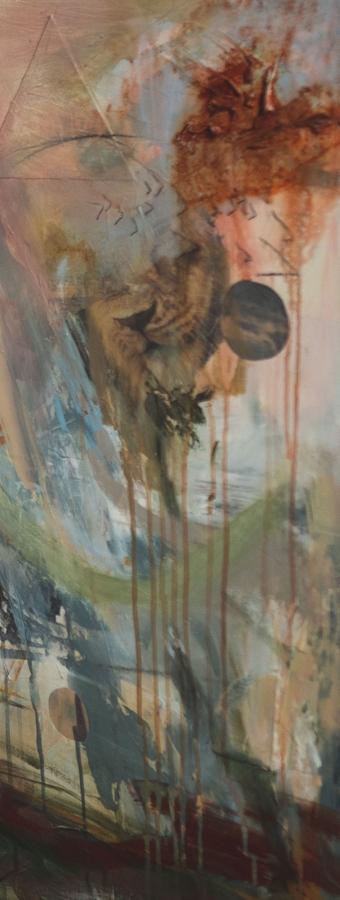
CONTEMPORARY ART REVIEW
Rachel Kienitz scape
Land
need to have an open mind about how to repurpose it.
For this special edition of LandEscape we have selected your Wild Woman series, a stimulating project that our readers have already started to get to know in the introductory pages of this article. What has at once captured our attention of your exploration of the inner landscape of the female psyche, is the way it engages the viewers through such unique multilayered visual experience, offering an insight into the connection between women’s health and the ecology of our planet: when walking our readers through your usual setup and process, would you tell us how did you develop your Wild Woman series?
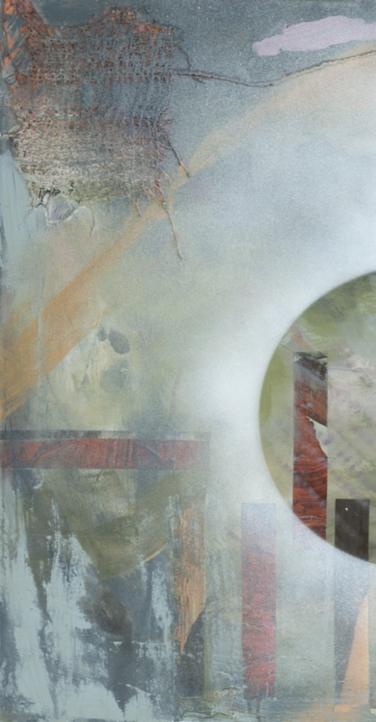
Rachel Kienitz: I was in the midst of developing a regular meditation practice and just beginning to dip my toes into the pools of my psyche. I've always known this inner world exists but had never had a language to explain it before. I was reading Women Who Run with the Wolves by Clarissa Pinkola Estes and the flood gates opened for me. Suddenly I had a way to express my experiences. The first painting in the series was 'The Source' which came to me in a meditation. I saw the painting completed just as it was and knew that it was a representation of the Life/Death/Life cycle. It's a depiction of this inner world and shows that more is happening beneath the surface than most people are aware of. Hidden within the painting is a compass which is a symbol to direct the viewer to this world beyond, if they dare go looking for it.
At the same time I began painting the 'Wild Woman' series, I was also reading a biography on Georgia O'Keeffe. The way that the author
scape CONTEMPORARY ART REVIEW Land Special Edition
Awake In The Dream, 24x36 acrylic and paper on cotton
[Roxanna Robinson] describes New Mexico and the desert landscape was a huge inspiration, especially when choosing the
colour palette for this series. I feel drawn to the desert and I think it's entirely possible I've already lived a life there. I would lay in bed at
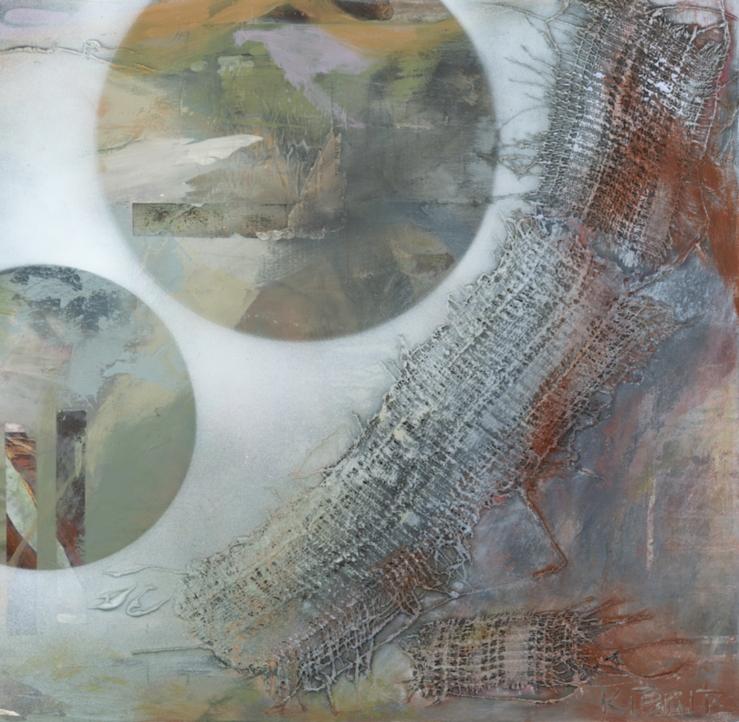
scape CONTEMPORARY ART REVIEW Land
Rachel Kienitz
canvas
night and wonder how life can survive in such a harsh climate, with lack of shade and water, and yet it does. Somehow, life continues on.
There's a reason our planet is in trouble right now and I think it has much to do with the suppression of the Divine Feminine. In the
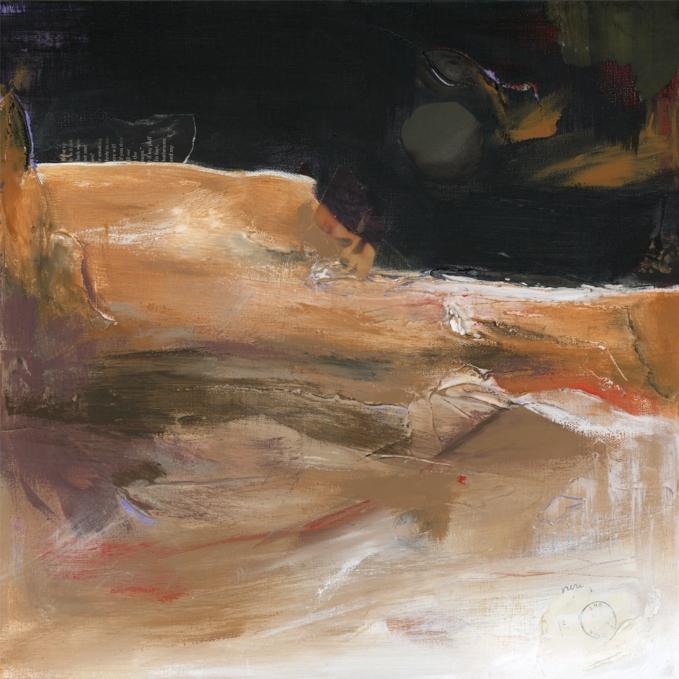
scape CONTEMPORARY ART REVIEW Land Special Edition
Sienna At Night, 16x16 acrylic and paper on cotton canvas
'Wild Woman' series, the desert represents the current state of the Divine Feminine. Women's cycles are directly tied to the cycles
of the planet - the seasons, the moon, the birth/life/death cycle. I believe these cycles need to be recognized and honored before

Kienitz scape CONTEMPORARY ART REVIEW Land
Rachel
She Could Not Be Tamed, 30x30 acrylic and paper on cotton canvas
any healing can start to take place. Our relationship with nature is a direct reflection of our relationship to ourselves and women
need to find a way back to themselves before Mother Earth can begin to heal.

scape CONTEMPORARY ART REVIEW Land Special Edition
The Source, 30x30 acrylic and paper on wood panel
Your Wild Woman series has struck us for the way you sapiently conveyed effective combination between spontaneity and with such unique rigorous aesthetics: do you create your works gesturally, instinctively? Or do you methodically transpose geometric schemes?
Rachel Kienitz: My work is very instinctual. I often start a painting with a feeling in mind. Sometimes I know exactly what I want to paint but most of the time I jump in blind and have to trust that the process will catch me and take over. I think of myself as a vessel to bring the ideas forth from the unseen world into this one. Once I've gotten started, the idea gradually makes itself known through each layer. When I feel like it has fully expressed itself through me and there is nothing more to add, that's when I know it's complete. Of course, not every painting is the same and the process isn't ever linear. If I sat down to write each step taken, it would be different every time.
We have appreciated the variety of your palette, that ranges from the delicate and thoughtful nuances of Awake In A Dream to such intense colors that marks out Sienna At Night. How does your own psychological make-up determine the nuances of tones that you decide to include in your artworks and in particular, how do you develop your textures in order to achieve such unique results?
Rachel Kienitz: I usually start with the colour palette; it signals the beginning. I mix all of my own colours which is a meditative part of the
process for me. I have a whole box of colour swatches that I refer back to over and over again. I'm intrigued by different colour relationships and how certain combinations can elicit an emotional response or memory. I'm continually learning about colour and the effect it can have on the Self. I ask myself "how can I use colour to tell this particular story?"
Texture is also a big part of my work. I use elements such as paper, fabric, paint and paste to create a textured layering effect. To me, this layering represents different levels of the psyche and the ability to get a glimpse into deeper realms of our true being. One of my favourite things while painting is when a previous layer is showing through the newly created one. It tells the story of where I have come from in the creation process. A life is one experience after another, with each experience piled on top of the previous one and this is also how I view my art. I'm drawn to tiny details and hidden items beneath the surface of the paint such as a white horse, an angel wing, part of an old, handwritten letter. These elements are clues to understanding the story I'm creating and are there for people willing to look for them.
I mentioned earlier that I use fabric in my artwork. I'll usually tear it beforehand which creates threads and strands that add another dimension of texture to the canvas. I love using fabric with a large weave so that the painting underneath can peek through. Sometimes I'll wet it first and fold it into interesting shapes which allows for crevasses
Kienitz scape CONTEMPORARY ART REVIEW Land
Rachel
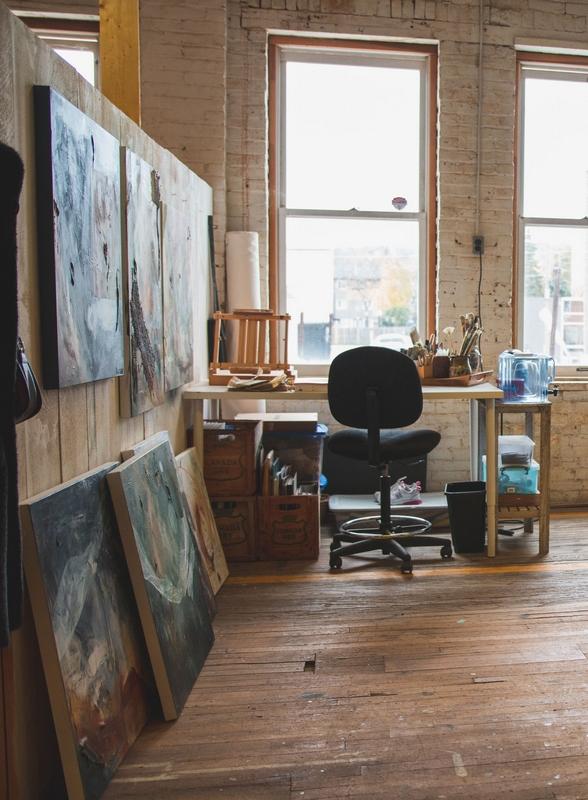

and more opportunities to "hide" things of importance. I also like to use what I call visual texture (where you can see the texture but not feel it) in the form of old travel magazines. The photographs within can be so abstract that if they're taken out of the context of the article, it's hard to tell what they are. It adds another layer of mystery to my work and I love that.
As you have remarked once, each piece came to you through a dream: with their unique combination between figurative elements and dreamlike atmosphere, your artworks unveil the connection between reality and imagination. How do you consider the relationship between the real and the imagined playing within your artistic practice?
Rachel Kienitz: All of my work begins in the realm of imagination. To me, this realm is just as real as "reality". My art is based on ideas that come from the unseen world and I try to bring this unseen world into physical being on canvas for others to experience.
The use of colour and the way that certain colours can elicit emotions is an important part of communicating my work. Humans have complex emotions and we can feel many different things at once - sometimes even opposing feelings. I love using dark, moody colours as well as earth tones next to hints of vibrant colours, like raw sienna beside lavender or moss green with bright orange. To me, this balances the dark with the light. In my everyday life, I'm always on the lookout
for new colour combinations and how they make me feel.
Some people might say that emotions aren't real; that they're just chemicals in the brain because they can't see or hold them. But that's why art is so important - it's the physical self-expression of things that can only be felt. Art is an instinctual way of communicating with each other. The relationship between the real and the imagined is the dance of creativity itself.
You are a versatile artist and we appreciate the way your works create a bridge between past and present: you integrate pieces of your ancestry into your artworks — as you did in your touching Rebirth series — providing them with such multilayered narrative drive, with evocative and allegorical features. Such hybrid visual quality allows the viewers to capture fleeting moments providing them with emotional impact: how do you consider the role of memory playing within your artistic practice? And how important are symbols in your process?
Rachel Kienitz: I think memory is like a fingerprint in that we all remember things in our own way, with our unique perspectives attached to it. When we remember the past, we're connecting the past with the present. This allows us to re-experience things that happened in the past. We can look at the past events with or without certain emotions attached and can see things from a different angle, maybe something that we weren't
scape CONTEMPORARY ART REVIEW Land Special Edition
aware of at the time. This gives us new knowledge and a fresh outlook which is transformative in the healing process.
Creating is a powerful healing mechanism and can be used as therapy. When I'm creating, I'm in a safe place to explore the feelings

Kienitz scape CONTEMPORARY ART REVIEW Land
Rachel
But You, 24x24 acrylic, paper and charcoal on cotton canvas
associated with my memories, just the same as when I'm meditating. I'm able to integrate the emotions and then to move forward in my
life. Every painting I've ever done has some past memory attached to it, whether I began the painting with that in mind or not. Each
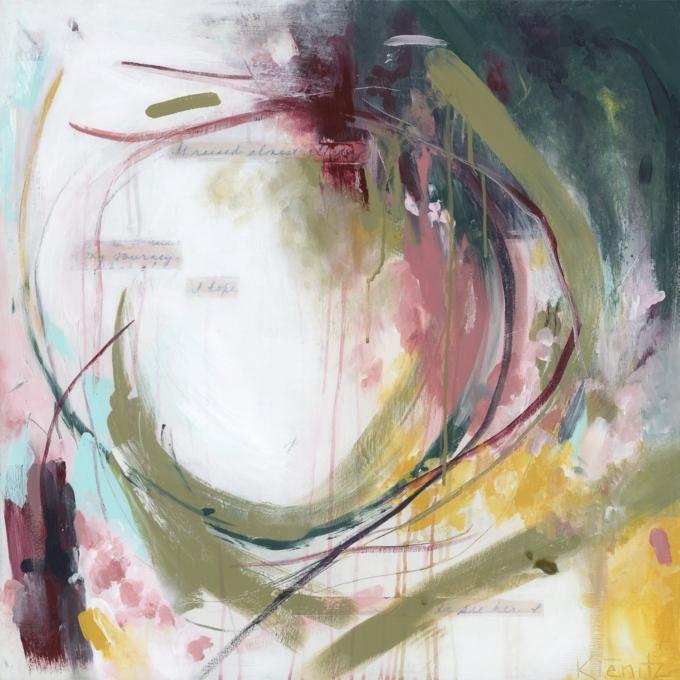
scape CONTEMPORARY ART REVIEW Land Special Edition
See You Again, 30x30 acrylic and paper on cotton canvas
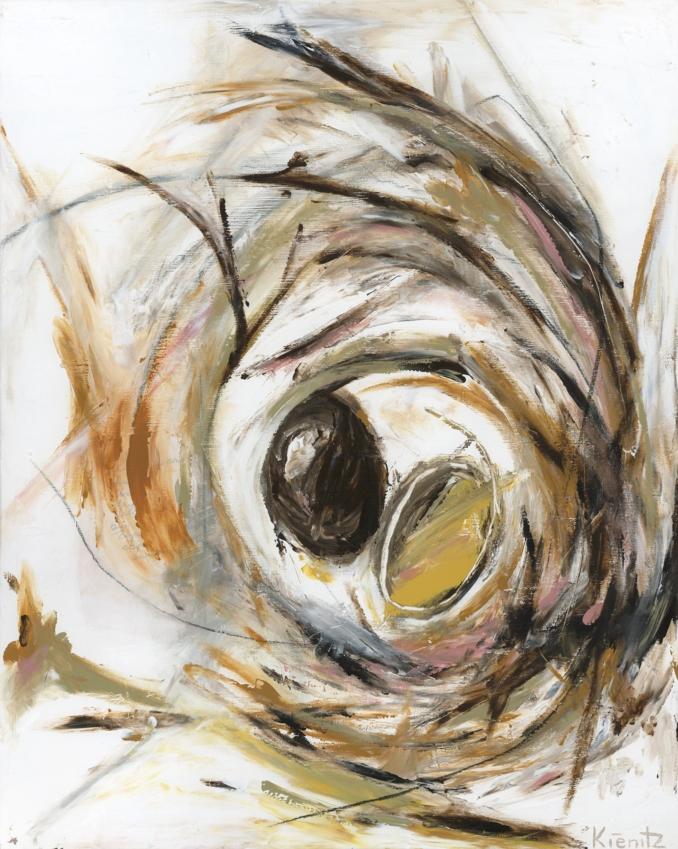
scape CONTEMPORARY ART REVIEW Land
Rachel Kienitz
Sisters, 24x30 acrylic and paper on cotton canvas

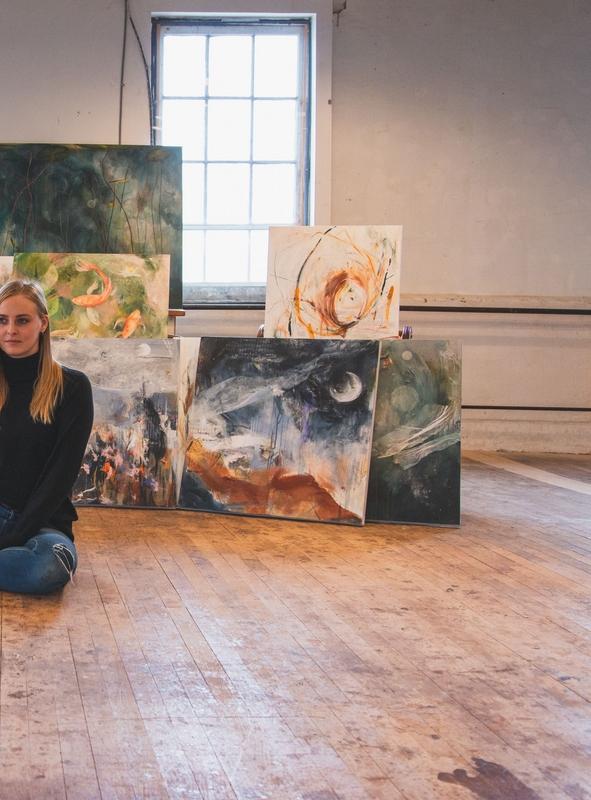 Photo by Phoenix Sage Potter
Photo by Phoenix Sage Potter
one has offered me the space to heal.
During a particularly intense meditation, I had gone back to the day my mom died. I was in a state of shock when she died, which prevented me from fully feeling at the time. However, being in a meditative state and residing in the safety of my inner world, I allowed myself to finally feel what I needed to. I observed the feelings and then they passed and then there was peace.
And then I realized that just because her death made me feel certain things that I considered "bad" (anger, grief, sadness) that doesn't mean that she felt those same emotions. I had always assumed that her death was just as sad for her as it was for me, but maybe she felt relief for no longer being in pain. Maybe she was happy to be going home and joining loved ones she hadn't seen for a long time. It was a completely different experience for her. And that realization helped me to heal, in a very deep way.
I use symbols to help me further explain what I feel in the imaginative realm. There, it's more about feeling than about seeing. Symbols are a way for me to interpret emotions and to assign a character to it. When I painted my 'Rebirth' series, I used the symbol of nests to communicate the feeling of home and sanctuary, which is exactly what I needed at the time I painted that series. The use of old letters, music notes and journal entries that I added to the paintings (and that came from my Mom and Grandma) were put there to
support me. I felt safe to create and it connected me to the women of my past. It was as if we were collaborating on the art together.
Your works often challenge the viewers' perceptual parameters, inviting your audience to discern and interpret. In this sense, we daresay that your artistic practice seems to aim to look inside of what appear to be seen, rather than its surface, providing the spectatorship with freedom to realize their own perception: how important is for you to trigger the viewers' imagination in order to address them to elaborate personal interpretations? In particular, how open would you like your works to be understood?
Rachel Kienitz: I create my paintings from the realm of magic and those who frequent that realm understand what I'm saying in my work. It's recognized on an instinctual level - from the same plane where we tell stories and depict symbols. Storytelling is ingrained in usit's part of our human nature and our history.
There are infinite realities attached to ours that aren't visible with the naked eye. I'm more interested in exploring those worlds than I am this physical "reality" that we can see. I think this is what sets artists apart from other people - we're willing to go places within our psyches that may be too scary for others because it's unknown.
My hope in sharing my work is that it grants the viewer a peek behind the veil and encourages them to start exploring their own
scape CONTEMPORARY ART REVIEW Land Special Edition
subconscious. Imagination is a muscle that we must use and play with on a regular basis, otherwise we lose the ability. Children
understand this better than adults. As we get older, we're conditioned to believe that the magical realm doesn't exist, that reality is the
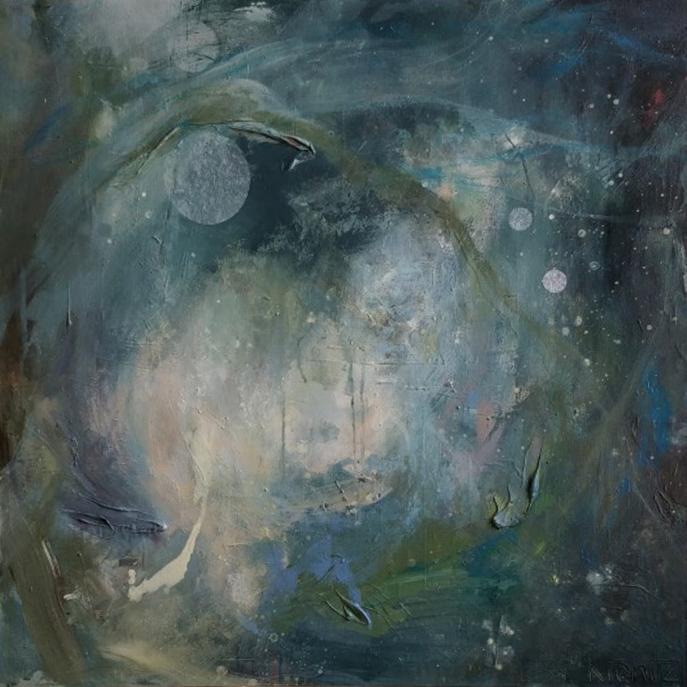
scape CONTEMPORARY ART REVIEW Land
Rachel Kienitz
To Be Held, 30x30 acrylic, paper and marker on cotton canvas
"real world". But magic is absolutely real. It's very much alive and waiting for you to interact with it.
Another interesting series of yours that has particularly impressed us and that we would like to introduce to our readers is entitled
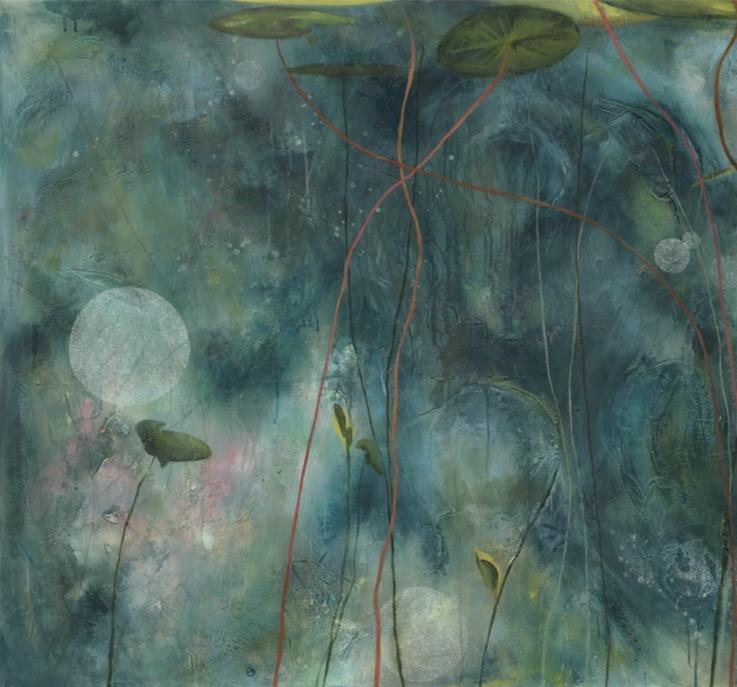
scape CONTEMPORARY ART REVIEW Land Special Edition
Swimming With The Stars, 40x60 acrylic, paper and marker on cotton canvas
Fluidity and we definitely love the way it unveils such enchanting sense of connection with Nature. Your Fluidity series was inspired
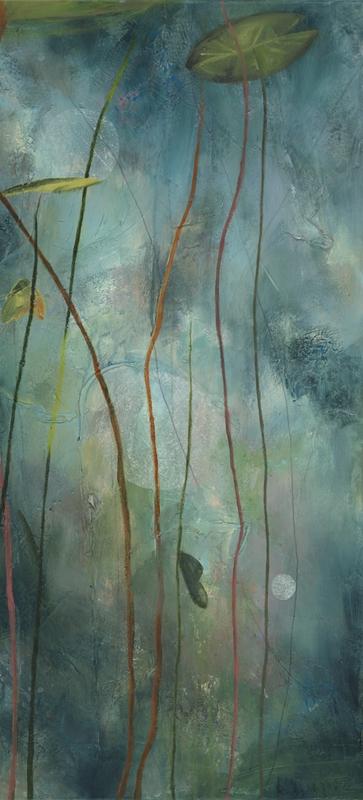
by your camping experience near Algonquin Park, the oldest provincial park in Canada: how does your relationship with natural environment inspire you?
Rachel Kienitz: I had a very surreal (and fortunate) childhood. I grew up spending every summer at my family's cottage in Haliburton. My days there consisted of playing outside, eating meals at the picnic table, evening campfires, digging in the beach, and swimming, swimming, swimming. I was always in the water. These are memories that I'll hold close to my heart for the rest of my life. When I'm outside in nature, my entire body relaxes and time moves differently. I'm able to remember where I've come from and that there's absolutely no rush to get to where I'm going and nature reminds me of that.
When I painted my 'Fluidity' series, I wanted to capture the feeling I had while living outdoors. Sleeping under the stars and hearing wolves howl at the plump, full moon. That energizing, almost electric feeling of swimming in a natural body of water. It was a reawakening experience for me and I wanted to bring those feelings to the canvas. I tried to merge my experience of floating in the lake with stargazing. When I painted the series, I pictured myself gliding through an expansive galaxy.
You often work with large canvass, that provide the viewers with such immersive
scape CONTEMPORARY ART REVIEW
Land Rachel Kienitz
visual experience: how do the dimensions of your canvass affect your workflow?
Rachel Kienitz: I'm drawn to working on large surfaces because it feels expansive to me. I paint large because I feel strong emotions that need space to express themselves. Even in my sketchbooks I leave a blank page at the beginning to allow space for my ideas to breathe. It takes longer to finish a large canvas but they have a great presence in the homes they end up in.
This year I'm trying to push myself to see how large I can actually paint. Oversized canvases can be hard to find so I've started stretching and priming the canvases myself, which also gives me greater control over the quality.
It used to bother me that it takes so long for me to finish a painting. Social media makes it seem like artists pump out paintings in an afternoon. But the creation process isn't linear and a lot of the time my paintings start out completely different to what they end up being. Some of the canvases actually have 3 or 4 paintings in them, and each layer influences the next. I've learned that taking my time allows me to get more engrossed in the creation process. I plan on painting for the rest of my life, so really, there is no rush. I've been given an entire lifetime to do what I've come here to do.
You are an established artist: your artworks are in the private collections of homes around the world, and have been been featured in Disney movies and various
Netflix productions: how do you consider the nature of your relationship with your audience? By the way, as the move of Art from traditional gallery spaces, to street and especially to online platforms — as Instagram
https://www.instagram.com/rachelkienitzart increases, how would in your opinion change the relationship with a globalised audience?
Rachel Kienitz: I struggle with marketing my work because I'm really more interested in the creation side - as I'm sure is true for a lot of artists. As an introvert, I find it difficult to know how much of myself to share with my audience. I'm sure I share too much sometimes, but it's hard to find the right balance between staying open and authentic and being a "business". How can I give everything that I have to the canvas and not to my audience? It's a question I ask myself often.
As artists we're expected to wear many different hats: to be creators, entrepreneurs, promoters. Being an artist in this time means your job isn't only to make art - you have it make it. I find this pressure especially disruptive to my creative process, so often, the business side of things takes the back seat. I want to personally know my audience and have relationships with the people who enjoy my work. That's one of the reasons why you need to email me if you're interested in owning a painting - I want you to know that I'm a one-woman operation and that I care about where my art ends up. Each piece is one
scape CONTEMPORARY ART REVIEW Land Special Edition
Going Home, 30x30 acrylic, paper and marker on cotton canvas
of a kind (I'm not interested in mass production) and I want to make sure that my art is going to its rightful owner. So far, this perspective has worked for me and my
collectors. While physical galleries and shows are becoming more obsolete, I find there’s a gap appearing and a lot of artists are lacking representation. On the one hand, you can

scape CONTEMPORARY ART REVIEW Land
Rachel Kienitz
 Yin Yang, 24x36 acrylic, paper and charcoal on cotton canvas
Yin Yang, 24x36 acrylic, paper and charcoal on cotton canvas
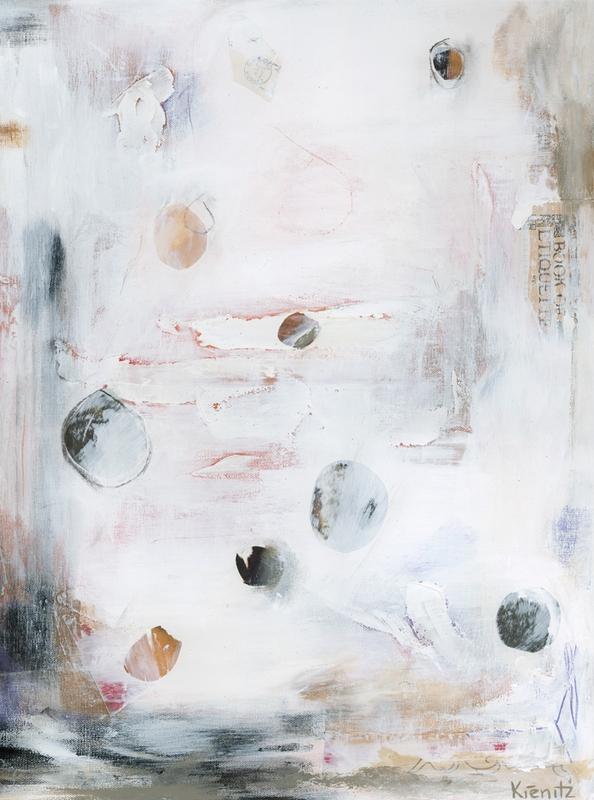
now be an artist without ever having your work in a gallery. You can have your work seen online by anyone in the world. But it requires more time and effort from the artist, which subtracts from creating. The internet and the way it's being used to market art has become a double-edged sword. I think there are a lot of artists who feel the same way and don't have the interest in making themselves an Instagram sensation. So, what will representation look like in the future?
I've been doing some investigating into NFTs because my partner is a big advocate for cryptocurrency. NFTs put the power back into the artists hands because not only does the NFT provide proof that the work is authentic, but the artist can also collect royalties anytime their work is resold, without the need of a middleman. I think that's pretty powerful. In the near future I plan to offer certificates of authenticity in NFT form whenever someone purchases my work. I think this is an exciting glimpse into the future of art.
We have really appreciated the multifaceted nature of your artistic research and before leaving this stimulating conversation we would like to thank you for chatting with us and for sharing your thoughts, Rachel. What projects are you currently working on, and what are some of the ideas that you hope to explore in the future?
Rachel Kienitz: Right now, I'm currently in the incubation phase of a body of work that’s based on dreams. I've been keeping a dream
journal and have been referring back to it often when developing the language of this series. I want to merge my abstract work with realism and have been playing around in my sketchbook on how to execute this, as well as honing my drawing skills.
I'm also in the middle of a few family tree commissions where I'm incorporating symbols and personal memorabilia into the paintings to represent who they are as a family unit. I'm really enjoying diving deep into a family's particular history and psychology in order to create their own, customized family tree. If you’d like your own family tree painting, please feel free to contact me.
A concept I'm hoping to explore in the future is Transformation and how it affects an individual, particularly in trying times. I want to go further into complex human emotions and the way that we interact with these emotions. Of course, I want to continue to explore my inner world and to dive headfirst into my own darkness. This is where my best ideas come from and the more comfortable I am in the darkness, the easier it gets. I'd also like to further develop my own symbolic language and to use these symbols in future paintings.
Thank you so much for giving me the space to talk about my work, LandEscape, and for such insightful and thoroughly thought-out
An interview by Josh Ryder, curator and Melissa C. Hilborn, curator landescape@europe.com
scape CONTEMPORARY ART REVIEW Land Special Edition
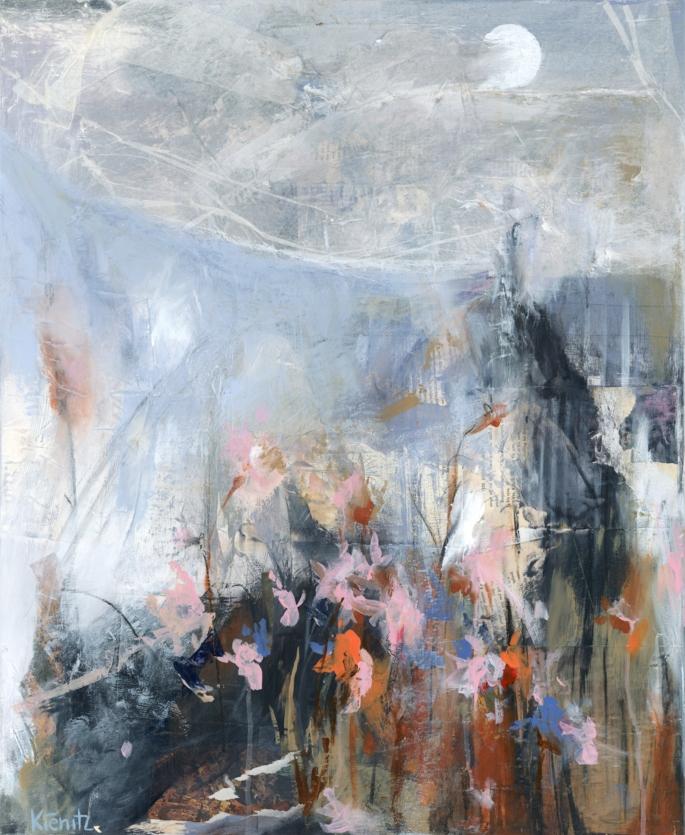
scape CONTEMPORARY ART REVIEW Land
Rachel Kienitz
Mystic Moon, 24x30 acrylic, paper and charcoal on cotton canvas
LandEscape meets
ChristopherFluder
Contrast doesn’t come into being by way of permission; it is autonomous and no one is immune, no one absolved from it. My photographs examine contrast and dichotomy. Eschewing comfortable patterns or artistic conventions, I examine the features of real life as they occur — whether beautiful or horrifying.
My recent works represent a reflection of New York City over a tumultuous three-year period; the mistaken, unseen, and overlooked have presented themselves on a case-bycase basis, highlighting the fragile nature of our existence. Before harmony, there is chaos.
, curator landescape@europe.com
Hello Christopher and welcome to LandEscape. Before starting to elaborate about your artistic production and we would like to invite our readers to visit https://christopherfluder.com in order to get a wide idea about your multifaceted artistic production, and we would start this interview with a couple of questions about your multifaceted background. You have a solid formal training and after your studies at the prestigious Tisch School of the Arts in New York City you started your career as an artist as well as a writer, director and producer: how did those formative years influence your evolution as an artist?
Moreover, how does your cultural substratum due to your experience in the entertainment industry address your current artistic research?
Christopher Fluder: Formative is a relative term. There has not been any point at which the world around me has ceased to influence my evolution.
Expression, as I have embraced it, disallows division between art and life. Learning and creating are inextricably bound, each dependent upon the other.
My experience addresses – rather, reflects –an understanding I have of film; not as an amorphous addition to how we define art, but as an organic result of all arts (music,

scape Land CONTEMPORARY ART REVIEW
An interview by Josh Ryder, curator and Melissa C. Hilborn

No matter the window or the wall, day to day existence has been tethered to a very finite space: life, by way of square feet. As restrictions once again pen us in, our thoughts, philosophies, and dreams seem to be examining another aspect of the infinite. In this respect, ceilings give way and windows open.
 Dorsoduro, 2020, photograph, archival pigment print, Ed.5+AP, 40x30 cm.
Dorsoduro, 2020, photograph, archival pigment print, Ed.5+AP, 40x30 cm.
L’Enfant du Printemps
2018, photograph, archival pigment print, Ed.5+AP, 38x28 cm.
An August moon through the trees on the Chelsea High Line.
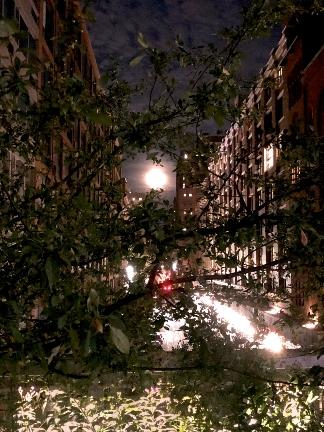
dance, photography, fashion, painting, etc.) taking on one form and revealing a way forward. Whatever expression and creativity are to become, the moving image is taking us there.
The body of works that we have selected for this special edition of LandEscape and that our readers have already started to get to know in the introductory pages of this
Second Sight
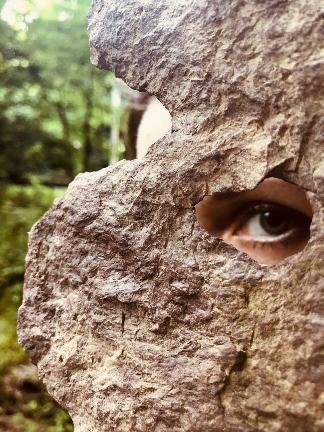
2020, photograph, archival pigment print, Ed.5+AP, 51x38 cm.
At river’s edge; the first of dusk leaves a question in its wake: Is it harder to find or be found?
article, has at once impressed us for the way your exploration of contrast and dichotomy unveils the correlations between polarizing elements, capturing such unconventional beauty in the ordinary: when walking our readers through your usual setup and process, would you tell us how do you develop your ideas? In particular, do you meticulously plan each step of your work or do you go with the flow?
Christopher Fluder scape Land CONTEMPORARY ART REVIEW
Tempus Tempest
2018, photograph, archival pigment print, Ed.5+AP, 30x30 cm.
A lower Manhattan office building stands in the background. The gathering clouds of a summer storm reflected in its windows. A sculpture depicting the continents of the world in the foreground. The sculpture and the building of which it is a part built on top of a 17th century Dutch fort… A consequence of modernity embodied in a storm perpetually gathering.

scape CONTEMPORARY ART REVIEW Land Special Edition
2020, photograph, archival pigment print, Ed.5+AP, 38x28 cm.
The recent lockdowns have pulled humanity from the streets to the bedrooms. One can feel forced to turn the eye inwards for the work to reflect current realities. The perspective to be gained from this chaotic time not only reflects our ongoing isolation, but also imagines our future.
 Honesty
Honesty
A Consequence of Intuition
2014, photograph, archival pigment print, Ed.5+AP, 30x40 cm.
“A Consequence of Intuition” replicates the loneliness of one of the outbuildings on Fort Morgan on Mobile Bay, Alabama, curiously framed by a window shade made derelict by sun and age. In the former, revelry and ritual; in the latter, seclusion. Which is our future?
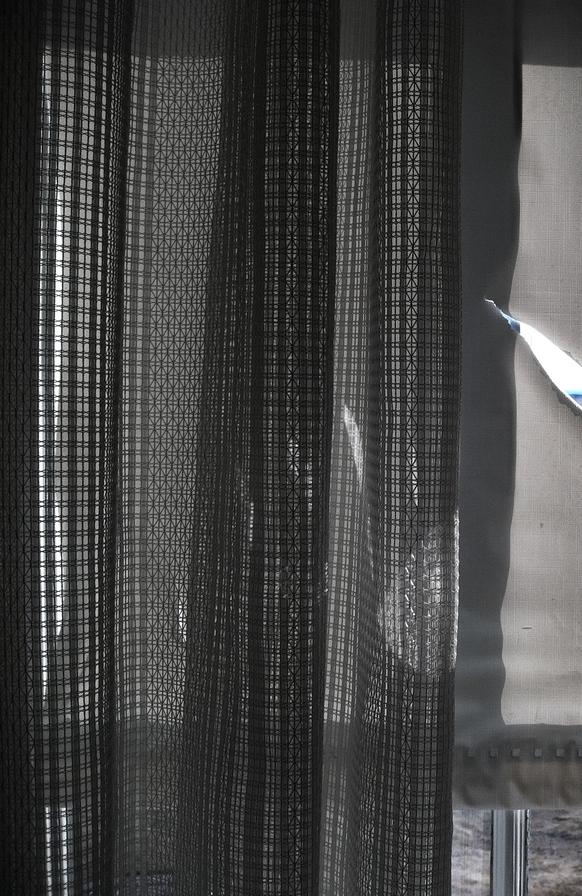
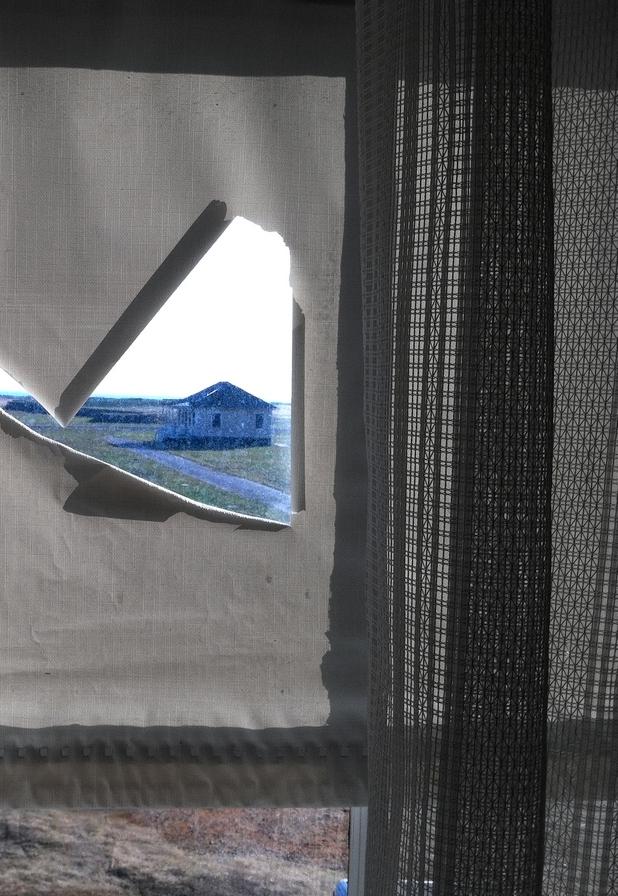
Conditions
2018, photograph, archival pigment print, Ed.5+AP, 38x28 cm.
The nonchalance of this non-binary subject is illustrative of the shift in societal attitude towards gender fluidity. At the precipice of convention and discord, a child born of marginalized communities and fed on co-opted ideals walks into the future. This photograph examines diversity of voice, both nuanced and amplified. Seemingly a consequence of environment, the distinction in these city voices has become endemic to survival.

Christopher Fluder: I don’t believe in any one development or process; creative dogmas are a double-edged sword one needn’t die by.
Every idea has its own way of coming into focus; in nurturing whatever that may be, I’ve found the structure of inspiration, concept, and execution to change with each work.
Inspired by decadent and fascinating view from the homonymous sestiere in Venezia, Dorsoduro draws the viewers to question the unbalanced dichotomy between our perception of the concept of infinite versus finite space, and we really appreciated the way you provided such a primarily philosophical theme with unique visual transposition. Are you particularly interested in exploring the theme of human perception within your artistic production?
Christopher Fluder: No matter the window or the wall, day-to-day existence has been tethered to a very finite space: Life, by way of square feet.
As restrictions once again pen us in, our thoughts, philosophies, and dreams seem to be examining another aspect of the infinite. In this respect, ceilings give way and windows open.
As to human perception, all facets of the human condition are core to my explorations.
Many of your recent work feature New York City's urban environment, as the interesting Tempus Tempest: how do locations influence your work as a visual artist and how does your everyday life's experience fuel your creative process?
Christopher Fluder: Like the song/music heard sitting outside a café in the late afternoon, or the taste of water your cupped hands brought from a brook to your lips last spring, location will inevitably influence perception and thereby expression and creation.
From the farthest reaches of our subconscious, everything within the lives we live forms an emotional heredity that serves to influence our work: everyone I brushed shoulders with walking downtown last year; the three to five notes of music I hear from any car passing my apartment with windows open and the radio turned up; the centuries of artwork I’ve gazed at for hours uncounted...
Honesty draws from the recent lockdowns, that have pulled humanity from the streets to the bedrooms. With sapient reference to elements from ordinary, daily life as the white fence, your work features powerful narrative drive: how do you consider the
scape CONTEMPORARY ART REVIEW Land
Christopher Fluder
role of symbols and evocative elements playing within your artistic process? And how important is it for you to create artworks rich of allegorical qualities?
Christopher Fluder: To distill the world around us, finding the feelings and truths beneath, is a power that symbology and allegory have in photo and film. The narrative qualities in my photographs are an underpinning of my work as a whole.
The sense of loneliness that exudes from A Consequence of Intuition has reminded us of the concept of non-lieu, elaborated by French anthropologist Marc Augé: as a Rorschach test, it challenges the viewers' perception inviting them to switch between opposite interpretations. How important is for you to trigger the viewers' imagination in order to address them to elaborate personal interpretations? In particular, how open would you like your works to be understood?
Christopher Fluder: It is meaningful to me if a viewer’s imagination, ire, arousal, introspection has been triggered; however, it’s not for me to say what effect – if any – my work has on anyone. No work is created with a promise of engagement.
The waking world does not exist in a vacuum; anyone may interpret what they see as they wish. To shackle a viewer with expectation is to limit the effect your work

scape CONTEMPORARY ART REVIEW Land Special Edition
The Mortal Season
2020, photograph, archival pigment print, Ed.5+AP, 26x35 cm.

Christopher
scape Land CONTEMPORARY ART REVIEW
Fluder
Pageantry
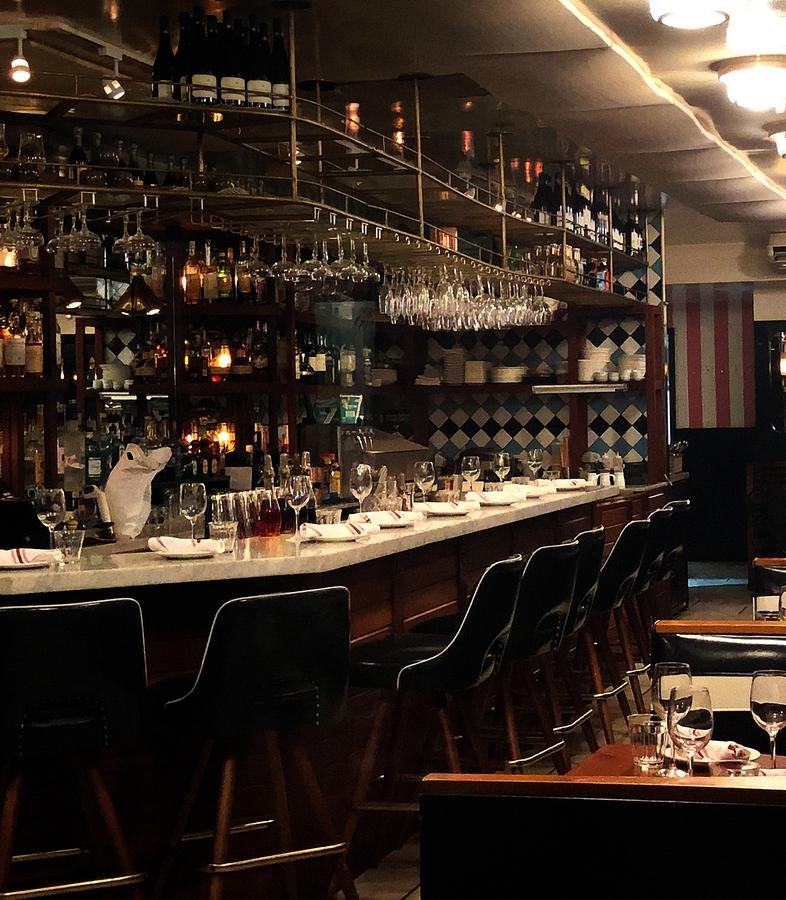
Special Edition scape CONTEMPORARY ART REVIEW Land
2019, photograph, archival pigment print, Ed.5+AP, 38x51 cm.
may have upon them, profound or otherwise.
Ranging from the outbuildings on Fort Morgan on Mobile Bay, Alabama to Manhattan, your works feature places with opposite peculiarities: how did you select the locations and how do they affect your creative process?
Christopher Fluder: Contrasts, or “opposite peculiarities” as you call them, define the symbiotic nature of existence. It follows, then, that they would be present in much of my work.
With my photographic work, there is no set process and resultant effect on the piece or series.
With their unique ambivalent visual identity, The Other Mirror seems to make the viewers question the reality of the situation: how do you consider the relationship between the real and the imagined playing within your artistic practice?
Christopher Fluder: Film and photography remove the lines we’ve carefully set out to define reality.
If you’re standing in a gallery; or sitting in a theater, the floor beneath your feet is real. The bench or chair where you’ve draped your jacket? Real again.
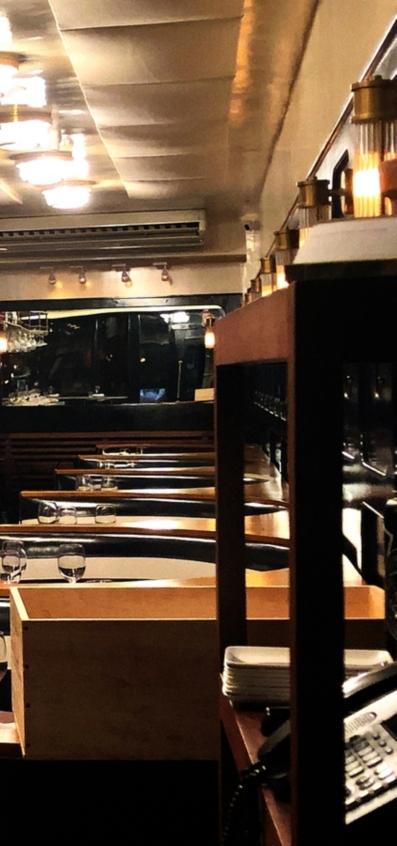
scape Land CONTEMPORARY ART REVIEW
Christopher Fluder
Unconscious Voices
2020, photograph, archival pigment print, Ed.5+AP, 46x61 cm.
New Year’s Eve 2020, Gramercy Park. All but a few guests had left the Booth Mansion; the remaining assemblage seemed to comment deeply on the mystery that drives our quest for identity in this life.
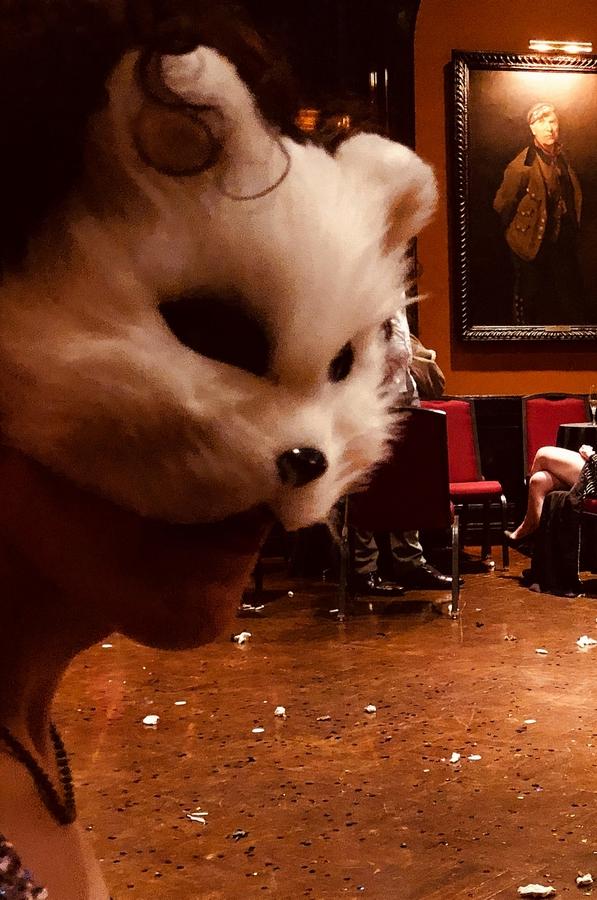

Temporary Diversity
2019, photograph, archival pigment print, Ed.5+AP, 40x30 cm.
There exists today a space in which we are void and, as such, free from predisposition, from judgment; without mortal coil… This is temporary and thus, we return from ether to ash. A refuge found can so quickly become a refuge lost.
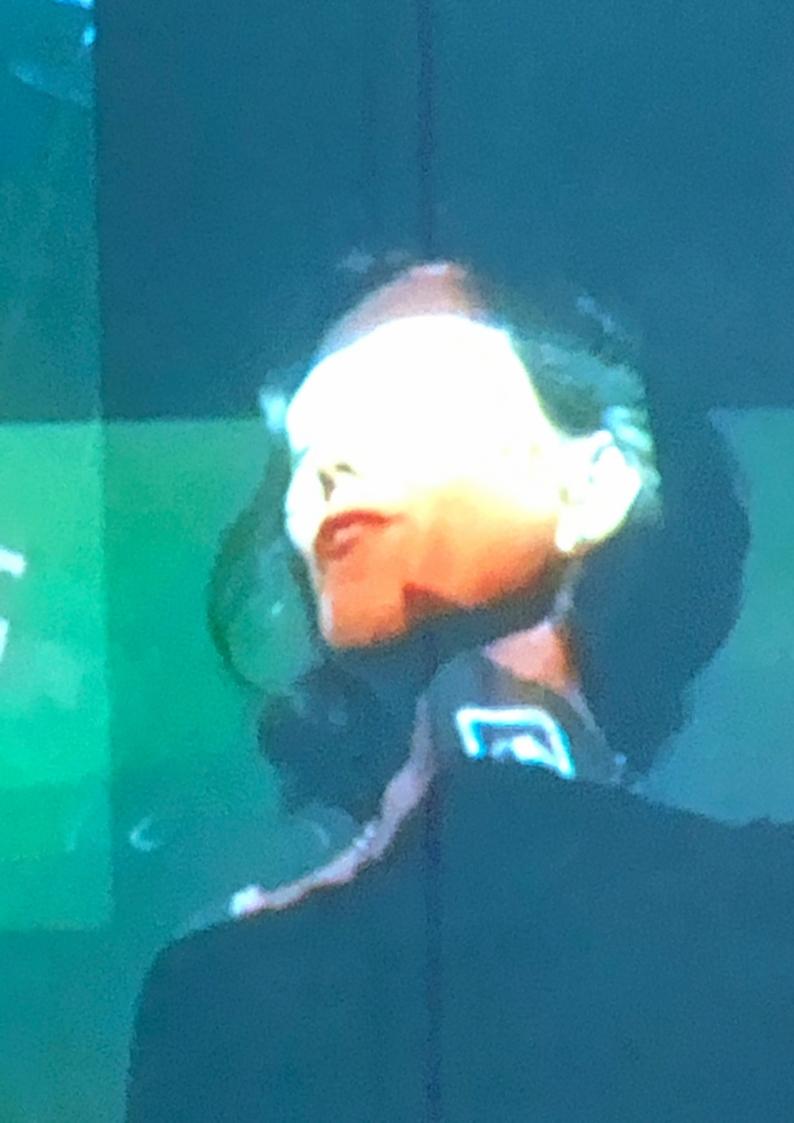
We try to fly from the moment we’re born. Gravity is our adversary. When we enter the cinema, after the lights go dark, as the
film begins, there is a release of all maxims. Space and time have no dictates save for one: Emotion. It is the natural domain of
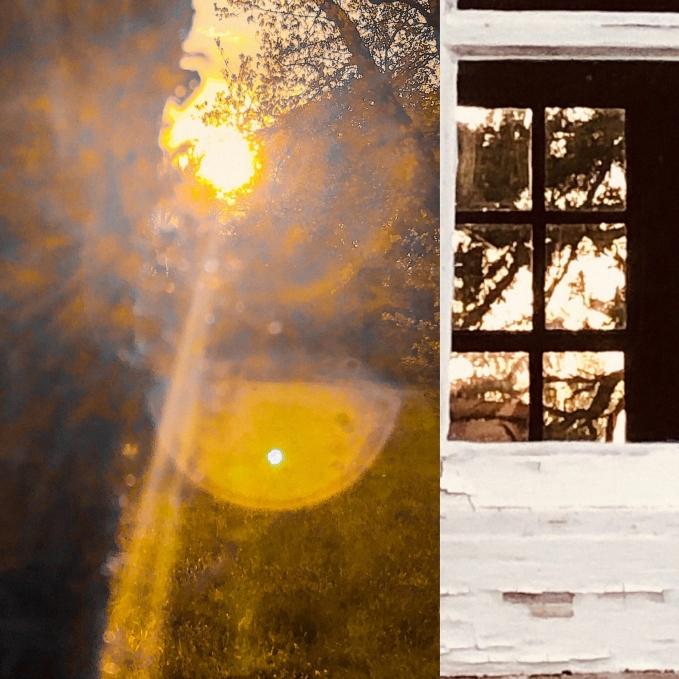
scape Land CONTEMPORARY ART REVIEW
Christopher Fluder
Sheep Cottage
2020, photographic collage, archival pigment print, Ed.5+AP, 25x25 cm.

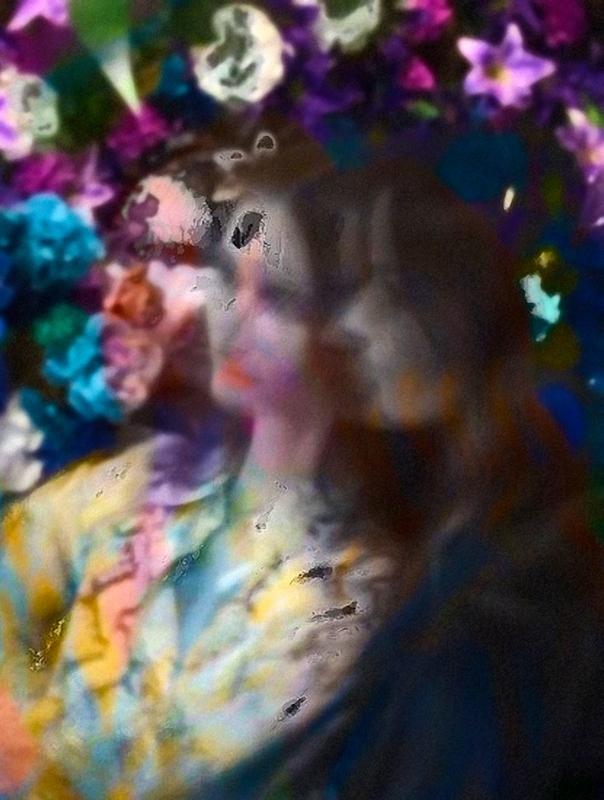 The Lotus Eaters
2019, photograph, archival pigment print, Ed.5+AP, 41x61 cm.
Illustrative of society’s preoccupation with itself, these subjects denote the self-obsessive byproduct of our collective pursuit of identity, one step in a fluid trilogy of exhibition, dissemination, and approval.
The Lotus Eaters
2019, photograph, archival pigment print, Ed.5+AP, 41x61 cm.
Illustrative of society’s preoccupation with itself, these subjects denote the self-obsessive byproduct of our collective pursuit of identity, one step in a fluid trilogy of exhibition, dissemination, and approval.
cinema. For the length of the film, our lifelong battle against gravity is won; there are no limits... Anything the film introduces can be given life in our emotional center. We are free in ways that, otherwise, only dreams allow.
Your artworks have often short titles, that often — as in Sisterhood and in Unconscious Voices — convey subtle messages and that allow you to clarify the message while maintaining the element of ambiguity: how do you go about naming your work? In particular, is it important for you to tell something that might walk the viewers through their visual experience?
Christopher Fluder: Naming conventions have evolved in such a way as to require a name, an explanation, and a further reflection upon a single piece. This common requirement has marginalized those who choose not to provide a veritable thesis – in an arena once viewed, in the early days of salon photography, as impure at the mere mention of details outside of size and medium.
That said, I believe there is a balance to be struck; if done with care, naming can afford the viewer a deeper glimpse into the work, without riding roughshod over their own very personal experience.
Does your artistic research respond to a particular cultural moment? In particular, do
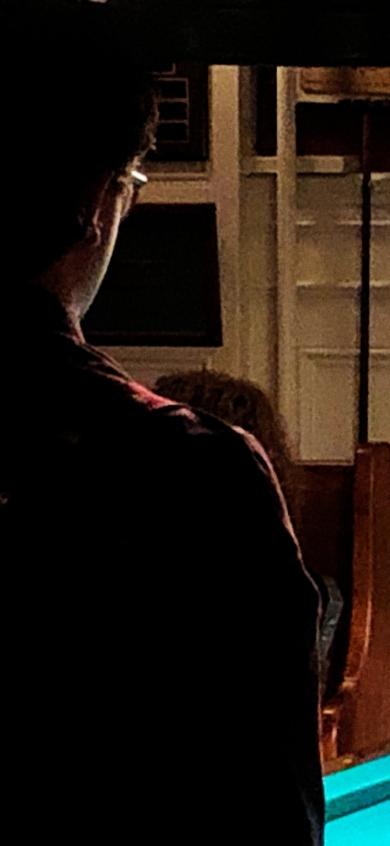
scape CONTEMPORARY ART REVIEW Land Special Edition
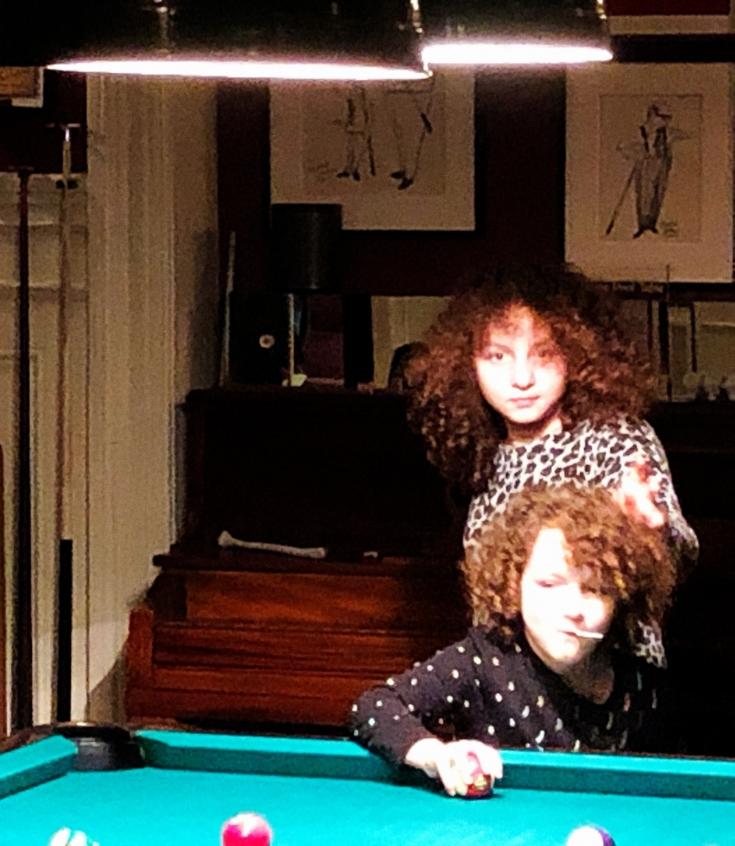
scape Land CONTEMPORARY ART REVIEW
Christopher
Fluder
Sisterhood
2019, photograph, archival pigment print, Ed.5+AP, 38x51 cm.
Rivington-on-Bowery
2020, photograph, archival pigment print, Ed.5+AP, 35x35 cm.
Revealing what lies beneath our symbols and totems, the passage of time in paste art-strewn alleys serves to further define the urban condition: for better or worse, a witness to transition forced upon us.
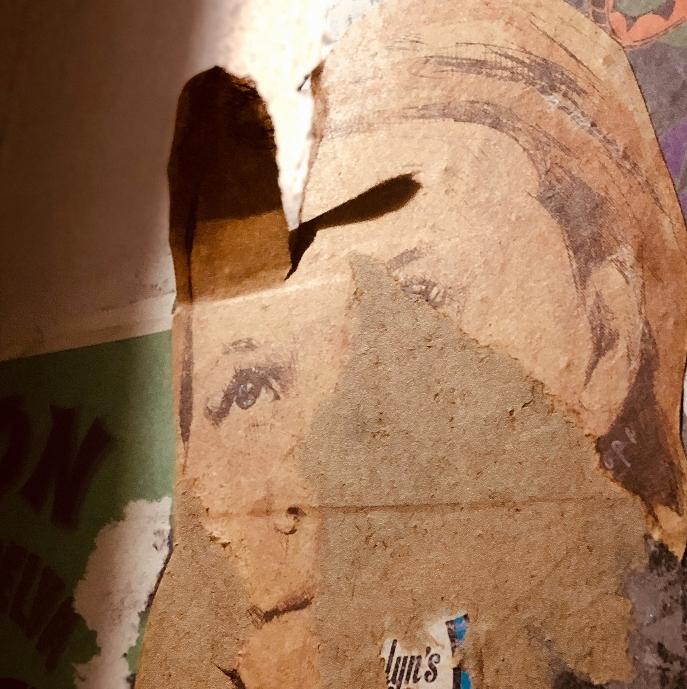
Land scape CONTEMPORARY ART REVIEW Special Edition
you think that artists can raise awareness to an evergrowing audience on topical issues that affect our everchanging society?
Christopher Fluder: Can an artist, and have I, raised awareness to an “evergrowing audience” on myriad issues? Of course. Doing so in the face of societal upheaval and cultural adversity is a challenge we are all facing.
Personally, I feel a responsibility to expose, highlight, and examine human evolution as much as the human condition. Authoring the unknown and lesser told chapters of history through my film work is the sincerest thing I can do: my part in looking after the future and taking that responsibility seriously.
Over the years your artworks have been showcased in a number of occasions, including your current participation in Seasons, and you are going to participate in the group exhibition Silence, at PH21 Gallery, in Budapest, Hungary: how do you consider the nature of your relationship with your audience? By the way, as the move of Art from traditional gallery spaces, to street and especially to online platforms — as Instagram https://www.instagram.com/silva_vocat/ — increases, how would this in your opinion change the relationship with a globalised audience?
Christopher Fluder: We’re well past online/street being viewed as disruptive. It has already moved from one to the other; the traditional gallery space as we knew it is moribund.
The new normal, if you wish to employ the prefix “new,” is seemingly a stopover on a much more radical trajectory.
We have really appreciated the multifaceted nature of your artistic research and before leaving this stimulating conversation we would like to thank you for chatting with us and for sharing your thoughts, Christopher. What projects are you currently working on, and what are some of the ideas that you hope to explore in the future?
Christopher Fluder: I will be directing a feature my wife and I optioned and adapted from Laszlo Santha, a Tisch professor of mine. The script, Strangers, is a Cold War drama set in 1970s Budapest about coming of age in an era of suspicion, oppression, and revolution. After living through the pandemic’s more mercurial episodes, we’re readying to shoot in Budapest this year.
An interview by Josh Ryder, curator and Melissa C. Hilborn, curator landescape@europe.com
Christopher Fluder scape Land CONTEMPORARY ART REVIEW
LandEscape meets
Kinnari Saraiya
Kinnari Saraiya, born in Bombay, India, addresses contemporary discourses of the imperial past from a post-colonial standpoint. Her grandfather has seen the final days of the British Raj to the early days of Indian independence and the post-colonial effects of it today. Her art practice, inspired by the stories engrained in her being, narrates the silences in history. She explores the absence of presence through sculpture, mixed media drawings and digital gif animations. She gives voice to the architectural landscape that is regarded as a silent witness of the British Raj and transforms it through contemporary techniques like laser-cutting and moulding. Further decolonising materiality in contemporary art, she hero’s chilli powder in her work to reflect domesticity and a sense of home through a spice that is vibrantly red and hot, symbolising violence. These, coming together as a cautionary tale, contemplates the duality of creation and destruction, past and present. While the voice is faded and neglected in their existence in the landscape, her responses allow space for reflection and speculation.
She received her BFA with honours from Arts University Bournemouth in 2020, where she was awarded the Dean’s Prize for excellence in creativity for her recent project ‘Victoria Terminus’. The same project won the runners up prize at An Indian Festival 2020 and was shortlisted for the New Emergence Art: Unity Award in 2020.
She has exhibited in solo shows both nationally and internationally, the British Pavilion’s basement at the Venice Biennale being one of them. Some of her notable group shows were held at London Metropolitan University in collaboration with the British Council (2020), Doug Adams Gallery in California (2020), Fort Mason Centre for Arts and Culture in San Francisco (2017), L.S Raheja School of Art in Bombay (2016) and many more. Her upcoming show, co-curated by her and Helen Starr, in collaboration with Chaos Magic Space and D-Unit is due to open in 2021.
landescape@europe.com
Hello Kinnari and welcome to LandEscape.
Before starting to elaborate about your artistic production we would like to invite our readers to visit https://www.kinnarisaraiya.com in order to get a wide idea about your multifaceted artistic production, and we would start this interview with a couple of questions about your multifaceted background. You have a solid formal training and you hold a BFA with honours, that you received from Arts University Bournemouth: how did those formative years influence your evolution as an artist? Moreover, are there any experiences that did particularly help you to develop your attitude to experiment?
Kinnari Saraiya: Actually, before I started my
course at Arts University Bournemouth, I did 2 years of Fine Art education in India and a year in the United States. I’ve been fortunate enough to receive such a wide range of educational approaches to Fine Art, while some focused on understanding the technicality of a material and the method, the others let conceptual research drive the process. I’ve always tried to find this balance in my works, of concept and of embodied practice that can be decoded and translated. Something I miss about university is having a group of intellectually diverse people at close enough proximity to hold informal critiques at any hour of the day.
One of our semester challenges was to make work and exhibit anywhere but in a gallery space or a traditional exhibiting space. So, two of my friends and I found the exact opposite,
scape Land CONTEMPORARY ART REVIEW
An interview by Josh Ryder, curator and Melissa C. Hilborn, curator
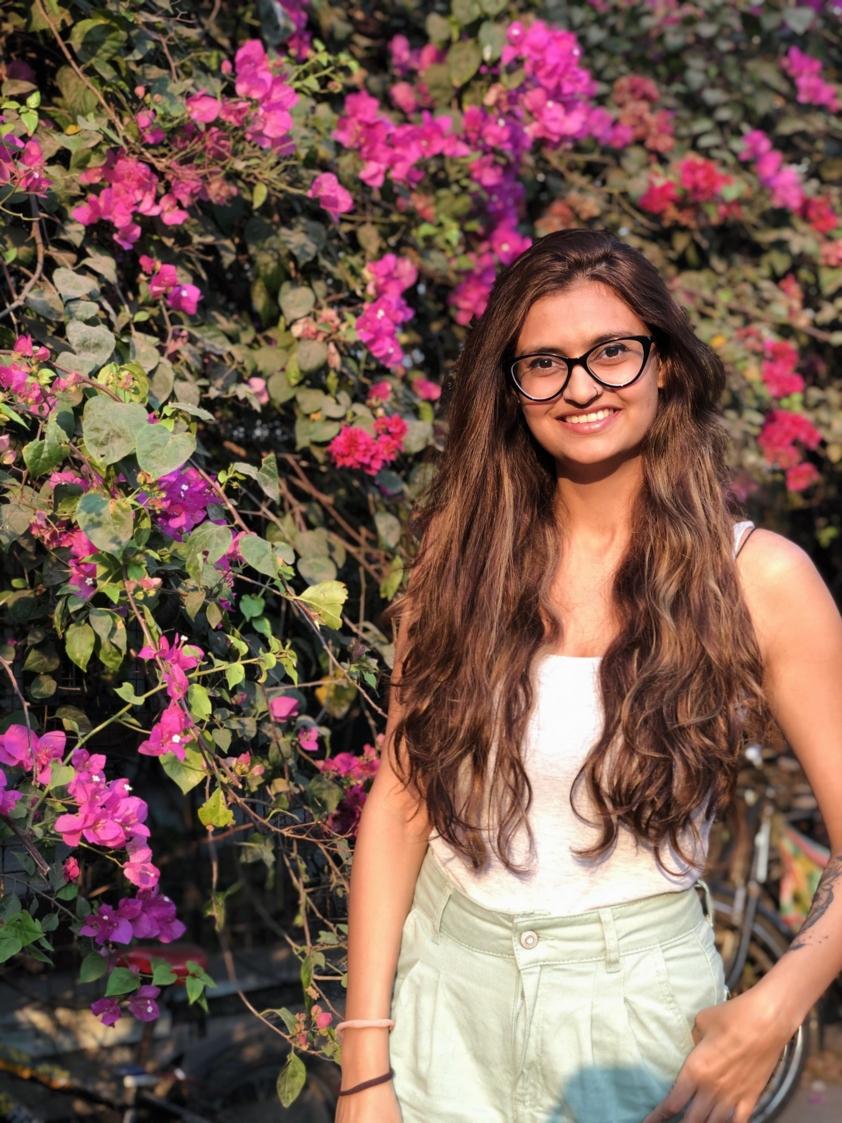
IT AIN'T SO PRETTY
Approx. 210x125 cm
Paper and acrylic paint
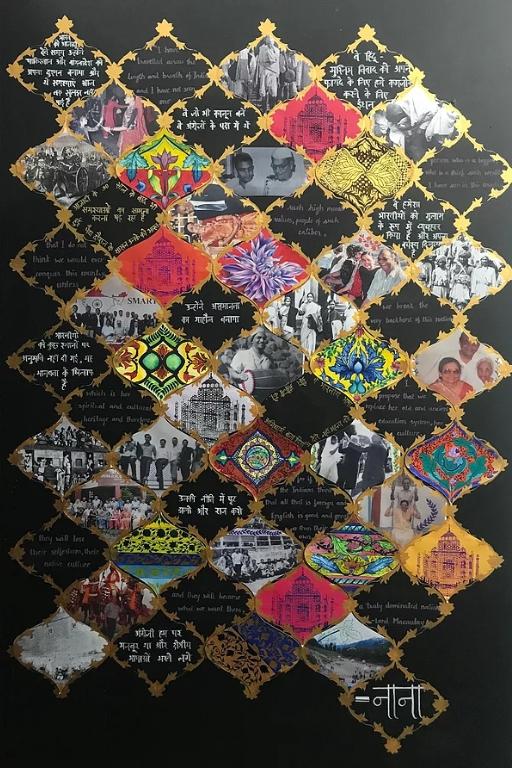
2018
an abandoned house, ruined to its bare bones with leaves growing through the roof and wet mud sinking in the floorboards. The interesting part is that it stands amongst some of the most prestigious houses in South England. So then the challenge was, how do you differentiate a work of art in a space that could be a work of art in itself?
Art is incredibly subjective, so formal education taught me to keep experimenting and trying till I found the material I resonate with, till I find the process I’m most comfortable with and then take that, and experiment more with it. It never stops, we’re curious beings. How far can this particular material go before it starts becoming something else?
You draw inspiration from the stories ingrained in your culture — your mixed media work It ain't so pretty is a brilliant example of this aspect of your practice — and it's important to mention that your grandfather has seen the final days of the British Raj to the early days of Indian independence and the post-colonial effects of it today: how do you consider the relationship between Past and Present playing within your practice, and how does your cultural substratum address the direction of your current artistic research?
Kinnari Saraiya: The effects of colonialism have not an end, but a remnant. Could we ever decolonise our minds?
I usually bring in the voices of those ‘witnesses’ that don’t have a voice of their own, traces, remains, archives, architectural structures of the Victorian Era, monuments etc because in their appearance, we’re not in the realm of true memory but of history. Concrete structures are a visual emblem of the Empire,
even after its end. These were built before our existence, becoming a portal into the past and will stand after our demise, depicting the future. They merge the past and the future, presenting a continuum of thought and politics. Pulling them out of their natural habitat, the landscape, where we have become ignorant of their existence and placing them in a space where they can’t go unnoticed, has the potential to recontextualize, to work through and imagine beyond our histories.
I talk about the modern-day whitewashing of cultural identity and heritage quite a lot in my work and this rises from the conveniently adjusted story that is history. For me, I grew up around colonial remnants in Bombay, not necessarily celebrated but existed. Some of these were worn down, very reflective of the time that has passed since independence. But as soon as I moved to London for further studies, I was suddenly surrounded by a different narrative of history. My history books in school told me that Winston Churchill was responsible for the genocide that was the Bengal Famine, but the British landscape reflected him to be the hero of the nation. Queen Victoria’s plinth remains intentionally empty in Bombay, but the Victoria Memorial in London remains a historic landmark.
Realising that the colonial statues and what they represent can somehow become the sanitizers of truth has definitely questioned my memory surrounding the Empire.
For this special edition of LandEscape we have selected Victoria Terminus, a stimulating project that our readers have already started to get to know in the introductory pages of this article. What has at once captured our
Kinnari Saraiya scape CONTEMPORARY ART REVIEW Land
attention of your work is the way it challenges the languages of monuments to urge the viewers to question historical issues: when walking our readers through your usual setup and process, would you tell us how you developed the initial idea of Victoria Terminus?
Kinnari Saraiya: For the purpose of my education, I had been outside of India for 3 years before I decided to come back for a month’s holiday. This is important to mention because as Neri Oxman says ‘You have to go away to come back home. You never truly have a sense of home until you leave home.’ So when I did come back, I saw home from a whole new perspective. Things that I had gotten used to in my landscape became more evident than ever before. One such architectural marvel that had receded in the background of my everyday life was the Victoria Terminus building in Bombay, now called Chhatrapati Shivaji Terminus. Named after Queen Victoria and built to commemorate her Golden Jubilee as the Empress of India, her statue was placed at the center of the building in a niche. After independence, either the statue went missing or the government took it down but there’s no trace of it. I noticed the empty niche and asked the security who told me about the mystery of the statue. This drove me to create work that replicates the plinth where she once stood and actively reject her presence on it. Arising from the idea of home, I painted the plinth in Chili Powder. It’s a spice that clouds the aroma of every home in India and it’s the spices that lured the British to ‘discover’ India and make it their home.
Victoria Terminus and your artistic production in general derive from history, and mostly from history about colonization, to highlight questions passed over silence by mainstream

scape CONTEMPORARY ART REVIEW Land Special Edition
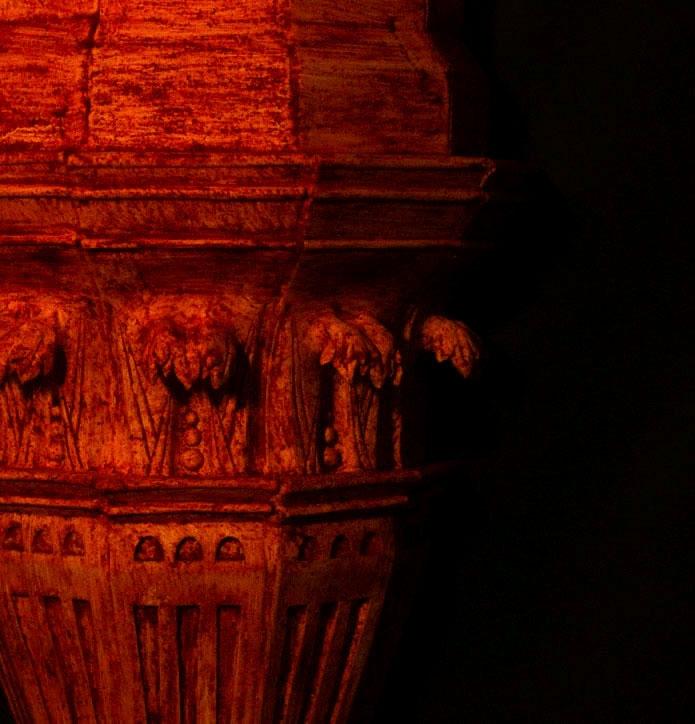
scape CONTEMPORARY ART REVIEW
Kinnari Saraiya
Land
Victoria Terminus
Inspired by the niche in the Victoria Terminus, Bombay, India.
Installation: 8 x 4 ft Wall space
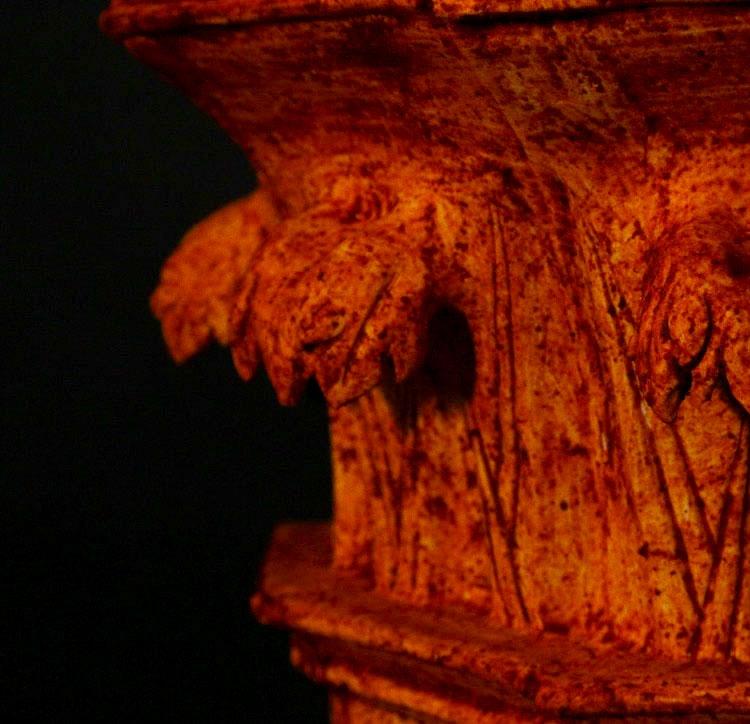
scape CONTEMPORARY ART REVIEW Land Special Edition
Victoria Terminus
Inspired by the niche in the Victoria Terminus, Bombay, India.
Installation: 8 x 4 ft Wall space
narrative. Visual artists from different eras — from Eugène Delacroix, passing through Pablo Picasso, to more recently Fang Lijun — use to communicate more or less explicit messages in their artworks: do you think that artists can raise awareness to an ever growing audience on topical issues that affect our ever changing society? In particular, how do you consider the role of artists in our globalised and ever growing society?
Kinnari Saraiya: Through art, we have before us an avenue for understanding and appreciating the extraordinary diversity of thought, feelings, culture, complexities and what ifs. Art lets us imagine a world where hierarchies were different, humanity was restored, and climate was unaltered without having to commit to these ideas of radical change. That’s where art is different from political campaigning. Art does not have to change the physicality of the world we live in; it changes the mentalities of the people we live with. It can feel like the world we live in is the only option, what is happening and how we are treated is the ultimate truth and that acceptance was key, but art and culture can expose us to a multiplicity of possible futures. To quote Olafur Eliasson, ‘art does not show people what to do yet engaging with a good work of art can connect you to your senses, body, and mind. It can make the world felt.’ So, as artists, I believe we have the responsibility of presenting an alternative to the truth of the society that we can’t come to terms with. For me, that’s the convenient amnesia towards the British Empire masked under commemorative statues.
We have really appreciated the way Victoria Terminus challenges the viewers' perceptual parameters, and more in general, the way you introduce the idea of visuality as the ultimate truth, to shed a whole new light to
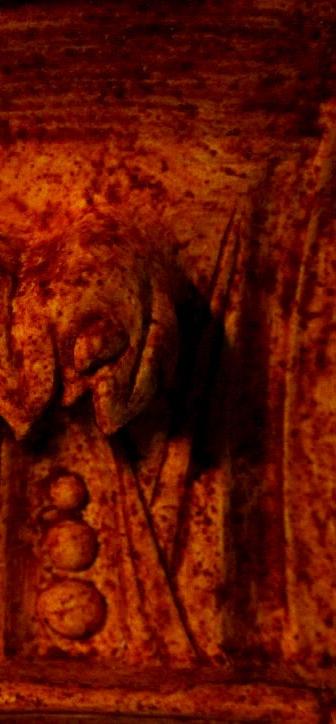
Kinnari Saraiya scape CONTEMPORARY ART REVIEW Land
architectural landscape and the stories hidden in it. We dare say that you practice seems to make the viewers question the reality of the situation, providing the spectatorship with freedom to realize their own perception: as an artist particularly interested in recontextualizing public monuments, how important is it for you to trigger the viewers' imagination in order to address them to elaborate personal interpretations? In particular, how open would you like your works to be understood?
Kinnari Saraiya: My work is inspired by the very personal stories that are ingrained in my being, through the stories passed down generations, my experiences growing up in Bombay and living in London and primarily speaking a language that I can’t call my own, not by choice but by the system dictated by the powerful. Since most of my work so far has been exposed to British or European audiences, making it universal just then means making it palatable for the white and privileged, which has essentially made up the visuality that I’m challenging through my work. In that sense, universal is far from universal. I believe that, the more intricate and deeply felt a work of art is, the more relevant it can become; the more general and universal it tries to be, the more it loses its power to move us. True universality may be a myth, and an oppressive one at that, but if universality can be achieved through the personal, it can cause an impact like none other. I can only hope that my work achieves that balance.
You are a versatile artist and drawing inspiration from the Past, you create stimulating artworks through contemporary techniques like laser-cutting and moulding, as in the interesting installation Coexist: how do
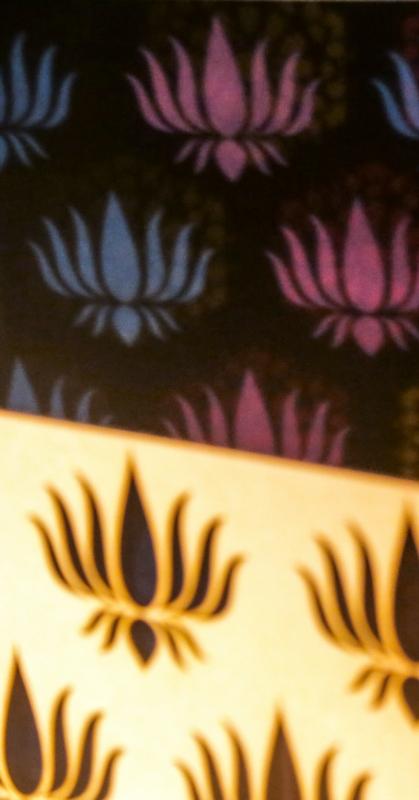
scape CONTEMPORARY ART REVIEW Land Special Edition
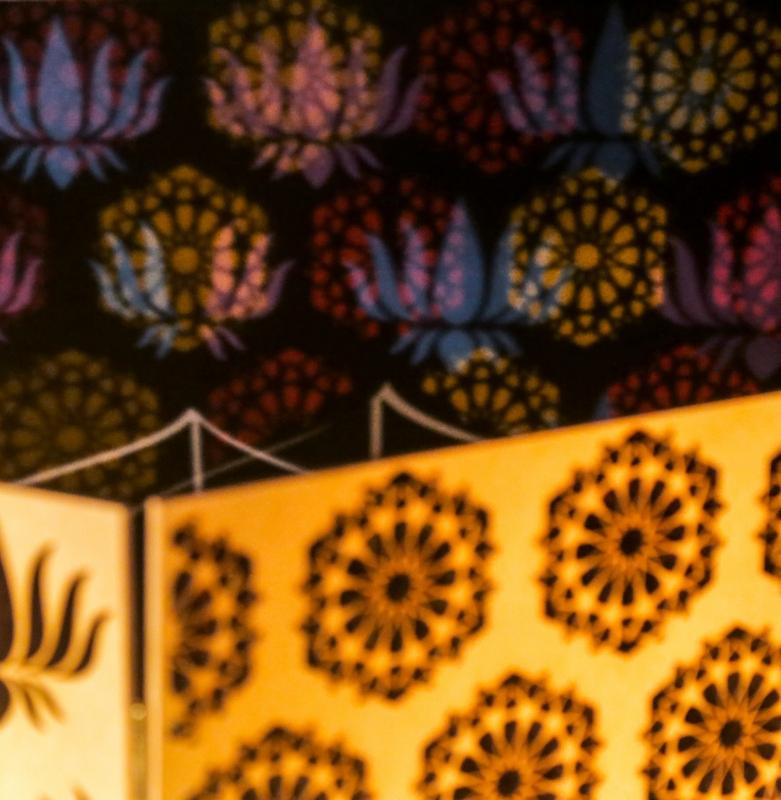
scape CONTEMPORARY ART REVIEW Land COEXIST 90x160x1 cm
coloured cellophane 2018
Kinnari Saraiya
MDF and
COEXIST
90x160x1 cm
MDF and coloured cellophane

2018
COEXIST
90x160x1 cm
MDF and coloured cellophane
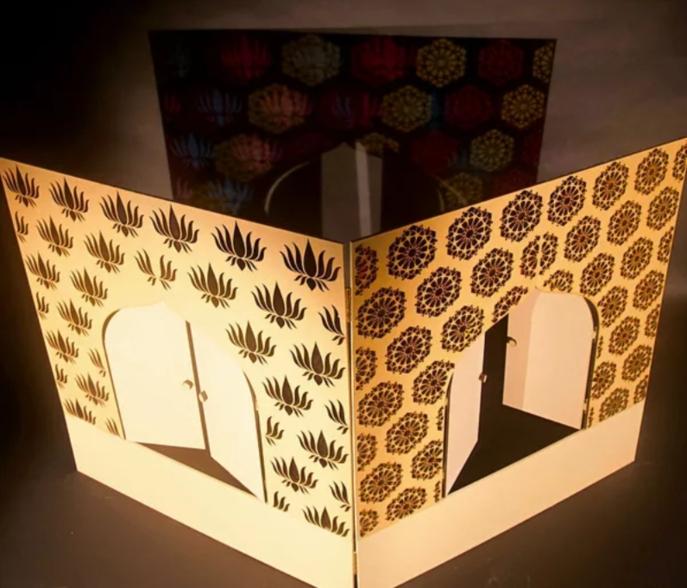
2018
you consider the role of technology in your artistic practice? In particular, do you think that your use of cutting edge techniques highlights the fact that your artworks establish a bridge, such a channel of communication between past and present, between Tradition and Contemporariness?
Kinnari Saraiya: The Indian Fine Art education,
when I was studying there, focused mainly on perfecting traditional techniques, the kind that the masters employed. So I’ve always had this formal training in sculpting with clay and painting with oils but for me, it’s interesting to twist these and forge these through new technology, recontextualising them and pulling their context from the past
CONTEMPORARY ART REVIEW Land
Kinnari Saraiya
scape

Chess Drawing Series 1/14
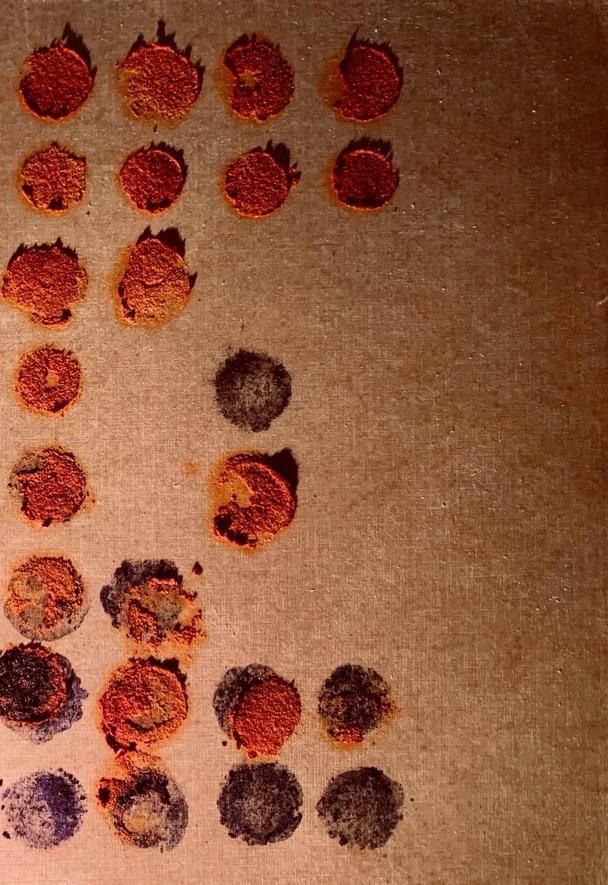 11 x 15 inch / 28 x 38 cm
Chilli Powder and Charcoal
11 x 15 inch / 28 x 38 cm
Chilli Powder and Charcoal
Chess Drawing Series
1/14
11 x 15 inch / 28 x 38 cm
Chilli Powder and Charcoal

into the present to question the future. If we can dive into the past, then the present is only the surface of the ocean - the opposite is true in the technicality of my work, the work presents itself to be mined from the past but hides the contemporariness underneath. Perhaps, in some ways, my work becomes a more accurate
version of the past, corrected by our later experiences.
As an artist particularly interested in giving voice to the architectural landscape, how do your surroundings and your everyday life's experience fuel your creative process?
scape CONTEMPORARY ART REVIEW Land Special Edition
LOOK DOWN ON ME AND REFLECT In response to Russell-Cotes Art Gallery and Museum
Site-Specific Sculpture
3 steps of 100cms x 30cms x 15cms each White laser cut acrylic, varnished wood and mirrors

Kinnari Saraiya: I’d like to answer this on the basis of something that Albert Camus said“No artist tolerates reality, says Nietzsche. Artistic creation is a demand for unity and a rejection of the world. But it rejects the world on account of what it lacks and in the name of what it sometimes is.”
The colonial relationship between India and England is something one cannot escape, it lives in the landscape, culture and attitude. The remnants of the colonial era invoke a sense of loss in my mind, loss of life, loss of validation and loss of identity. And I want to create something from that place of loss, not
scape CONTEMPORARY ART REVIEW Land
Kinnari Saraiya
LOOK DOWN ON ME AND REFLECT In response to Russell-Cotes Art Gallery and Museum
Site-Specific Sculpture

3 steps of 100cms x 30cms x 15cms each
White laser cut acrylic, varnished wood and mirrors
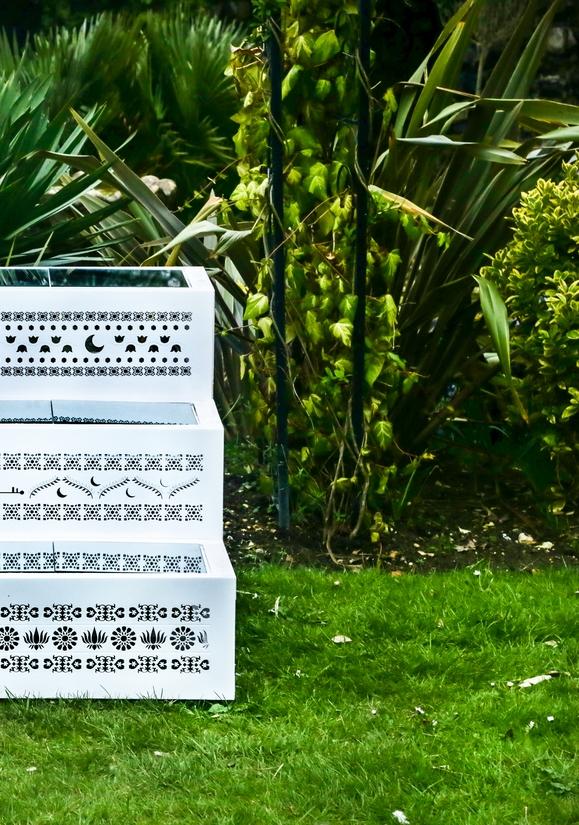
to erase or replace the original, but to build something from the ruins that can stand as a testament. Adding to the statement that ruins still live on and that the end of colonialism was not the end of the problem.
Symbols play an important role in your practice, and the steps in Look Down on Me and Reflect symbolise elevation and hierarchy: how do you consider the role of metaphors playing in your artistic practice? And how important is it for you to create artworks rich in allegorical qualities?
Kinnari Saraiya: All the world's truth is hidden in symbols and cryptic messages and we spend our lives unfolding those truths in our own ways, don’t we? Divided by language, we’re united by symbols and metaphors. Everyone, from any part of the world would understand ruins of the landscape in the same way. There is a consciousness of the history, of its destruction in the landscape, of a past and a kind of potential within the ruins, not through the words that describe it but through the image that captures it. I’m keen on capturing the universal through the personal. For me, it starts internally, it starts from the stories in my mind that are somehow projected into the real world in the form of architectural remnants, traces of what once was which then becomes a source of my works. Through the work Look Down on Me and Reflect, I’m revealing hierarchy through a stairway of mirrors but I conveniently place it on the ground, compelling the viewer to look down and reflect on the same hierarchy that was dictated during colonisation.
You are an established artist: '‘Victoria Terminus’' won the runners up prize at An Indian Festival 2020 and was shortlisted for the New Emergence Art, and over the years your have exhibited in solo shows both, nationally and

scape CONTEMPORARY ART REVIEW Land Special Edition

scape CONTEMPORARY ART REVIEW Land
Victoria, Fragile Series 2020
Kinnari Saraiya
Queen
Charcoal on textured paper 35.5 x 25 cm
Inspired by the niche in the Victoria Terminus, Bombay, India. Installation: 8
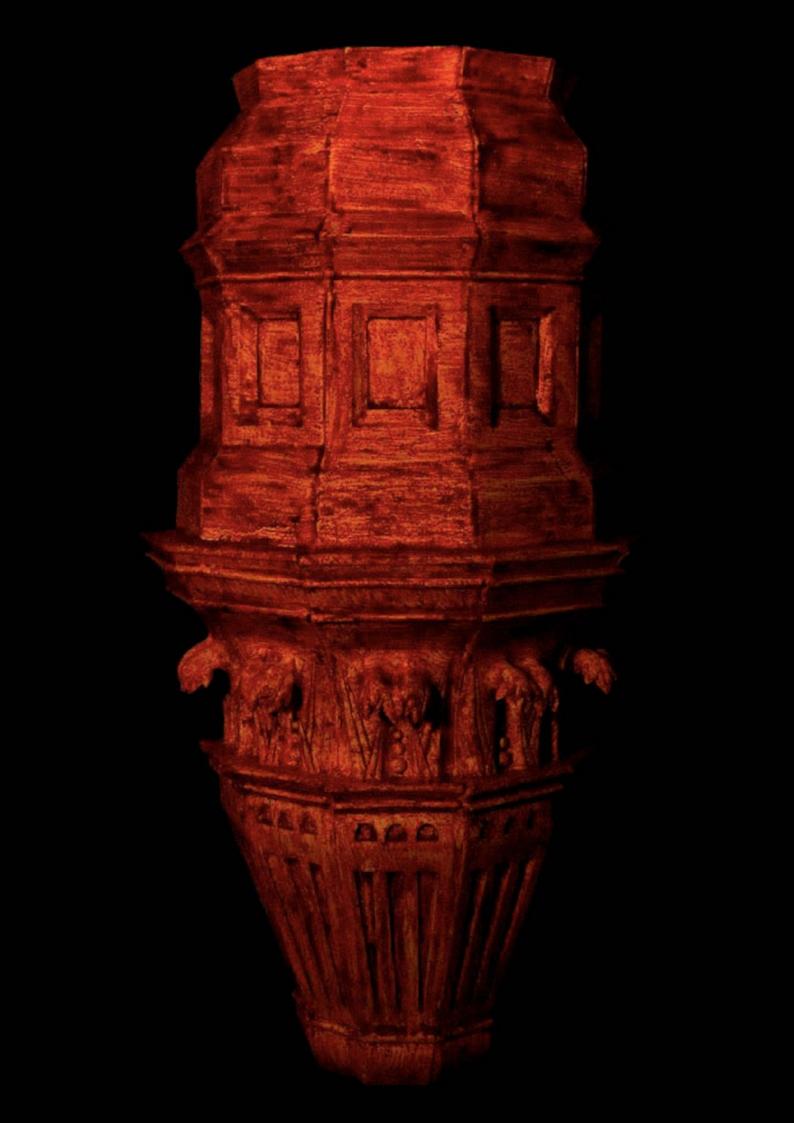 Victoria Terminus
x 4 ft Wall space
Kinnari Saraiya
Victoria Terminus
x 4 ft Wall space
Kinnari Saraiya
internationally, including your participation to the British Pavilion’s basement at the prestigious Venice Biennale: how do you consider the nature of your relationship with your audience? By the way, as the move of Art from traditional gallery spaces, to street and especially to online platforms — as Instagram — increases, how would in your opinion change the relationship with a globalised audience?
Kinnari Saraiya: I like work that catches me off guard, the kind that can hit my reality with a brick when I wasn’t prepared for it. In a way, Instagram shatters the elitism surrounding traditional art spaces, because it doesn’t matter who you know and where you live, the audience is global. But, what I’m cautious about when making work for the screen is the flattening of the experience and the divide it creates between the digital haves and have nots which is majorly guidednot by choice, but by economic inequality. Personally, there’s something about displaying my work in a physical black cube that I enjoy, the void, a space where everything can become a deadend except the artwork that’s in there. I’m somehow sucking the audience in like it's a black hole, there’s no escape, they’re forced to face reality.
Although my works are not intended for social media, they do live on my profile: @kinnarisaraiya / https://www.instagram.com/kinnarisaraiya/
We have really appreciated the multifaceted nature of your artistic research and before leaving this stimulating conversation we would like to thank you for chatting with us and for sharing your thoughts, Kinnari. What projects are you currently working on, and what are
some of the ideas that you hope to explore in the future?
Kinnari Saraiya: Thank you so much for having me, your questions compelled me to dive deeper into my own practice and share the most intimate details. Thank you to all the readers as well for keeping up with my practice thus far, I hope that you can stay with me while I develop further and explore more. Since the pandemic hit, I was selected as one of the 16 Core Resident Artists at Spur World, which was supported by many organisations as a response to lack of opportunities for the 2020 graduating cohort. We’ve been in workshops and mentorship sessions to develop a piece of work that’s due to be in exhibition from the 1st of April 2021. My world is called ‘End Game’, A chess board set within London’s Parliament Squarewhere Winston Churchill’s statue stands opposite Mahatma Gandhi’s statue - unlocks the endless ruin of minds and thoughts that decided the fate of the empire. The game becomes a dramatic spectacle of the British Empire unfolding through non-violence on the chess board. After which I’ve been in 2 virtual residencies hosted by organisations in the United States and Austria.
I’m supposed to go to Russia for a residency when the pandemic settles and it’s safe to do so. So, definitely some new exciting works in process. You can visit my websitewww.kinnarisaraiya.com & follow me on my instagram -
https://www.instagram.com/kinnarisaraiya/
scape CONTEMPORARY ART REVIEW Land
An interview by Josh Ryder, curator and Melissa C. Hilborn, curator landescape@europe.com
LandEscape meets
Memoticon
Emotion and reason have long been considered opposites, mostly to subordinate the alleged feminine to the alleged masculine. Unless, that is, a male artist's works express feelings, urges, and passion, which has been traditionally regarded as a sign of g reatness.
Even recent research shows gender bias in art evaluation: In a recent experiment conducted by Adams at al. (2018), participants could not tell the gender of the artist by merely looking at paintings beyond statistical chance. However, participants who often visit art galleries, along with affluent individuals and male respondents, appreciated paintings less when they guessed that the painting was made by a female artist. Art auction figures also show gender imbalance: A comprehensive study done by the same authors found a 47.6% gender discount in auction prices for paintings based on 1.5 million auction transactions in 45 countries. As Adams and her colleagues succintly observe, “women’s art appears to sell for less because it is made by women.”
With our series entitled Axioms of Passion, we subvert common codes of art evaluation by not telling perceivers which of us created which piece. In other worlds, we do not reveal the truth about which pieces, if any, have a proper penis connection. For the 2021 edition of “LandEscape Now!”, we took our project further: We made it more interactive by randomly labeling pieces — based on coin flipping — with “Made by a male artist” and “Made by a female artist”, in each case adding the question, “How much do you think this piece is worth?”
Thus, our tree series reflects on, and makes visible, the cultural landscape we are surrounded with whilst creating and appreciating art even if we are often not aware of it. Albeit “cultural landscape” might seem to be used in a metaphoric sense here, its effects are quite concrete. Furthermore, our series does not merely symbolize an already existing cultural landscape: Through initiating a dialogue with viewers — who themselves are also part of that landscape —, we aim to provoke a conscious reflection on deeply ingrained biases against women. We hope, therefore, that the project will contribute to an escape from a centuries-old landscape to give way to less biased and more democratic surroundings.
An interview by Josh Ryder, curator and Melissa C. Hilborn, curator landescape@europe.com
Hello and welcome to LandEscape. Before starting to elaborate about your artistic
production and we would like to invite our readers to visit in order to get a wide idea about your mulifaceted artistic production. It's important to remark that Memoticon is the result of a proficient collaboration between creative
scape Land CONTEMPORARY ART REVIEW
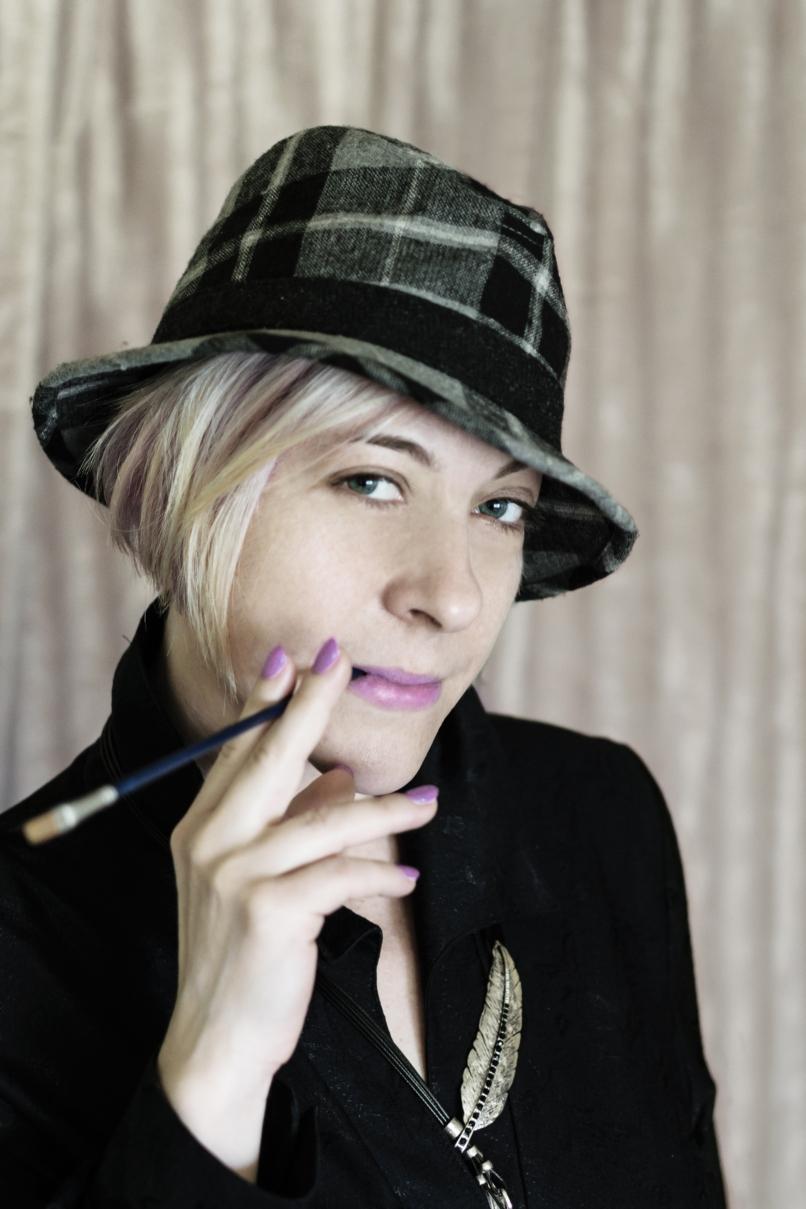
We are a female-faced conceptual artist unit with somewhat unusual backgrounds involving, among others, philosophy and translation. Currently, we are outsider artists, striving to integrate into the art world whilst retaining some of our brut point of view and questioning certain implicit rules of the game. For instance, at the moment, we don’t feel like talking about ourselves in the third person to pretend that someone else wrote something objective about us. Instead of being afraid to honestly point out our strengths, we dare claim that part of our artistic values stems from our unabashed subjectivity. Should you be interested in our story, feel free to read about us at https://memoticon.art/who.

scape CONTEMPORARY ART REVIEW Land Special Edition
minds from different fields: could you tell us something about this proficient synergy? Can you explain how your work demonstrates communication between artists from different backgrounds?
Memoticon: Hello and thank you for the opportunity to present ourselves.
When collaborating on a piece, we discuss the steps to be taken in advance or on the fly depending on the project, and we proceed accordingly. In general, one of us is better at coming up with execution-related ideas and at the execution itself of visual pieces that require patience with technicalities, while doing research along with devising verbal and visual ideas suits the other member of our unit better.
Contrary to Sol LeWitt, we do not believe that “the execution is a perfunctory affair” compared to the alleged supremacy of ideas. We do not believe in the distinctions we have just used for simplicity, either. For instance, written texts, which we consider integral parts of our artistic practice, are also visual and demand patience with technicalities. We also gravely oversimplified and deliberately distorted the nature of our collaboration above so that we can stay true to our intention of obscuring our exact roles in our artistic production.
We admit, though, that whilst we tend to get along quite well, one of us is not particularly fond of the consequences of using glitter, which shows up everywhere no matter how hard we try to clean up the place. This is one of the reasons why we work hard, still continuing our Pop Art period, so that we can have a home with a separate studio space. To eliminate the glitter problem.
For this special edition of LandEscape we have selected Axioms of Passion, a stimulating series that our readers have already started to get to know in the introductory pages of this article and that has at once captured our attention for its ability to force the viewers' perception, urging them to continuously switch between the instinctive tendency to decypher the reminders to figurative elements, and the aesthetic appreciation of the unique abstract feeling: when walking our readers through your usual setup and process, would you tell us how do you usually develop the initial ideas for your artworks? In particular, do you create your works gesturally, instinctively? Or do you methodically transpose geometric schemes?
Memoticon: For this series, we departed from an actual tree nearby and transformed its shape in diverse ways. On the one hand, it was our intention to enable free expression of emotions, urges and moods in accordance with the series title, so we left plenty of room for spontaneity. On the other hand, since we are interested in questioning the validity of certain widespread distinctions, we used geometric schemes partially methodically, in that it was also part of our core ideas to create a series in which pieces either “in themselves” or as part of the series blur the lines between figurative and abstract art.
One painting was not even part of the series originally. When a professor saw some our works belonging to the series along with that piece, he started to talk about the tree in that painting with conviction. We liked the apparent fact that a tree could be perceived in a painting independently of our original intentions, and since the phenomenon fit into
Memoticon scape CONTEMPORARY ART REVIEW Land
our concepts for Axioms of Passion, we included the piece in the series under the title Tree? / Somewhat Puzzling (An Unshakable Orientation Towards the Question Mark in Springtime).
The main aim of your Axioms of Passion series is to highlight the theme of gender imbalance that still affect our globalised still patriarchal society — even and especially as regards the value of the work of art itself. To provoke the viewers, each work has been randomly labeled with “Made by a male artist” and “Made by a female artist”, with the question, “How much do you think this piece is worth?”. What kind of reactions do you aim to provoke in the viewers?
Memoticon: We aim to provoke in the viewers a reflection on their own views and potential biases concerning the relationship between the sex or gender of artists and the value of their artistic production, and, possibly, a reflection on whether they actually wish to own those views in the future.
Since Artemisia Gentileschi's times to our apparently likely open-minded art scene, women have struggled to find their voices, and are still discouraged from distancing themselves from traditional artistic paths: it will be a long process but over the last century we have already seen lots of original awareness among women artists, and especially in the last decades there are signs that something is — hopefully irreversibly — changing: what should be in your opinion the role of artists in order to raise awareness about such themes that can no longer be postponed?
Memoticon: Artists might be able to raise some awareness, but systemic changes require more
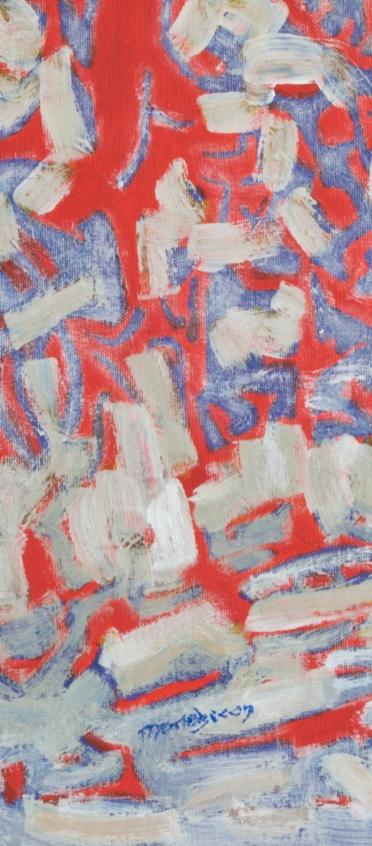
scape CONTEMPORARY ART REVIEW Land Special Edition
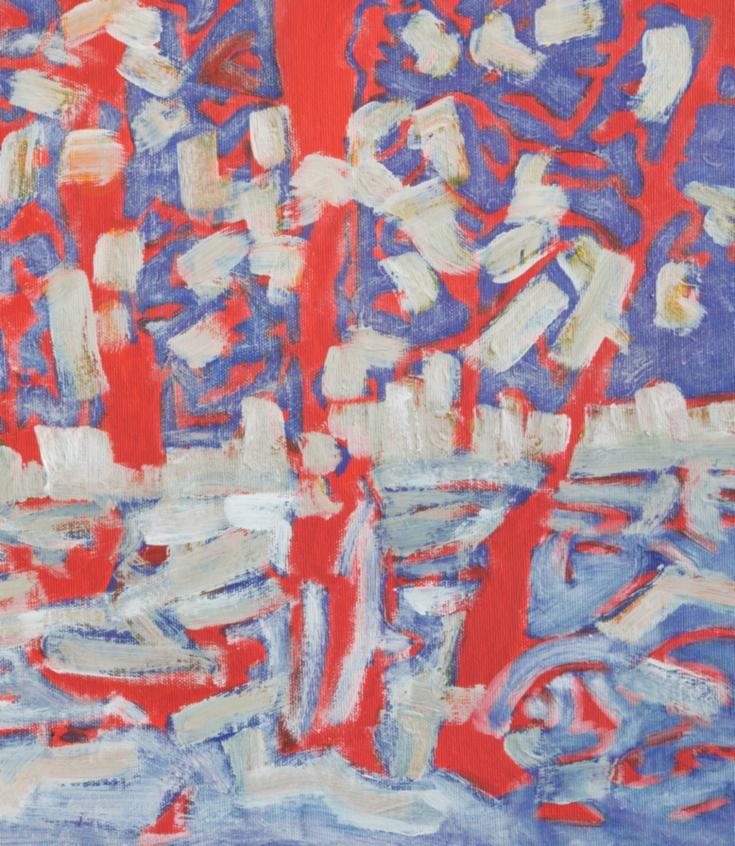
Memoticon scape CONTEMPORARY ART REVIEW Land
Windthrow
by a female artist .How much do you think this piece is worth?
Denim
Made
Draft of Longing
Made by a female artist
How much do you think this piece is worth?
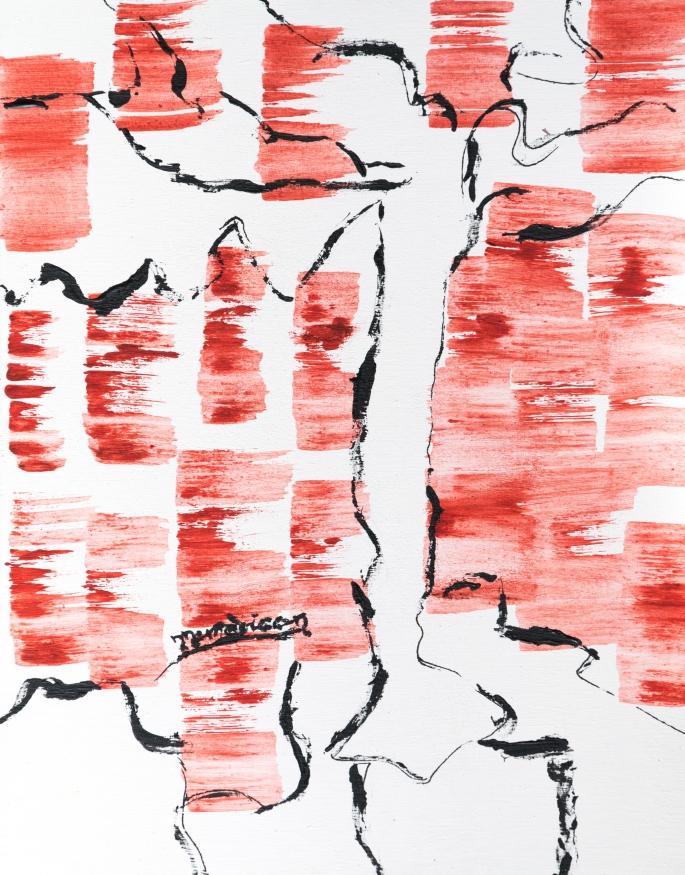
scape CONTEMPORARY ART REVIEW Land Special Edition
If Dalí's Clock Strikes
Made by a female artist
How much do you think this piece is worth?
than artist activism. For example, as Maria Hanson pointed out, the Guerrilla Girls’ whose works we admire, as well did manage to raise awareness of gender disparity in museum and gallery culture; yet nothing much changed between the 80s, when the group presented their first posters, and the first decade of the 21st century. Apparently, the tides are slowly changing; however, women artists are still vastly underrepresented
Thy Will with Mine
Made by a female artist
How much do you think this piece is worth?
in museums and the global auction market, as shown by Beatriz Lozano’s 2019 infographics on Artnet. We agree with Maura Reilly that beyond artists, support is also needed from curators, teachers, collectors, and the press to effect substantial changes. We are grateful that LandEscape contributes to changing the landscape.
Mexican artist Gabriel Orozco once highlighted

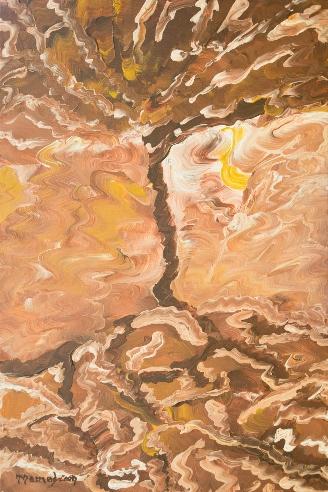
Memoticon scape CONTEMPORARY ART REVIEW Land
Magma in Our Veins
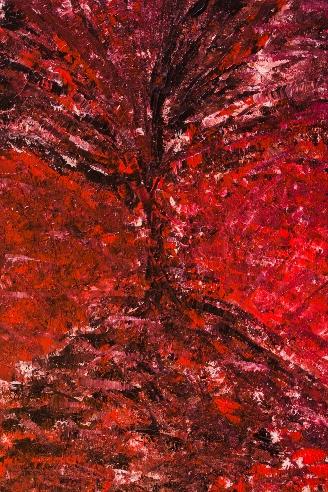
Made by a female artist
How much do you think this piece is worth?
the connection between creativity and the part of the world artists are in: do you think that your artistic research responds to a particular cultural moment? In particular, do you think that artists can raise awareness to an evergrowing audience on generic topical issues in our globalised age?
Memoticon: The issues that we have raised so far are topical in that gender biases and
A Queenite's Anticipation
Made by a female artist
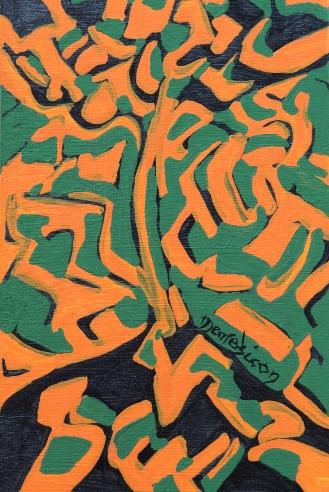
How much do you think this piece is worth?
inequalities in art and culture still exist today. Presenting Axioms of Passion, we also relied on quite recent research with regard to gender and evaluation of works of art, including art auction gender imbalance. In our ongoing series Gems of Wisdom: Comments on Great Minds, we explore possible modes of resistance concerning deeply ingrained cultural biases against women whose remnants still linger today.
scape CONTEMPORARY ART REVIEW Land Special Edition
Tree? Somewhat Puzzling
Made by a female artist .How much do you think this piece is worth?
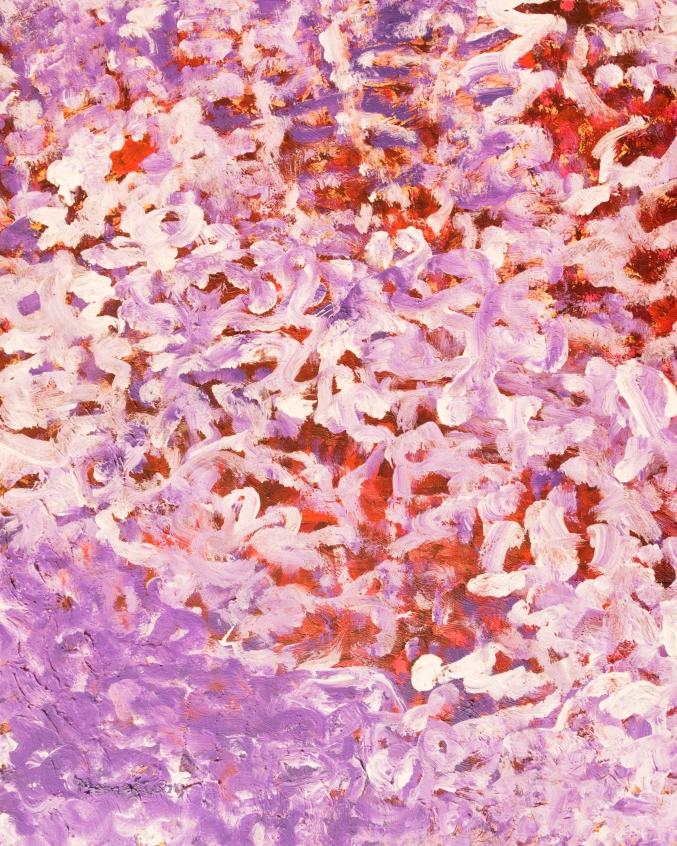
Memoticon scape CONTEMPORARY ART REVIEW Land
Knocking Spring
Made by a female artist
How much do you think this piece is worth?
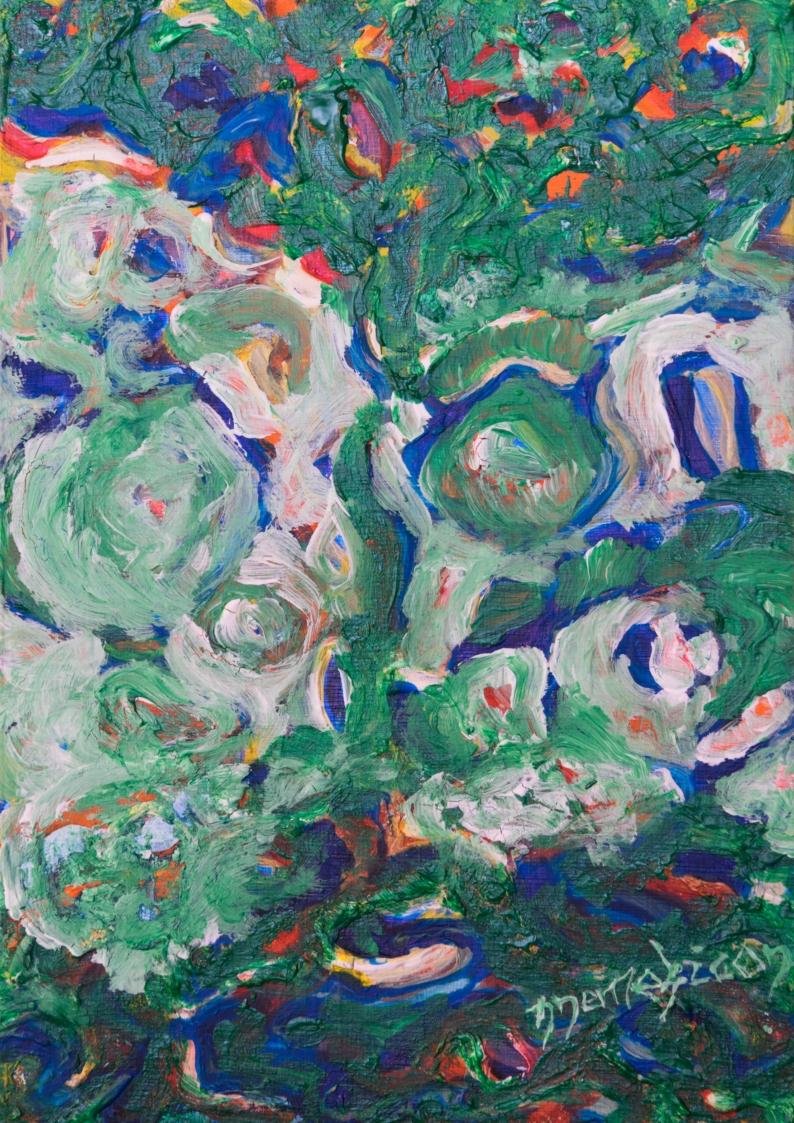
Dance Eversion
Made by a female artist
How much do you think this piece is worth?
Hopefully, now we have a better chance at being heard than, for instance, feminists had even a few decades ago, both owing to a more receptive cultural climate and a globalised audience.
As you have remarked in your artist's statement, your tree series reflects on, and makes visible, the cultural landscape we are surrounded. By challenging the viewers' perceptual parameters, your artworks invite your audience to discern and interpret. In this


Zonelet Twist
Made by a female artist
How much do you think this piece is worth?
sense, we daresay that your artistic practice seems to aim to look inside of what appear to be seen, rather than its surface, providing the spectatorship with freedom to realize their own perception: how important is for you to trigger the viewers' imagination in order to address them to elaborate personal interpretations? In particular, how open would you like your works to be understood?
Memoticon: With Axioms of Passion, it is our aim to orientate the viewers’ interpretation and evaluation of artworks towards
Memoticon scape CONTEMPORARY ART REVIEW Land
Soaring Anger
Made by a female artist
How much do you think this piece is worth?
cooperating in the creation of a less biased cultural landscape.
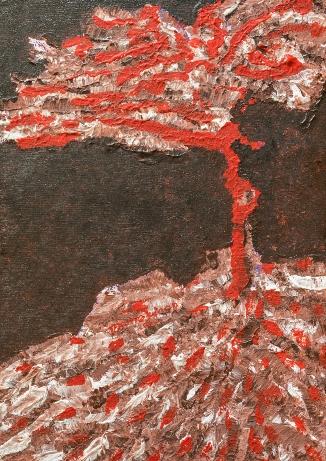
Nonetheless, what one wishes for is not necessarily what one gets, and viewers are free to use their imagination, interpretation, and perception.
Maybe strokes of true art were ensured by dexterous male hands, a passion for metaphysics, allusions to the Philosopher’s Tree, alchemical unification of knowledge and passion, tree of life, archetypal depth,
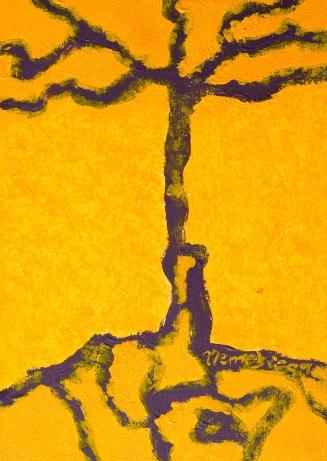
As an Aside
Made by a female artist
How much do you think this piece is worth?
postsecular, hyper-contextual, such an achievement. Or perhaps the same strokes were botched by a female hysterically pouring out her penis envy on the canvas, it’s plausible, but what if there’s a further twist in the story, what if the female-looking guy identifies as a male, maybe she he even acquired a penis, that would turn everything upside down, or perhaps not, perhaps we should positively discriminate her or him to save face, whether or not she or he has male genitals; after all, who knows these days, who knows, really?
scape CONTEMPORARY ART REVIEW Land Special Edition
I Seem to Be
Made by a female artist
How much do you think this piece is worth?
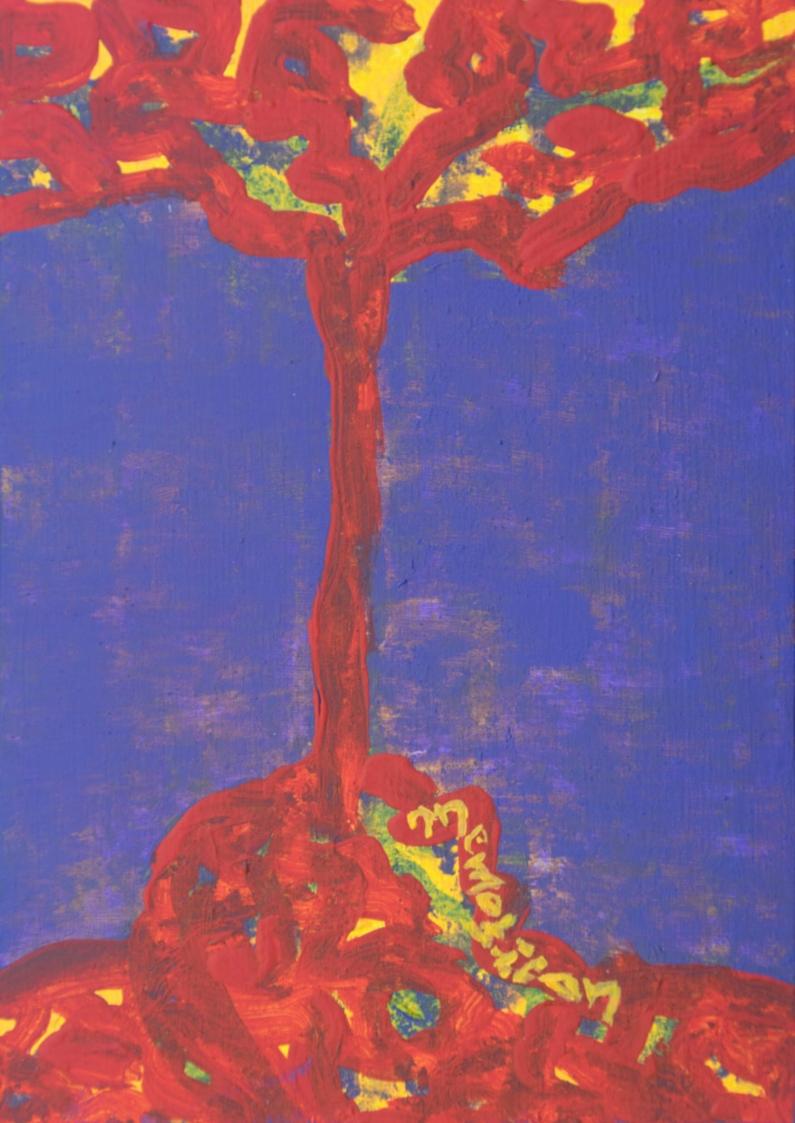
With their effective combination of thoughtful nuances and sometimes ambiguous patterns and geometries — as in the interesting A Queenite's Anticipation and Denim Windthrow— your works feature tension and dynamics: how did you come about settling on your color palette? And how does your own psychological make-up determine the nuances of tones that you decide to include in your artworks?
Memoticon: For the pieces of this series, we decided on the color palette based on our moods, as it fit the overall concept. Sometimes we reworked a painting after a while. For example, for the piece that eventually became Denim Windthrow, we originally used permanent yellow deep and violet with dark ultramarine and cadmium red, and we liked it that way. After almost a year, however, we felt an urge to change the painting, and that’s when we applied white paint.
The hybrid visual quality that marks out your artworks allows you to capture fleeting moments providing the viewers with such an emotional impact: how do you consider the role of memory playing within your artistic practice? In particular, how does your travels and your everyday life's experience fuel your creative process?
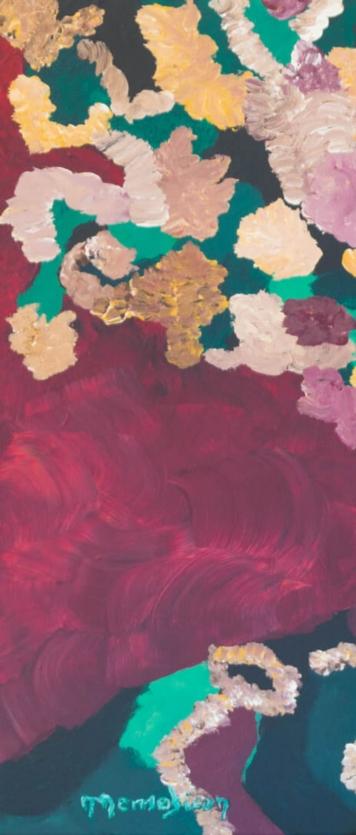
Memoticon: Yes, one of the reasons behind Axioms of Passion is that we wanted freedom to experiment with different styles and still have a series that can be regarded as coherent based on overall concepts and features, including the play with the idea and shape of trees.
Hybridity can also be considered a unifying trait in that experimenting with visual quality
scape CONTEMPORARY ART REVIEW Land Special Edition

Memoticon scape CONTEMPORARY ART REVIEW Land
by a female artist
much do you think this piece is worth?
Cherish Made
How
Then a Sigh
Made by a female artist
How much do you think this piece is worth?
characterizes the series.
As for the role of memory in our artistic activities, we certainly use memory while
creating; ergo, our creations are profound. For instance, from the depths of our memory, we sometimes recall our travels to

scape CONTEMPORARY ART REVIEW Land Special Edition
the toilet or to our laptops, or how we tried to turn off the tap in the kitchen that started dripping, or whether we left the light on in
the bathroom, thereby wasting precious energy and jeopardizing economic efficiency. In fact, we have already developed the idea of a small series entitled Memory, where we intend to maintain that the word in the title makes our pieces worth millions.
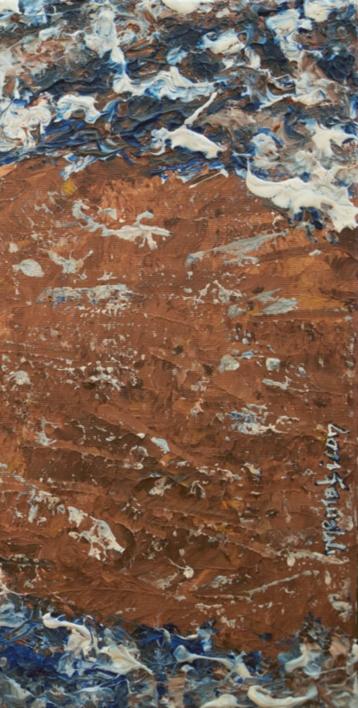
Our point is that “memory” seems to be a trendy meme in the art world, apparently used to indicate profundity or some other mysterious artistic quality. Probably due to our background as outsiders, the practice of throwing in a generic term for a fairly common faculty (or faculties) as a proof of high artistic value amuses us at best and seems to us a bad joke at worst (admittedly, with the exception of our planned series). For instance, some time ago, we read in an artist statement on the website of a prominent gallery that although the artist’s works seemed simple and quickly made, they came from the depths of his memory.
Quite clearly, the reference to memory was offered as a purported justification for high prices. Here, our own memory reminds us of “pseudo-profound bullshit,” a term coined by Pennycook at al. for assertions “constructed to impress upon the reader some sense of profundity”, truthiness or meaningfulness, whereas they are so vague and ambigous that they are actually vacuous.
For example, in case the underlying assumption is that memory usage guarantees high artistic value, then, arguably, all memoryrequiring actions, products, perceptions, data etc. of organisms and computers are of high artistic quality. One can certainly hold such a view; but then, we would expect at least some argument as to why memory automatically transforms everything it touches into a valuable artwork, and perhaps less bullshitting
scape CONTEMPORARY ART REVIEW Land Memoticon
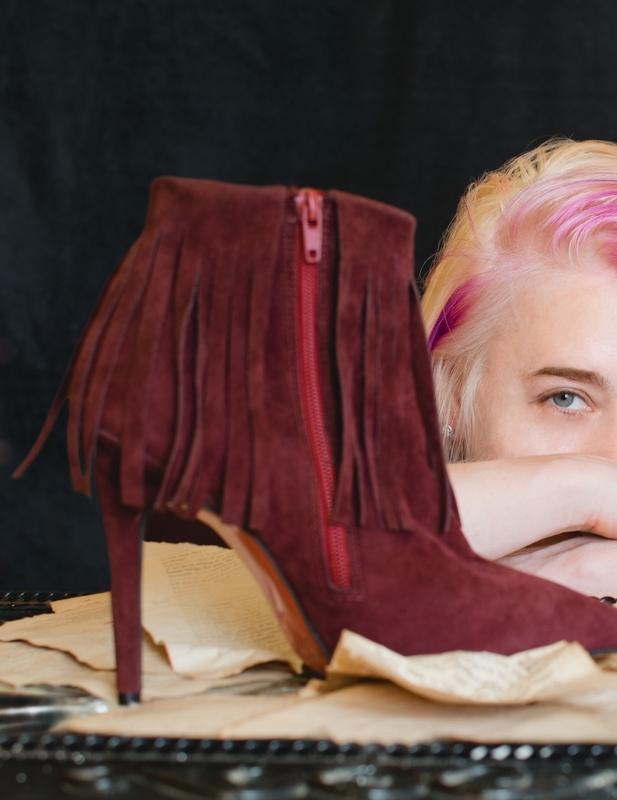
Kant
Reflections on

Embroidered Symphony
Made by a female artist
How much do you think this piece is worth?
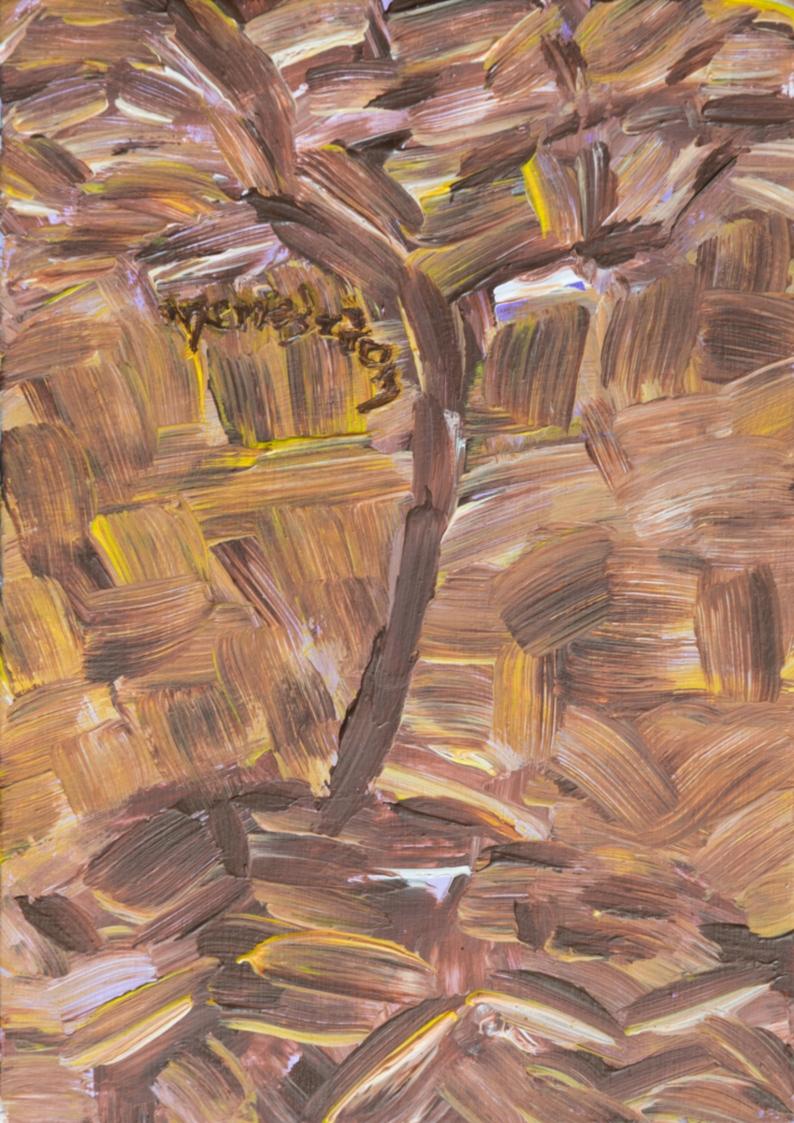
about exceptionally high prices.
Another interesting body of works that has particularly impressed us and that we would like to introduce to our readers is entitled COMMENTS ON IMMANUEL KANT #1 and we have really appreciated the way it questions the blurry boundaries between female and male identities. In particular, do you think that gender bias affect mostly male viewers or do you think that it's a general issue?
Memoticon: It seems to be a more general and complex issue. As Maura Reilly observes, bias in favor of males on the part of female arts professionals, including women curators, also forms part of the problem. On the other hand, she also cites a 2014 study conducted by the Association of Art Museum Directors, as per which more men occupy upper-level positions in museums than women, and female directors earn far less than the average male director. One of the experiments conducted by Adams at al. found that male participants, affluent viewers and individuals who often visit art galleries appreciated paintings less when they guessed that the painter was female. In another experiment where the researchers randomly associated female and male names with computer-generated paintings, affluent participants — especially those who visit art galleries or exhibitions — had a lower appreciation for paintings when they believed the artist to be female.
How do you consider the nature of your relationship with your audience? By the way, as the move of Art from traditional gallery spaces, to street and especially to online platforms — as Instagram — increases, how would in your opinion change the relationship with a globalised audience?
Memoticon: We have had mixed experiences with online platforms so far. People from around the globe express their appreciation for our works, which we are grateful for. We can also admire the works of others that we probably wouldn’t be able to see otherwise.
On the other hand, a globalised audience also means that complete strangers want things from you that you are not necessarily eager to provide. For example, when we created an artist profile on Facebook, we almost immediately received penis photos, gifs with pornographic content, blatantly fake offers to accept some stranger’s heritage who finds us trustworthy, and tons of messages basically about nothing. It amazes us how so many people seem to have plenty of time for trivial small talk. We don’t, and since we deemed maintaining several social media sites at once too time-consuming, we have temporarily shut down all except our Instagram site at https://www.instagram.com/memoticon.
We have really appreciated the multifaceted nature of your artistic research and before leaving this stimulating conversation we would like to thank you for chatting with us and for sharing your thoughts, Memoticon. What projects are you currently working on, and what are some of the ideas that you hope to explore in the future?
Memoticon: We are currently working on our series Gems of Wisdom and also plan to realize the Memory series we mentioned earlier.
Thank you very much for the interview; it was our pleasure.
An interview by Josh Ryder, curator and Melissa C. Hilborn, curator landescape@europe.com
Memoticon scape CONTEMPORARY ART REVIEW Land
LandEscape meets
Jaleh Farshi
I am a painter whose paintings depict Iran's landscapes. The landscape is not just geography or place, it is also memory and spirit. The recollection of the past that we've all experienced at some stage in our lives. I take what I see in the landscape and imagine how it relates to my personal experience. I am not governed by what is true.
I am creating an artwork that, to a large degree, is recognizable to all. The one that both exists in reality and imagination. My paintings represent subjects that are familiar from reality, but also part of the artistic imagination.
Hello Jaleh and welcome to LandEscape. Before starting to elaborate about your artistic production, we would start this interview with a couple of questions about your multifaceted background. You have a solid formal training and you hold a BA in Painting: how did those formative years influence your evolution as an artist? Moreover, how does your cultural substratum due to your Persian roots address your current artistic research?
Jaleh Farshi: Hello, thank you for having me. I began exploring the world of painting in my
teenage years, and then I entered the academic world to learn painting in a systematic way. I've always been fascinated by light and shadow and how they affect the perception of reality. For my thesis, I chose Jean-Baptiste Chardin (18th century French painter). His work on light and shadow has had a significant impact on my work. I learned to pay attention to details, light reflections, and shadows to see things from a new perspective. I might say that the most important development I made during those years was understanding what it meant to "see things differently."
After finishing university, I continued to look for answers that I couldn't find in academia. I became more curious about my environment
scape Land CONTEMPORARY ART REVIEW
An interview by Josh Ryder, curator and Melissa C. Hilborn, curator landescape@europe.com
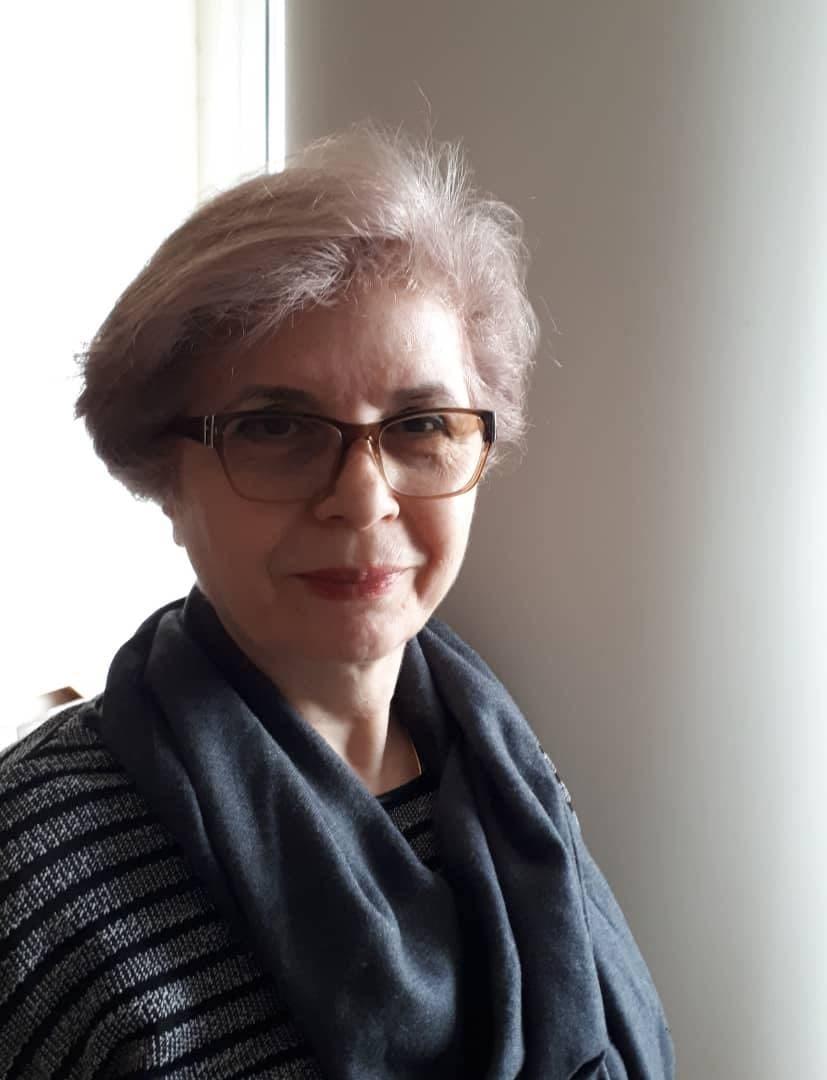
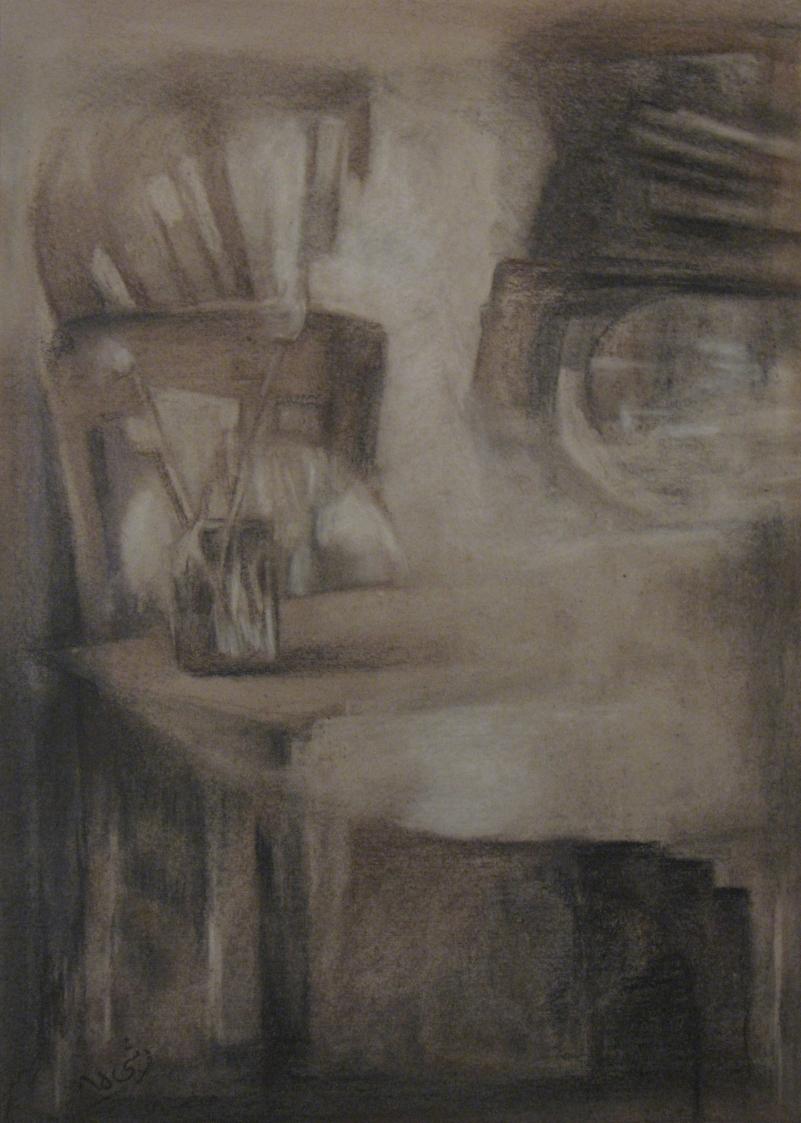 The Empty Chair
The Empty Chair
and culture.
My living environment, prior experience, and being a mother all have a huge effect on my artistic vision. In Iranian art history, painting was a way to tell true and mythical stories. Colors, meaning, and timelessness have always captivated me in Persian miniatures. The artist of these delightful Persian miniatures created beautiful landscapes while maintaining a timeless sense of harmony. Persian miniatures inspire me and have had a significant impact on me.
The body of works that we have selected for this special edition of LandEscape and that our
readers have already started to get to know in the introductory pages of this article, has at once impressed us for the way it challenges the dynamics of perception through sapient combination between reminders to reality and powerful sense of imagination, to shed a whole new light on the ideas of familiarity, capturing such unconventional beauty in the ordinary: when walking our readers through your usual setup and process, would you tell us how did you develop your idea?
Jaleh Farshi: The most important aspect of art, in my view, is its influence on people. I enjoy taking my audience's imaginations to locations they've seen but forgotten. When I paint my

 The Mirror The Sound of Silence
The Mirror The Sound of Silence
emotions, I have a sense of timelessness that I try to convey to my audience. I try not to have any particular setup or presumptions when I start working. I paint with my intuition. I let it begin and end on its own. Then I return to it and make adjustments as needed. Canvas, for me, is the place where the reality and the imagination merge.
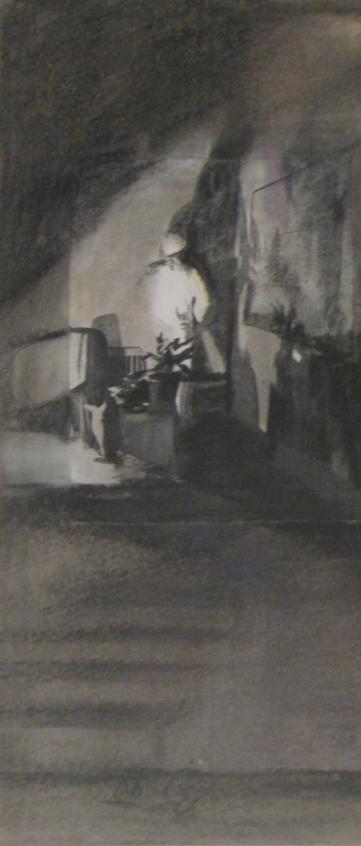
Throughout my early artistic experience, still-life painting captivated me. Setting up a still life with ordinary items and experimenting with various lighting, was a valuable learning experience. My goal is to give value and meaning to the ordinary things around me. These paintings are familiar and ordinary, which helps the viewer to interact with them on a personal level.
Later in my journey, I became intrigued by the influence of light and shadow in conceptual works. I explored the scattering of moonlight on objects in my "Moon" series. Moonlight is mystical, elusive, and full of beauty. In these works, I attempted to merge my intuition and imagination with what we call reality. I tried to capture the tranquility and stillness of objects and people at night in the moonlight and share it with my audience.
Much of your inspiration comes from the landscapes of your native country: how do you select the locations that you depict in your artworks?
Jaleh Farshi: They are, indeed, from Iran's landscape. At different times of the year, I travel to different parts of my country. I take photos and transform them to create a new scene. My inspiration comes from nature, but I paint from my emotions and intuition. I'm not afraid to use my imagination to turn the real world into a work of art on canvas.
scape CONTEMPORARY ART REVIEW Land Special Edition
The portal to the past

Jaleh Farshi scape CONTEMPORARY ART REVIEW Land

scape CONTEMPORARY ART REVIEW Land Special Edition
The Swamp
We have appreciated the way you extend the notion of landscape, beyond it common acceptation associated to merely geographical meaning, rethinking it as a recollection of the past that we've all experienced at some stage in our lives: how do you consider the role of memory and of your everyday life's experience, in your creative process?
Jaleh Farshi: Memory is the recollection of events and things that we want to keep in our minds. We form them in such a way that they are often far from reality, and this is the beauty of it. For me, nature is a constant source of harmony, joy, and inspiration.
In a world full of bad news, uncertainty, and tension, I believe there is a need to reconnect with nature in order to find peace and calm. We must keep some beautiful images from nature in our minds, change them as we see fit, carve them in our memories, and return to them whenever we need to find peace in our minds.
I try to recall and paint these pictures from my memory. I invite the viewers to immerse themselves in my paintings and find familiar images to forget the tension and all the bad news in the world. I believe the viewer will be able to interact with these imaginary landscapes and find peace.
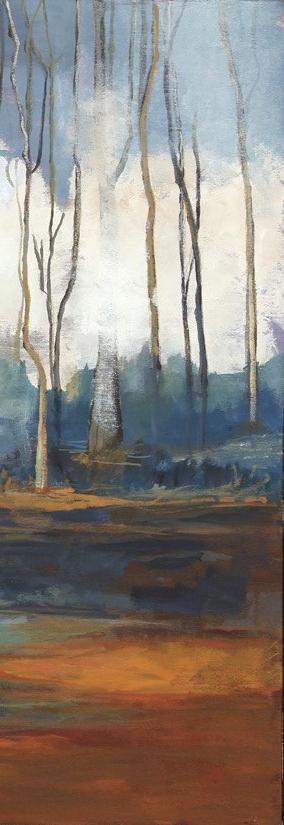
Austrian Art historian Ernst Gombrich once remarked the importance of providing a space for the viewers to project onto, so that they can actively participate in the creation of the meaning behind the work of art: as an artist particularly interested in creating artwork recognizable to all, how important is for you to trigger the viewers' imagination in order to address them to elaborate personal interpretations? In particular, how open would you like your works to be understood?
Jaleh Farshi: I believe that art should be accessible to people of all backgrounds and that everyone should be able to enjoy and explore it. I see my drawings as a bridge between my mind and the
Jaleh Farshi scape CONTEMPORARY ART REVIEW Land
minds of those who see them. I try to paint in such a way that this connection is created by focusing on things that are familiar in everyone's life.
When I start painting the objects around me, I unconsciously transform them in a way that expresses my emotions. I love it when my audience understands these spaces and interprets them in their own way. With their unique combination between abstract sensitiveness and references to elements from daily life — sometimes even to
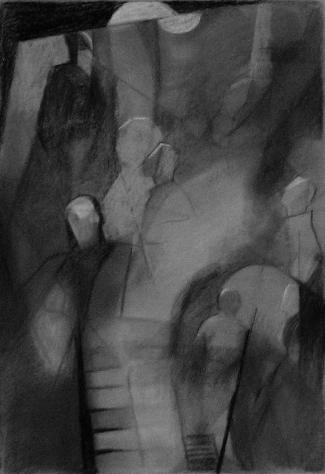
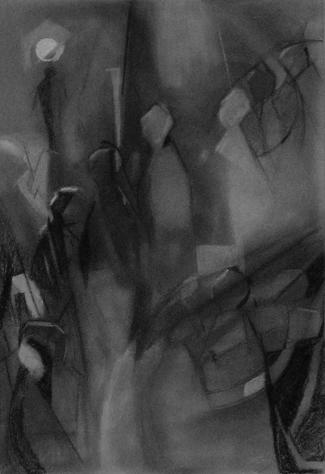
domestic life — your paintings represent subjects that are familiar from reality, but also part of the artistic imagination: how do you consider the relationship between the real and the imagined playing within your artistic practice?
Jaleh Farshi: Everybody's response to external reality is very personal and unique. I try to alter objects and concepts in my mind when I paint, and sometimes the objects I paint on canvas are my interpretation of reality. My intention is to reflect my perception of the
scape CONTEMPORARY ART REVIEW Land Special Edition
Full Moon
New Moon
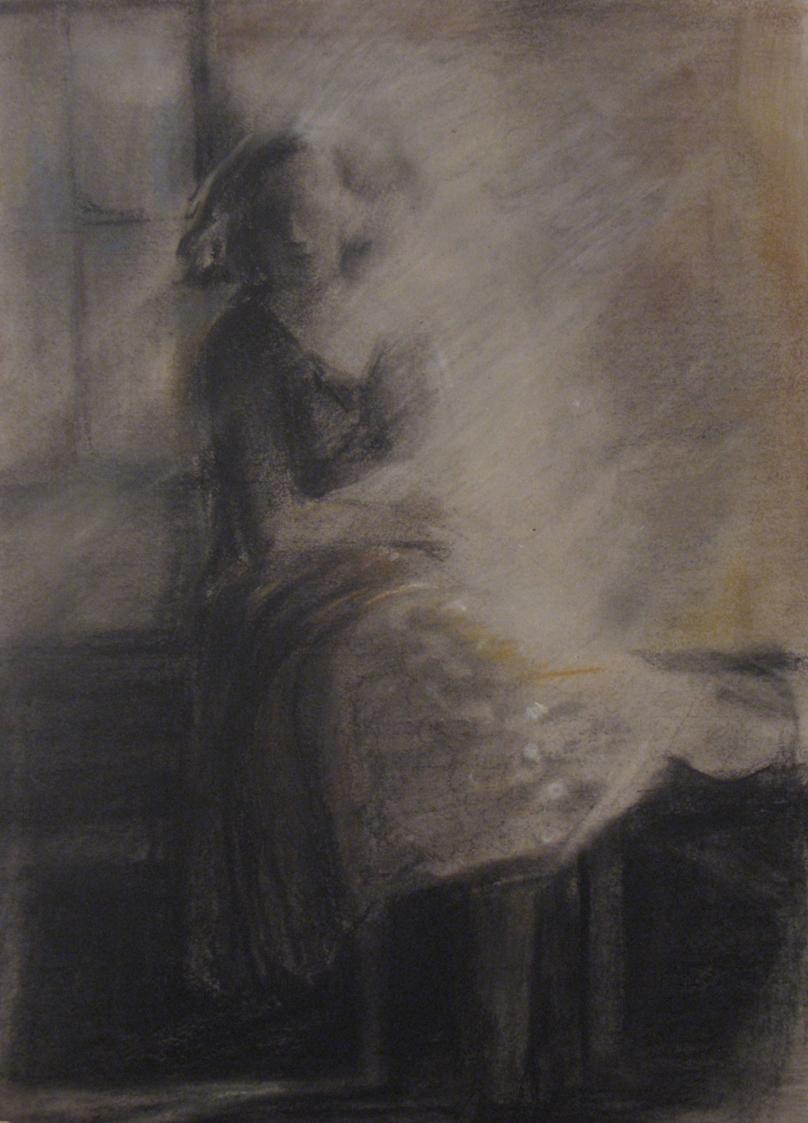
Moonlight
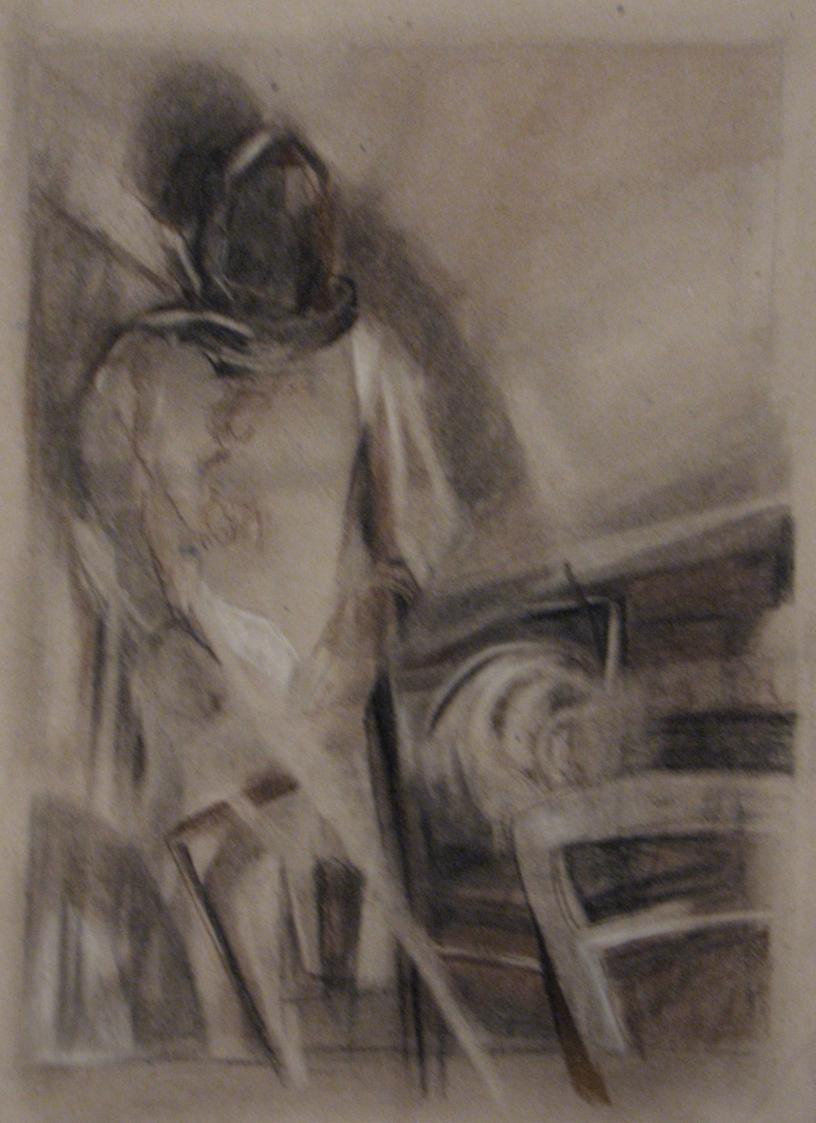
Whispering
outside world while also encouraging audiences to explore not only my paintings but also their own inner worlds. On canvas, I believe there is no difference between what is real and what is imagined.
We would like to ask you how do you consider the role of intuition in your process: do you create your works gesturally, instinctively, or do you methodically transpose geometric schemes? In particular, how important is

scape CONTEMPORARY ART REVIEW Land
Jaleh Farshi
The Green Horizon
improvisation for you?
Jaleh Farshi: When I start painting I often visualize things in my head, shape them , alter them , and then paint them on canvas. Occasionally, the colors appear unintentionally
during the process, and the forms change on their own. This is my favorite part of the experience. This can be seen in my "Moon" and "Landscape" series. In still-life works, I thought about composition and light in my
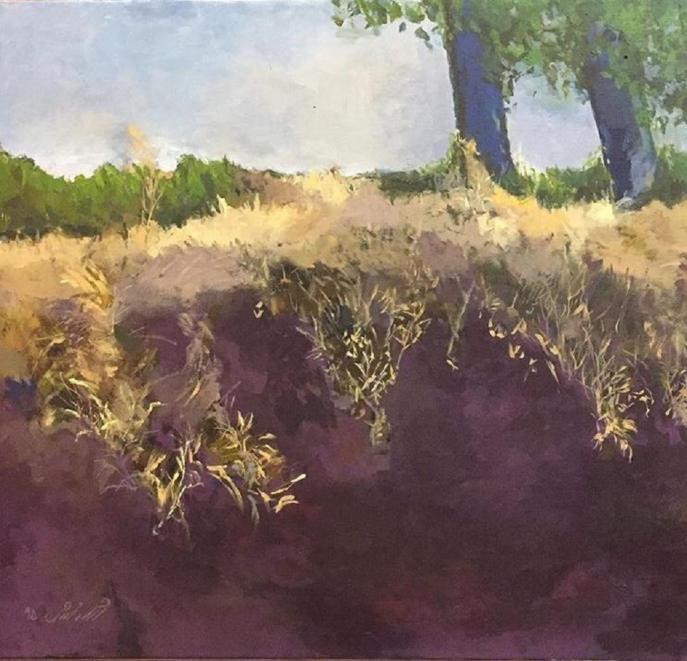
scape CONTEMPORARY ART REVIEW Land Special Edition
The Golden Meadow

The Imaginary Autumn
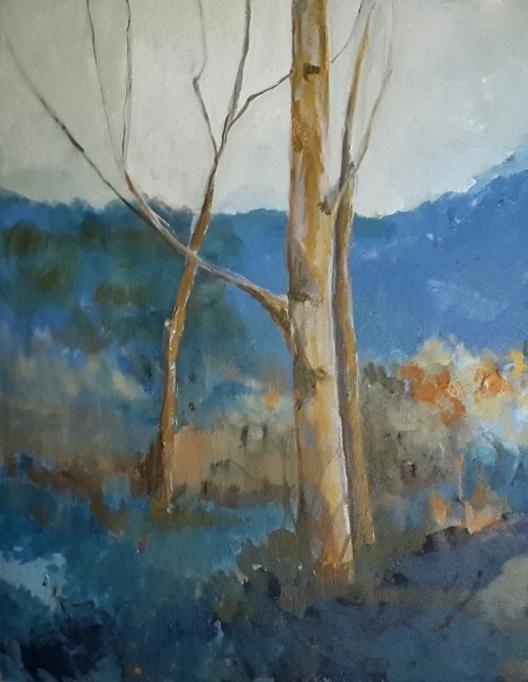
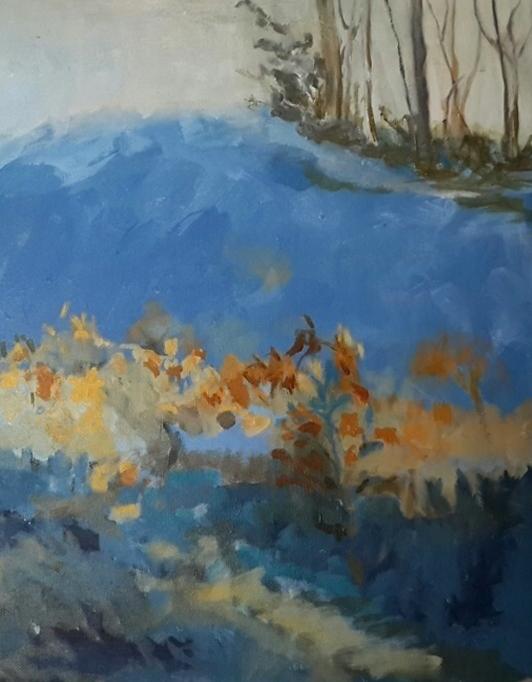 The Blue Meadow
The Blue Meadow
Landscape in the Mist
head and alter the scene in a way that my intuition directs.
We definitely love the way your artworks challenges the viewers' perception, urging them to look inside of what appear to be seen, rather than its surface. This aspect of your practice reflect what you have remarked in your artist's statement, when you underlined that your are

not governed by what is true: how does representation and a tendency towards conceptual abstraction find their balance in your work?
Jaleh Farshi: I don’t paint exactly what I see. Reality is filtered through my feelings and imaginations. I add my memories to the picture and remove some pieces to make it more in
14
scape CONTEMPORARY ART REVIEW Land Special Edition
tune with my soul. I try to make these adjustments in such a way that they are pleasant for the viewer. This process, I believe, leads to conceptual abstraction on its own. Concepts, I believe, can be better understood when viewed in the simplest way possible. Painting the simple ordinary things, in my opinion, is the best way to express

emotions and ideas.
Over the years your artworks have been showcased in a number of occasions: how do you consider the nature of your relationship with your audience? By the way, as the move of Art from traditional gallery spaces, to street and especially to online platforms — as Instagram — increases, how would in your
scape CONTEMPORARY ART REVIEW Land
Jaleh Farshi
The Red Hill


Land
Dream
opinion change the relationship with a globalised audience?
Jaleh Farshi: I believe that the relationship between an artist and audience is extremely delicate. in my mind there are lots of benefits
in online platforms and we are missing some elements. In conventional gallery environments limited duration of each exhibition makes it impossible for the viewer to go and look at all artworks . The advantage
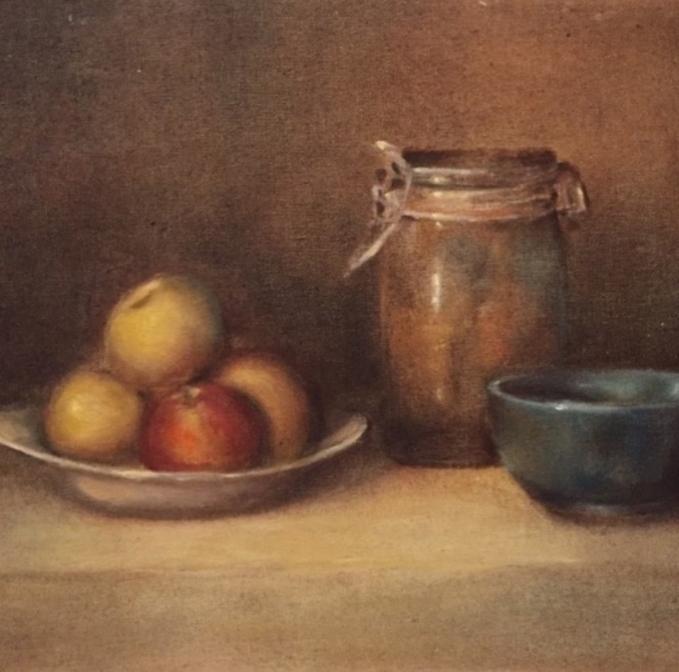
scape CONTEMPORARY ART REVIEW Land Special Edition
The old jar of jam
of an online platform is that the viewer can see all artworks from the comfort of their own home for as long as they want. Another significant aspect for me is that people from all over the world can see my artwork,
which is only possible through online gallery and social media platforms like Instagram. Instagram allows you to have a personal gallery and interact with anyone who is interested in art. Here is my Instagram link

CONTEMPORARY ART REVIEW Land
Jaleh Farshi scape
The Copper Kettle
https://www.instagram.com/jaleh farshi and I would love to hear thoughts about my work.

We have really appreciated the multifaceted nature of your artistic research and before
leaving this stimulating conversation we would like to thank you for chatting with us and for sharing your thoughts, Jaleh. What projects are you currently working on, and what are some of the ideas that you hope
scape CONTEMPORARY ART REVIEW Land Special Edition
The Clay Pot
to explore in the future?
Jaleh Farshi: I'd like to thank you and the entire LandEscape Team for creating this incredible insightful platform that connects artists from all over the world and helps them become familiar with each other's ideas, life
experiences, and worldviews. My future plans include focusing on Iranian myths and researching the drawings on ancient pottery.
This is a piece of my culture that I would like to introduce into my paintings. Part of our present truth, I believe, is rooted in our history and culture, which needs more attention.
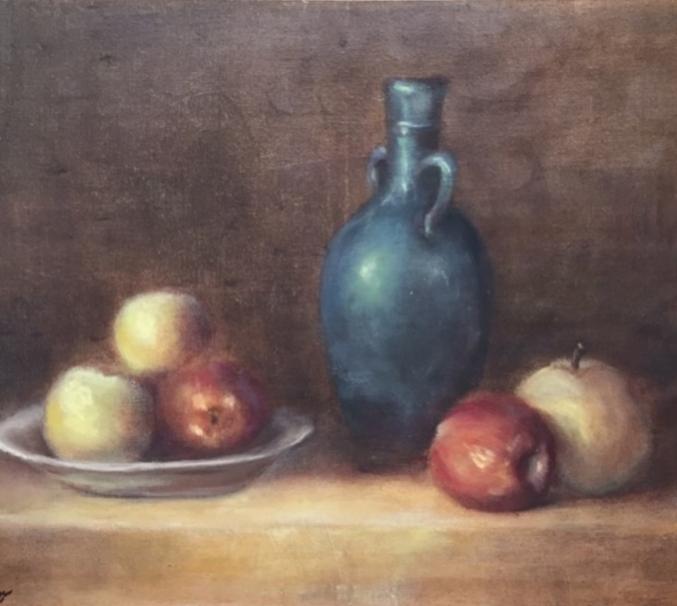
scape CONTEMPORARY ART REVIEW
Land Jaleh Farshi
The old blue jug
LandEscape meets
Nadia Adina Rose
In my work, I make us of ready-made textile objects related to my childhood experiences and impressions to see them surface in today’s reality, which is so different from that of the past – up to the point that the two seem to be incompatible.
The textures, domestic objects and design patterns that were totally self-evident decades ago, during the epoch that has been over, in the country that does not exist any longer, are still present in my mind – as if they were the “gravity points” that affect my perception. I extract these objects out of my memory (they are still present: forgotten in the lower drawers of creaky wardrobes, on the shelves of the shops in the Russian provincial towns, all those old-school blankets, linen sheets, pillows and pillowcases) and re-figure them to find them a place in the world as I know it today.
I sew and arrange objects that expand our traditional living space, turning it into a large-scale, panoramic vision where, by playing with things, I push them outside the boundaries of conventional everyday experience. This alters the traditional relationship between objects, their scale; and they become part of an expanded landscape, in which one can travel, moving ever further away and turning into a tiny speck on the horizon – while simultaneously also observing oneself without leaving one's room. In this way, I hope to recreate the sensation of overlapping "incompatible spaces" – which is familiar to us from virtual technology – using simple, "non-technological" means. I have been practicing soft sculpture, creating objects and placing them in space, or mounting them on walls.
Hello Nadia and welcome to LandEscape. Before starting to elaborate on your artistic production, we would like to invite our readers to visit http://nadia-adina-rose.com and https://www.instagram.com/nadiadinarose in
order to get a wide idea about who you are. We would start this interview with a couple of questions about your multifaceted background. You have a solid formal training: you hold a BFA from the Art College, in Moscow, and you later nurtured your education with a BFA from The Bezalel Academy of Art and Design and a MFA in Art
scape Land CONTEMPORARY ART REVIEW
An interview by Josh Ryder, curator and Melissa C. Hilborn, curator landescape@europe.com
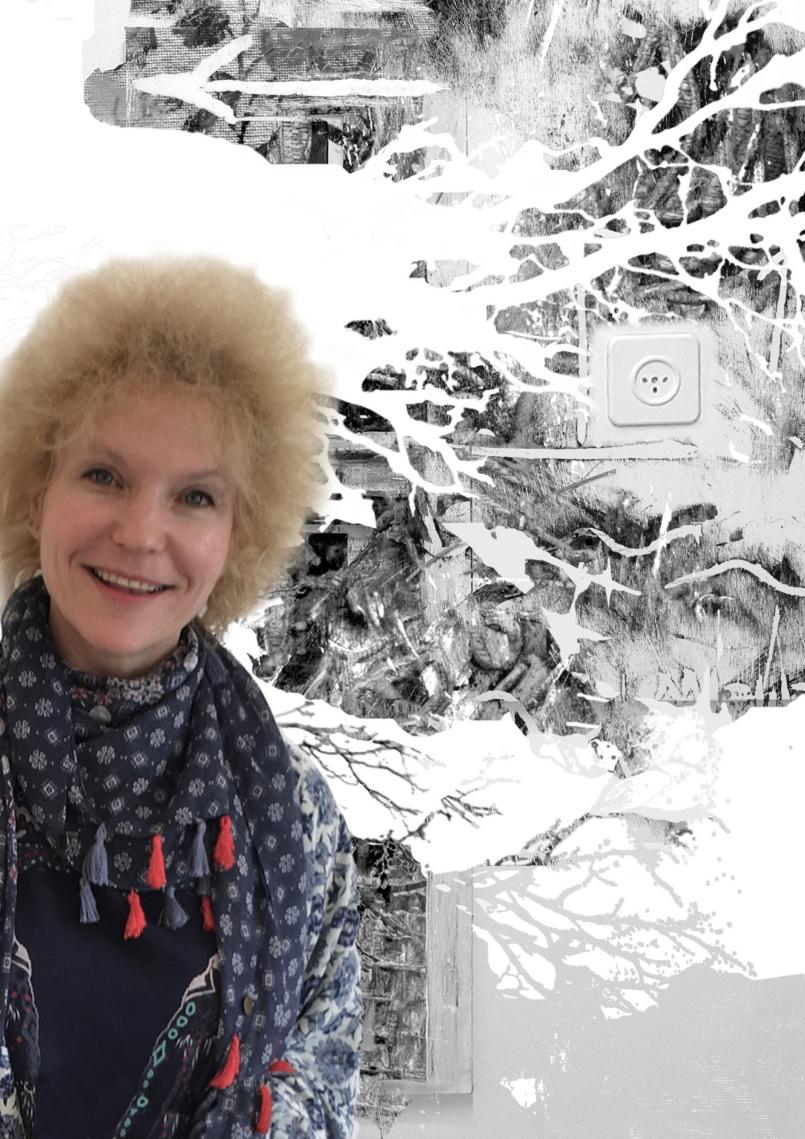
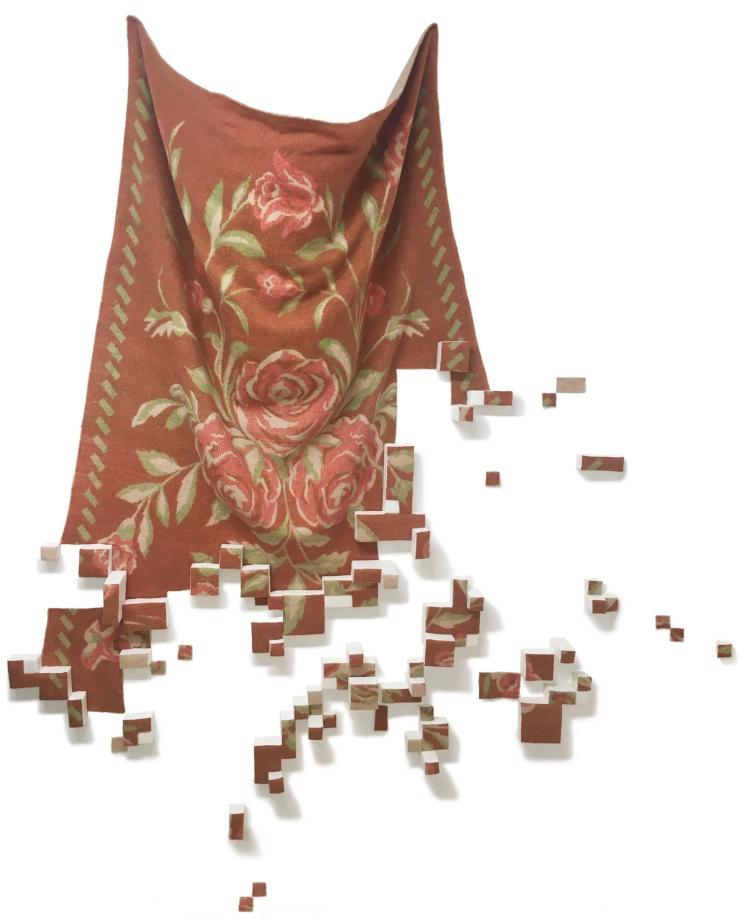
scape CONTEMPORARY ART REVIEW Land Special Edition
Blanket. 90x145 cm.
Education that you received from Beit Berl College: how did those formative years influence your evolution as an artist?
Moreover, how does your cultural substratum due to your years in Russia and
your current life in Israel address your current artistic research?
My identity as an artist was undoubtedly affected by years of formal education I
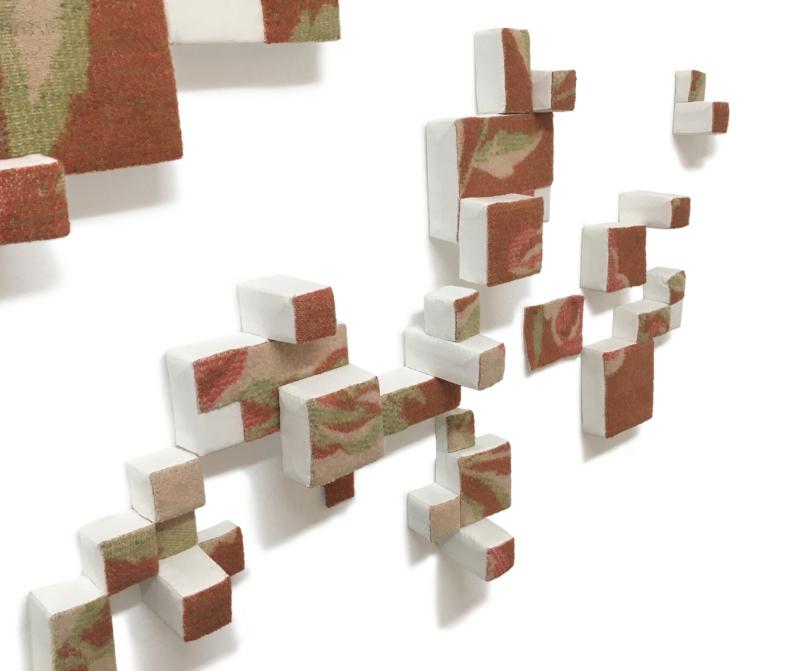
scape CONTEMPORARY ART REVIEW Land
Nadia Adina Rose
Blanket, detail
received in Russia. Yet this impact was twofold, shaping my artistic preferences in a manner that hardly had been planned by my teachers there. Thanks to the formal, orthodox approach to both methodology and
artistic vision, the classical drawing and painting techniques became a part of my artistic set up. No matter what, my right hand will move as drilled thousands of times and draw the lines exactly as the composition rules
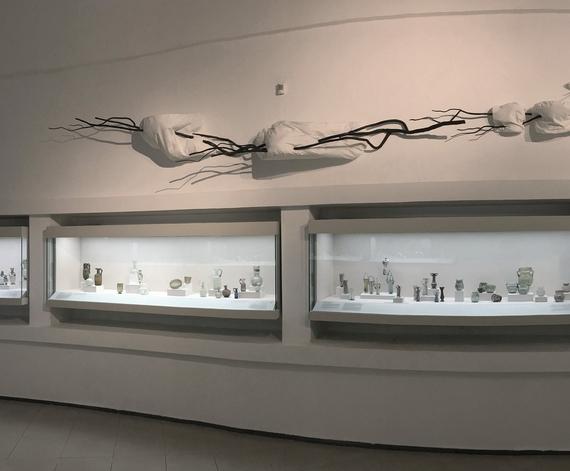
scape CONTEMPORARY ART REVIEW Land Special Edition
Clouds. 200x660 cm. Art & Design Biennale, Eretz Israel Museum, Tel Aviv
prescribe. However, this very characteristic became my spell. No matter what, I won’t be able to change the lines drawn by my right hand perfectly trained. The approach underlying the artistic education in Israel was
totally different. To me, it was like breathing in the air of freedom. Yet my right hand remained faithful to the tradition nurtured by generations of educators in the country of my origin. I tried to change the way I draw and
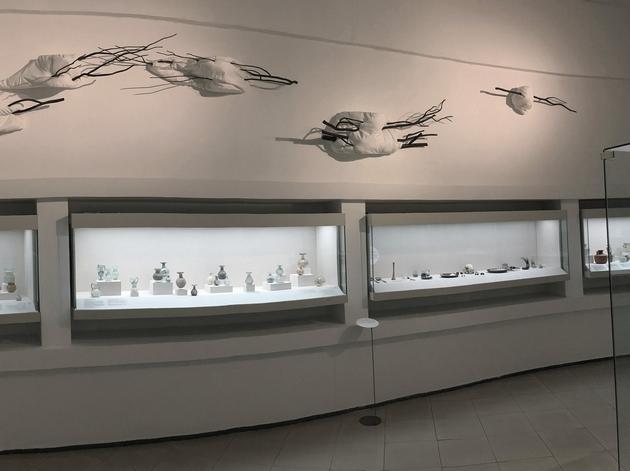
CONTEMPORARY ART REVIEW
Nadia Adina Rose scape
Land
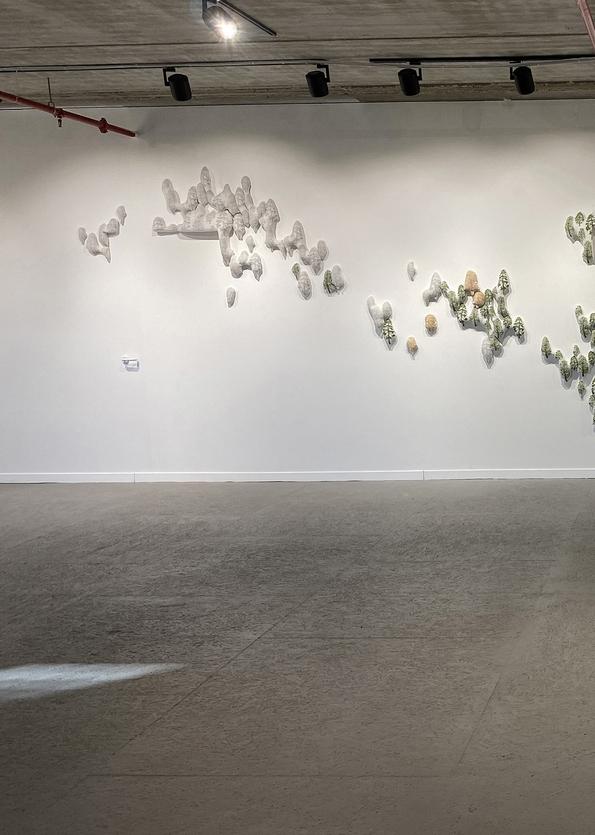 Door. 194x63x95 cm. ‘Over There’, Zuzu Galery, Hefer valley, Curator: Rotem Ritov
Door. 194x63x95 cm. ‘Over There’, Zuzu Galery, Hefer valley, Curator: Rotem Ritov
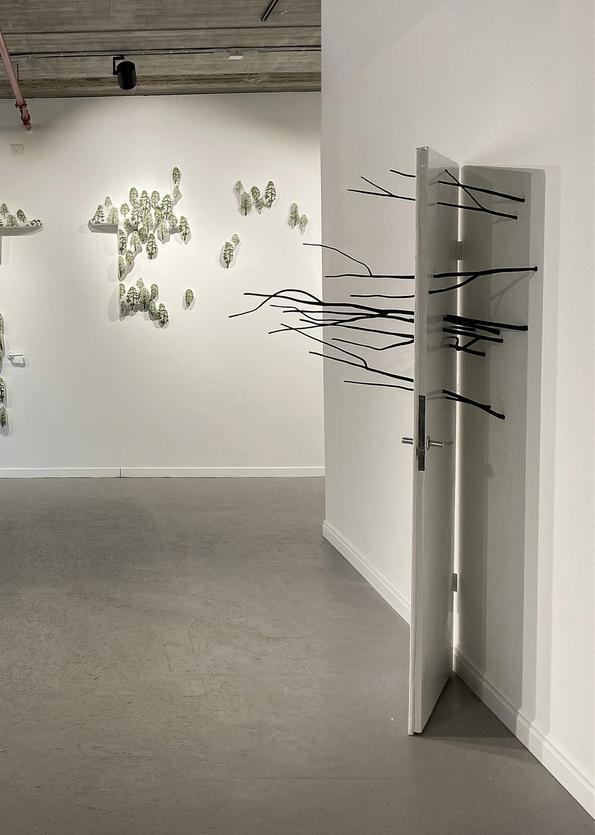
paint to make it fit my new reality, but at some point I realized that it was not possible. It became clear to me that if I want to be an artist, I should not fight who I already am, but rather find a way to “detour” these deeply ingrained skills. As a result, I started doing things I have never done before, something I had ultimately no experience in: sewing and sculpturing 3D objects. Even the illustrations I
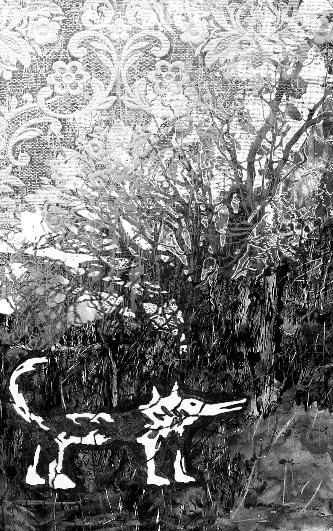
have made were originally sculptured from papier-mâché.
You are a versatile artist and it is important to mention that you are a poet, too. You released “Snow Ink”, which won the 2016 Minister of Culture Award for Emerging Poets. It is available at https://afikbooks.com/shop. Your second book of poetry, “In the Belly of a Wolf”, has
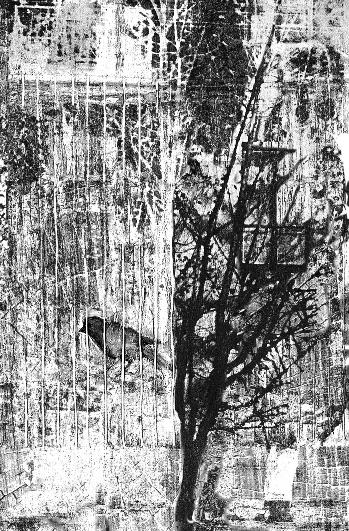
scape CONTEMPORARY ART REVIEW Land Special Edition
from poetry book Snow Ink
from poetry book Snow Ink
just been published. Its manuscript was awarded with the prize of the Society of Authors, Composers and Music Publishers in Israel (ACUM). As a visual artist particularly interested in the theme of human perception, how do you consider the role of words in your practice as a poet?

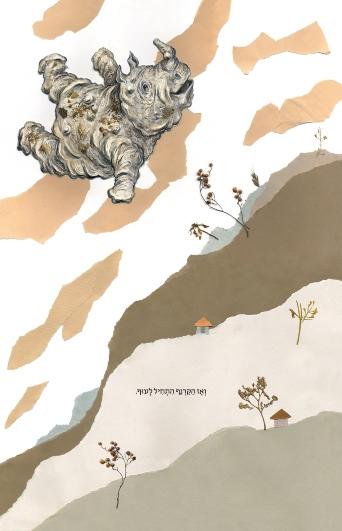
My relationship with words has been very complex in a literary sense. When I was 11 years
old, I woke up one morning and realized I was not able to speak any more. I remember I saw my father that morning and tried to address him, but instead I was just stuttering, and he could not recognize a word I was saying. He seemed to be astounded and thought, at first, I was pretending. From that day, for years, words have been lost for me. Since I could not speak, at school I was asked to do all the tests and learning exercises in the
Nadia Adina Rose scape CONTEMPORARY ART REVIEW Land
from book And Then the Rhinoceros Began to Fly from book And Then the Rhinoceros Began to Fly
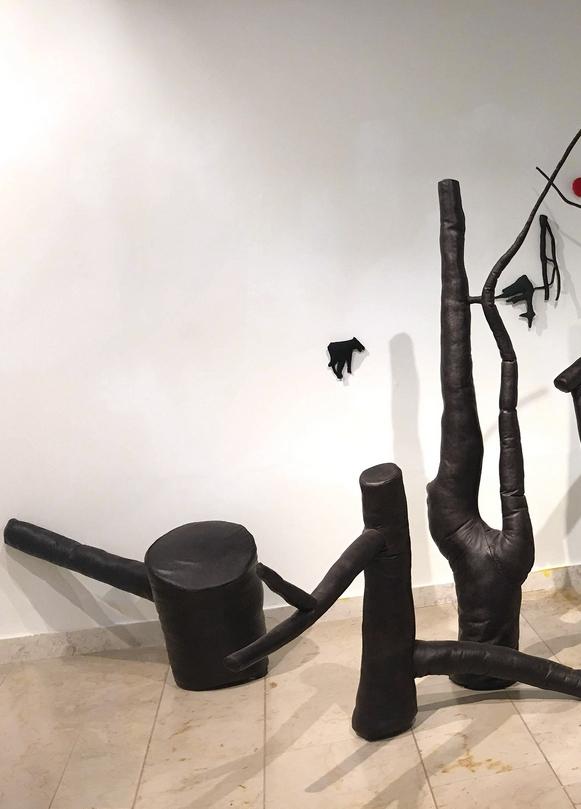 Forest. ‘Sleeves of the Trees’, Solo Exhibition, Janco-dada Museum, Ein Hod; Curator: Avital Katz
Forest. ‘Sleeves of the Trees’, Solo Exhibition, Janco-dada Museum, Ein Hod; Curator: Avital Katz
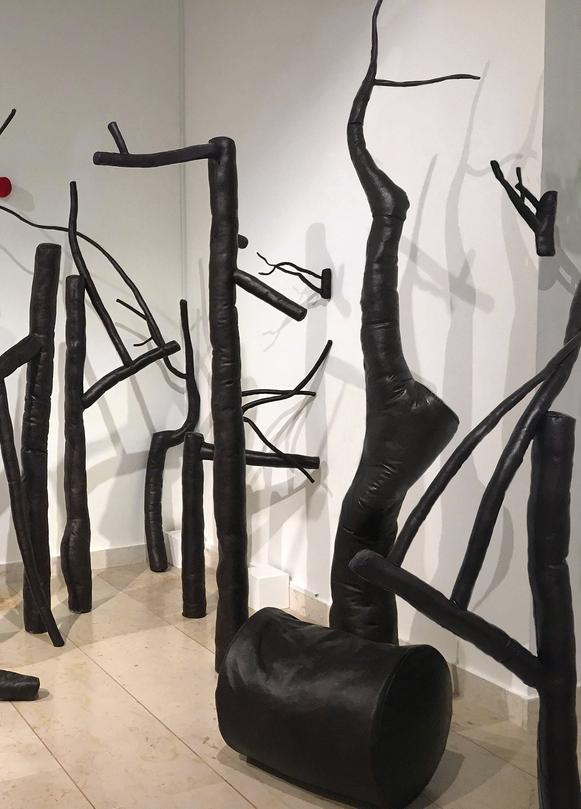
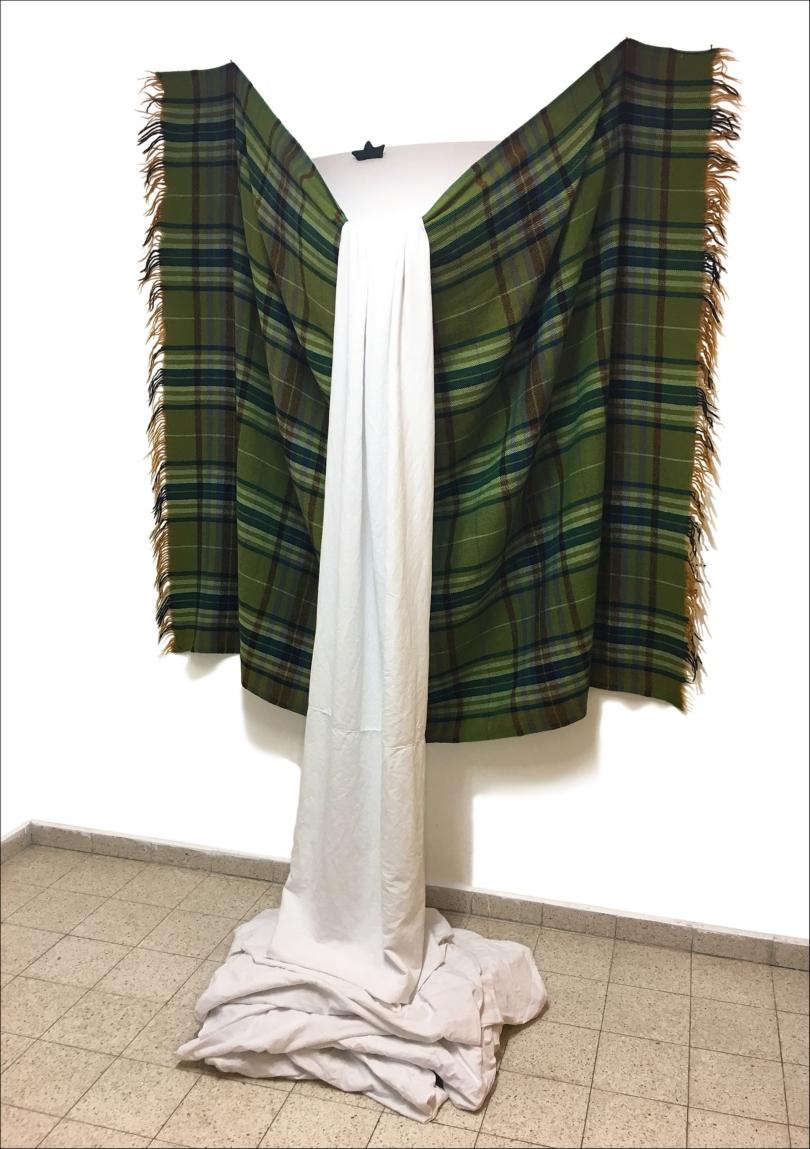
Angel. 230x160 cm.
written form. Yet it turned out I was suffering from dysgraphia as well – writing became a no lesser challenge. In fact, that was the main reason my parents signed me up for an art school. For me, visuality became a language alternative to words - something through which I could express myself and communicate without distortions and interruptions. In this regard, immigration became an opportunity to get the words back. Immigration implies acquiring a new identity be it as it may, and in my case a new language was a part of it. I started talking and writing poems in Hebrew – a language which I had never spoken beforehand. As if someone else were putting words together, and this someone else was me. There is always that gap between “me” and the one speaking and writing, as if I were standing at a distance and listening to myself. I think it is this gap, this gray area, where the poems come from.
STUTTERING
(translated from Hebrew by Linda Zisquit)
Slowly like the promo before a film the days trailed along.
A popsicle didn’t melt in the winter.
“How old are you, little girl?”
Age froze too, stuck to the lips, mumbling itself before me.
With a tongue whetted
for the future as far as the way from school
I caught the snowflakes.
I stuttered. Half words peeked out like gloves from a coat pocket. So with bare hands I held happiness unable to explain why it was good.
For this special edition of LandEscape we have selected your Blanket Space series, a project that our readers have already started to get to know in the introductory pages of this article, and that has at once impressed us for the way it achieve with simple means the difficult task of creating the sensation of overlapping "incompatible spaces", highlighting the bridge between traditional techniques and contemporary sensitiveness. When walking our readers through the genesis of your Blanket Space series would tell us how do you consider the relationship between Tradition and Contemporariness?
To address this question, I would compare tradition to a warm, comfortable sleeve. To be a contemporary artist, you need to roll this sleeve up, to make your hand naked. Yet you have to have something to be rolled up; the hand has to know this feeling of being protected and warmed – before it starts sensing the cold air and working.
With elements sapiently selected from the ordinary, your works feature powerful
Nadia Adina Rose scape CONTEMPORARY ART REVIEW Land
narrative drive. As you have remarked in your artist's statement, you build your sculptural works out of different parts, as a mosaic, in order to expand consciousness, set up a new situation, and create a poetic metaphor
through minimal means. How do you consider the role of symbols and evocative elements playing within your artistic process? And how important is for you to create artworks rich of allegorical qualities?
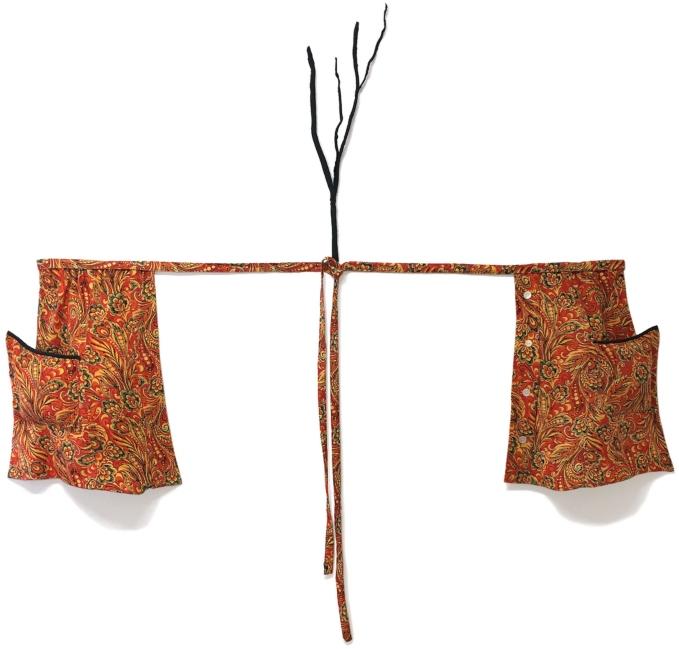
scape CONTEMPORARY ART REVIEW Land Special Edition
Family Tree. 210x175 cm. ‘Bodyscapes’, The Israel Museum, Jerusalem, Curator: Dr. Adina Kamien-Kazhdan
Expectation. 225x225 cm.

Nadia Adina Rose scape CONTEMPORARY ART REVIEW Land


Exit. 350x400 cm.
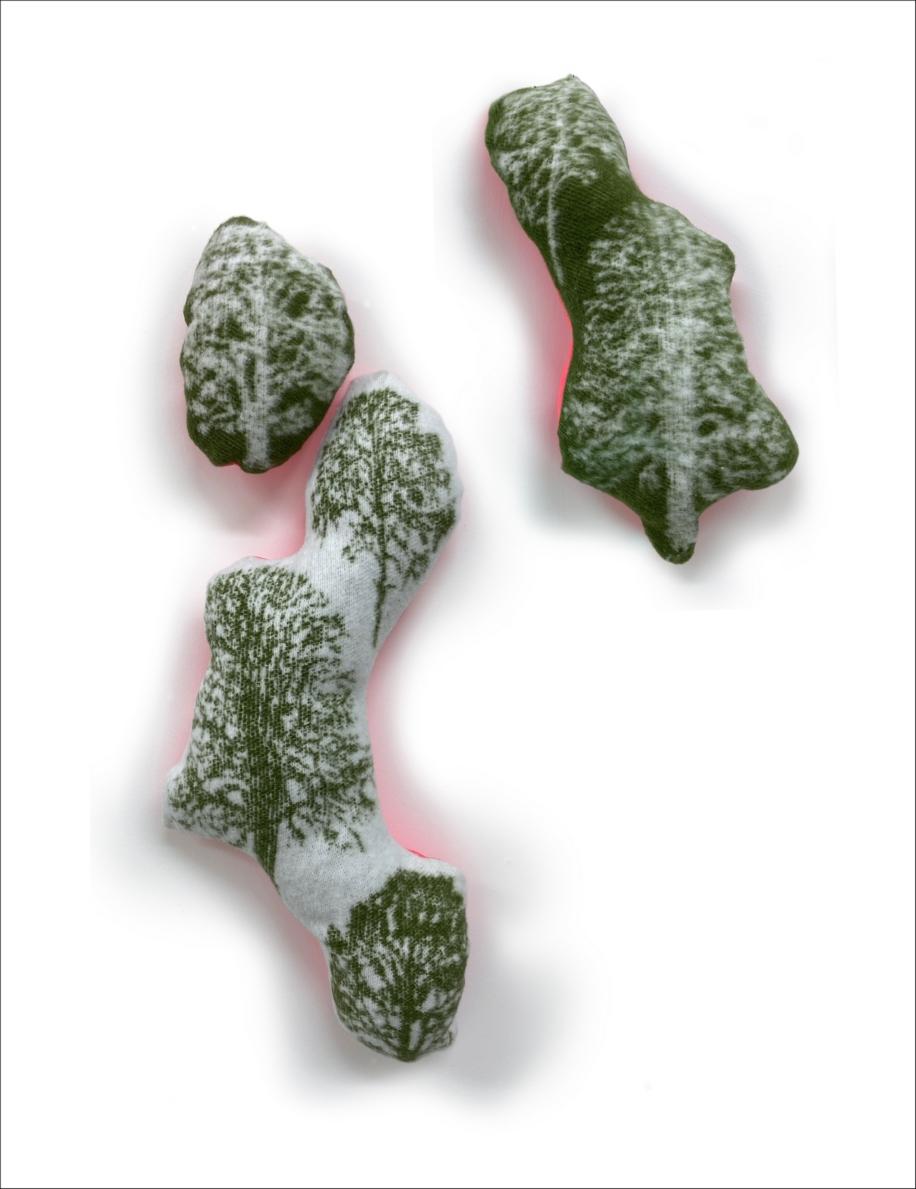
Exit, detail
In my case, the very medium of my artworks –textiles – has a symbolic meaning. Textiles are coded culturally, they evoke allusions – on both personal, and collective level. Choosing one fabric over another is already a statement. Moreover, because textiles are so loaded – in terms of emotions, memories and symbolic meaning they evoke, I do not perceive them as just a medium, but rather as partners in the artistic process. Whatever I do, I have to take into account what they are – a symbolic identity I have to accept or contest in each and every artwork.
Marked out with such unique aesthetics, Blanket Space series struck us for the way it invites the viewer to elaborate personal associations. How important is for you to trigger the viewers' imagination in order to address them to elaborate personal interpretations? In particular, how open would you like your works to be understood?
One of my artwork series is called “Hieroglyphs”. It consists of trees stretching out their branches, so that they cross the branches of the other trees and their shadows. That’s what I think the reality is. It is made up of messages. One could even say a message is a unit of the world. The thing is that for this world to be alive and working, you need a gap; a space filled with uncertainty and open for free interpretation, which also includes misunderstanding and ambiguity. A world in which everything is clear and explained just won’t survive. I can give you a personal example. I write poems in Hebrew –
a language that is not my native one. I am constantly aware of the fact that there is something there which is not within my reach - some tiny aspects of meaning, allusions, and connotations. But it is this gap that sets everything in motion.
A crucial aspect of your artistic practice is the way you push objects belonging to ordinary, often domestic life outside the boundaries of conventional everyday experience. Canadian multidisciplinary artist Angela Bulloch once remarked that objects and in particular works of art continue to evolve after they have been realized, simply by the fact that they are conceived with an element of change, or an inherent potential for some kind of shift to occur". We’d love to ask you about the qualities of the materials that you include in your artworks. How do you select them and what do you address to include them in your artworks?
I totally agree with Angela Bulloch’s remark, yet I would add that objects from various realms differ in their potential to evolve in our perception. In this regard, it is the domestic objects that are the most stable ones – if not in the physical reality, then in our consciousness. Many of these objects accompany us for years; some of them had existed before we were born. It is often the case that the physical objects are getting older and shabbier, but we do not realize this is happening, because we project our memories upon them. I think one of the main purposes of art is to change the meaning of things, to create new connections through
scape CONTEMPORARY ART REVIEW Land Nadia Adina Rose
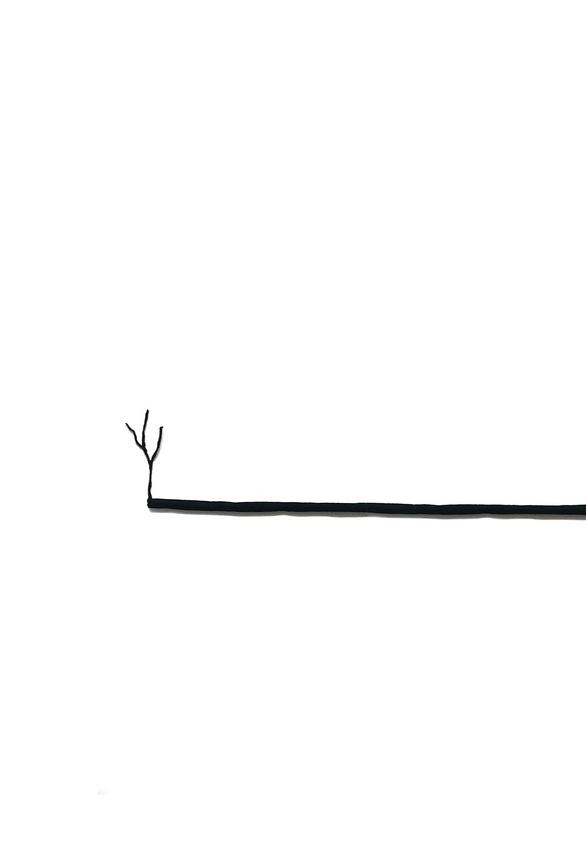

Moon. 142x600 cm..
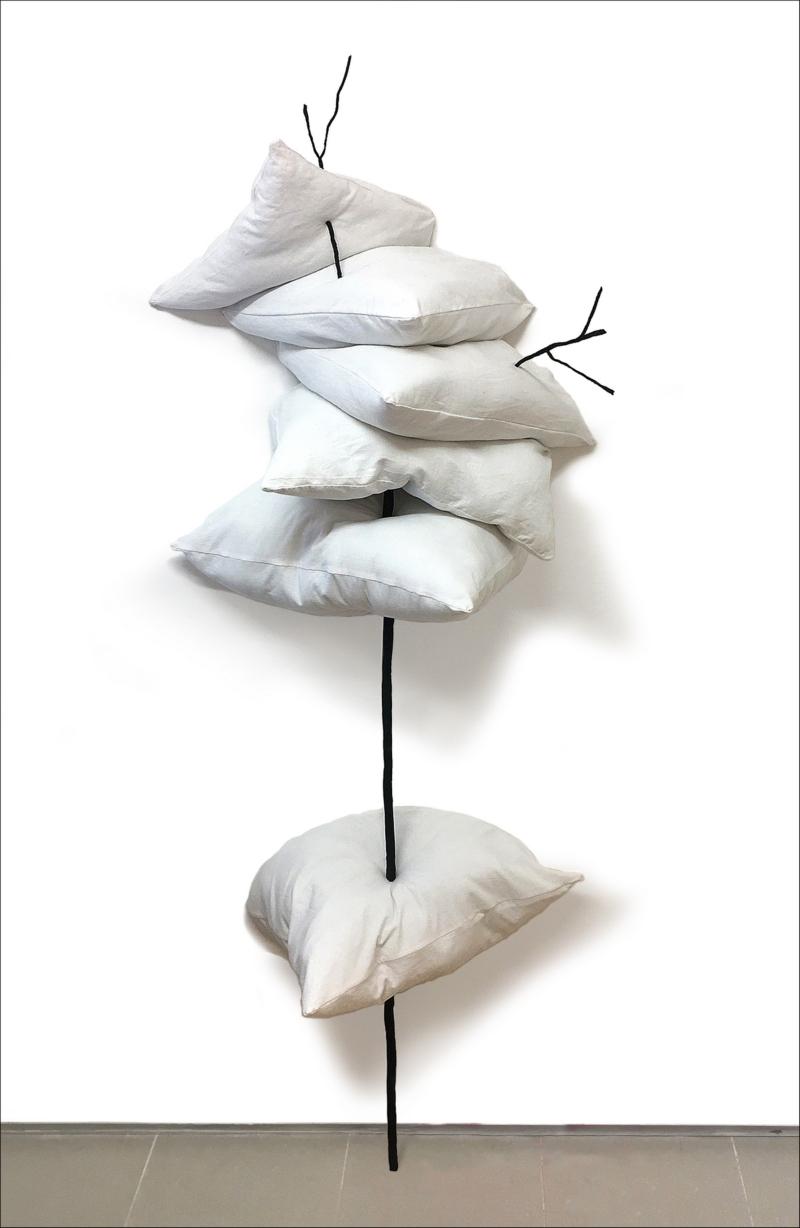
Mast. 206x100 cm.
‘Night Cruise’, Artspace Gallery, Tel Aviv; Curator: Shoshi Averbuch
metaphors; coming back to the previous question – to make their reality less rigid and more uncertain. To me, dealing with domestic objects adds to this challenge: providing how symbolically loaded they are and what gravity they have, the more you are able to “shift” them, the more powerful the change is.
THE OTHER SIDE
(translated from Hebrew by Linda Zisquit)
The determination of the walls, the introvertedness of the rooms, the spasms of the clockface, the crushing of the chairs, the yearnings of the chandelier for the floor, the imprint of the shadows, the haughtiness of the windows, the solitude of the books, the bondage of the tiles, the prayer of the computer, the echo of the pots, the bumpiness of the habits, the generosity of the shelves, the back-rests of forgetfulness, the yawning of the doors, the squinting of the sockets, the delusions of the corners, the attentiveness of the steps, the gathering of the elbows with the table, the musings of the dust, the whirlpool of the drawers, the childishness of the stairs, the gutters of the voice, the calluses of the armchair, the shivering of the refrigerator, the spread of the spiderwebs, the hiding place of the glances in the cupboard, the memory of the broom, the inferiority of the stool, the expectations of the curtain, the lanes of the sofa, the rolodex of the thoughts, the wing of the face in the mirror, the curiosity of the toilet, the hallucination of the air conditioner, the breaths of the bed, the realization of the lamps, the swearing of the lock,
the tangle of the grating, the tongue-slips of the burners.
All this turns over now to the other side.
The objects that you include in your artworks are related to your childhood experiences and impressions to see them surface in today’s reality: how do you consider the role memory is playing within your artistic process?
The memory is the soil on which artistic process evolves and through which it is fed.
MEMORIES
(translated from Hebrew by Linda Zisquit)
They lengthen with the years like the bangs hiding my eyes. Koo-koo! Koo-koo!
No one sees me.
And what can I do with them if not pull them back from my face gather them into the tail of a Trojan horse opening all the gates to the past.
Your artworks achieve the difficult task of expanding our traditional living space, turning it into a large-scale, panoramic vision that provide the viewers with such an immersive visual experience: how do the dimensions of your artworks affect your workflow?
By playing with dimensions, I try to push the objects outside the boundaries of
scape CONTEMPORARY ART REVIEW Land
Nadia Adina Rose
Seasons. 260x600 cm.

conventional everyday experience. They become part of an expanded landscape, in which one can travel, moving ever further away and turning into a tiny speck on the horizon – while simultaneously also observing oneself without leaving one's room. In this way, I hope to recreate the sensation of overlapping "incompatible spaces" – which is
familiar to us from virtual technology – using simple, "non-technological" means.
We have really appreciated the multifaceted nature of your artistic research and before leaving this stimulating conversation we would like to thank you for chatting with us and for sharing your thoughts, Nadia. What projects
scape CONTEMPORARY ART REVIEW Land Special Edition
‘Over There’, Zuzu Galery, Hefer valley, Curator: Rotem Ritov
are you currently working on and what are some of the ideas that you hope to explore in the future?
I am very interested in memory and its visual manifestations in our consciousness; in particular I would like to explore the role of landscapes in the development of one’s
identity. As children we get exposed to landscapes and nature sights. In this way, gradually, the landscapes become a part of who we are. Planted in our memory, these landscapes remain tuned to the external reality since they exist there as well. Our internal landscapes are fed from our past experience, as well as from their external
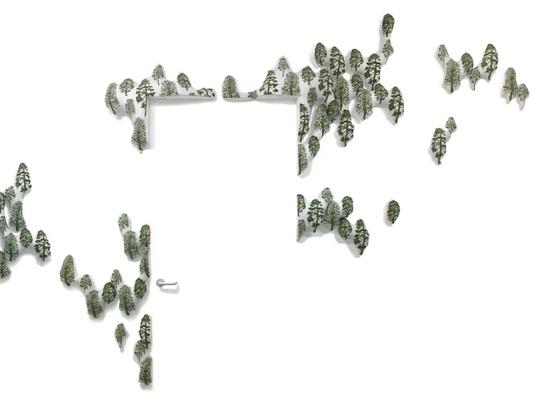
scape CONTEMPORARY ART REVIEW Land Nadia Adina Rose
counterparts. However, just like memories, these physical landscapes tend to change: they lose their fragments and gain new features by turning into urban areas, getting covered by water, or
even burned. What happens if there is nothing to hold on out there any longer? How do the internal landscapes continue from there? What happens to our memory and, in a broader
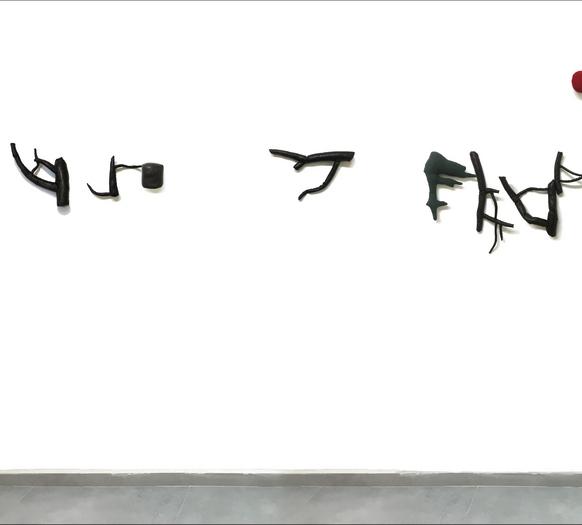
scape CONTEMPORARY ART REVIEW Land Special Edition
Sentence. 50x600 cm.
sense, to our identity? The language of art can serve as a research instrument which helps one turn the internal landscapes into tangible ones, make them accessible, convert them into
objective phenomena – all of these imply their dismantling and re-building. This instrument has an extra feature: it can stabilize a landscape, prevent it from disappearing. As a visual artist
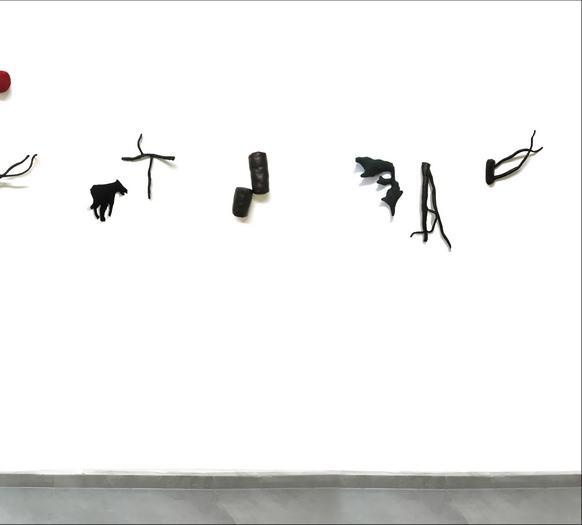
Nadia Adina Rose scape CONTEMPORARY ART REVIEW Land
Immigration. 250x200 cm.
‘The Handwriting of Branches’ Solo Exhibition, Gallery of The David Yellin Academic College of Education, Jerusalem; Curator: Nava T. Barazani
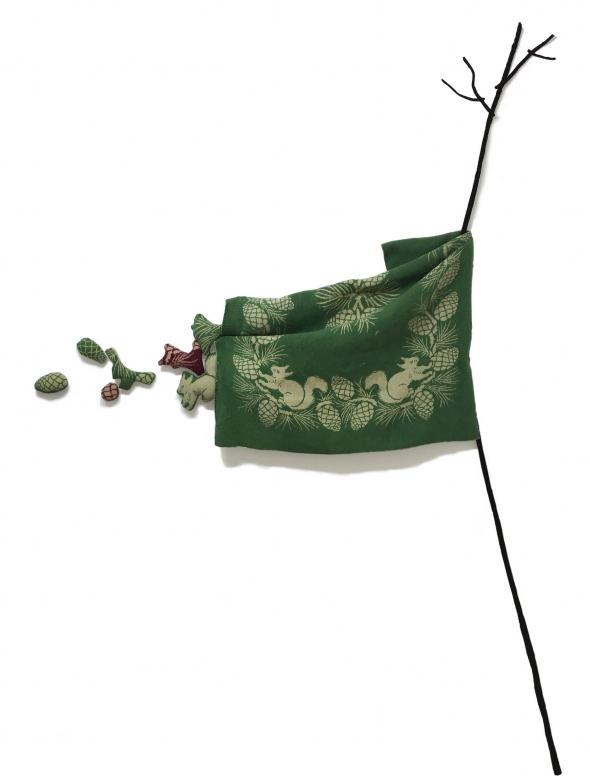
and a poet, I would like to examine the processes the landscapes undergo in our memory when their physical counterparts have vanished or changed their appearance significantly.
I would like to thank the LandEscape team for the thought-provoking questions and for the opportunity to display my works in your remarkable magazine.
scape CONTEMPORARY ART REVIEW Land Special Edition

Sunset. 166x105 cm.
‘In Sequence’, Benyamini Contemporary Center, Tel Aviv, Curator: Maya Parnas
LandEscape meets
Nina Pancheva
My works are not an attempt for self-expression. Also, they are not an attempt to escape reality. My artisitc approach is the result of the idea that fine art is a unique method for exploring and ‘seeing’ the world. Working on my paintings and installations has enabled me to seek answers of questions which I find important. In this sense I could describe my works as concept based, as looking for the appropriate means of expressions follows the questions of interest. In my art practice I often work on subjects concerning political and ecological problems - I am convinced that visual art could exceed its formal endeavors and could provide new and different insights than a purely scientific approach. The process of developing the series of paintings Computer Views (three paintings: Ice, Mars and Field, oil on canvas) started as twofold. On the one hand, it aimed to address formal questions about the space in the two-dimensional surface of the canvas. By adding the computer dialogue boxes in the paintings, the surface separates into two levels of perception, one been the landscapes, i. e. a realistic approach, and the other - an abstract field of the computer dialogue boxes. Gerhard Richter had a major influence on my work with his usage of photographs and abstract elements in painting. The abstract details in my paintings aim to focus viewers’ attention to the fact, that they are looking at a constructed picture. The other direction started with my intention to contribute to the awareness of some of the current ecological problems, which we all face – the melting of the polar ice caps and the overall global climate change. In this sense the computer dialogue boxes appear in the paintings as signs of a reality, which seems saturated with images, especially in screens. Sometimes it seems as the screens show us a more ‘truthful’ reality than our own senses. We perceive the worlds’ events through screens, we feel as we belong the the world through the power of these images. On the other hand, the world through our screens seems unreal-some kind of computer generated reality. Thus issues as fundamental as the global warming seem somehow unreal too. My paintings combine elements of these two modes of perception, seeking to open up possibilities for awareness of these ecological issues, for the ways we perceive reality and the functions of visual art within this context.
landescape@europe.com
, curator
Hello Nina and welcome to LandEscape. Before starting to elaborate about your artistic
production and we would like to invite our readers to visit
https://www.ninapancheva.com in order to get a wide idea about your mulifaceted artistic production, and we would start this interview
An interview by Josh Ryder, curator and Melissa C. Hilborn
scape Land CONTEMPORARY ART REVIEW

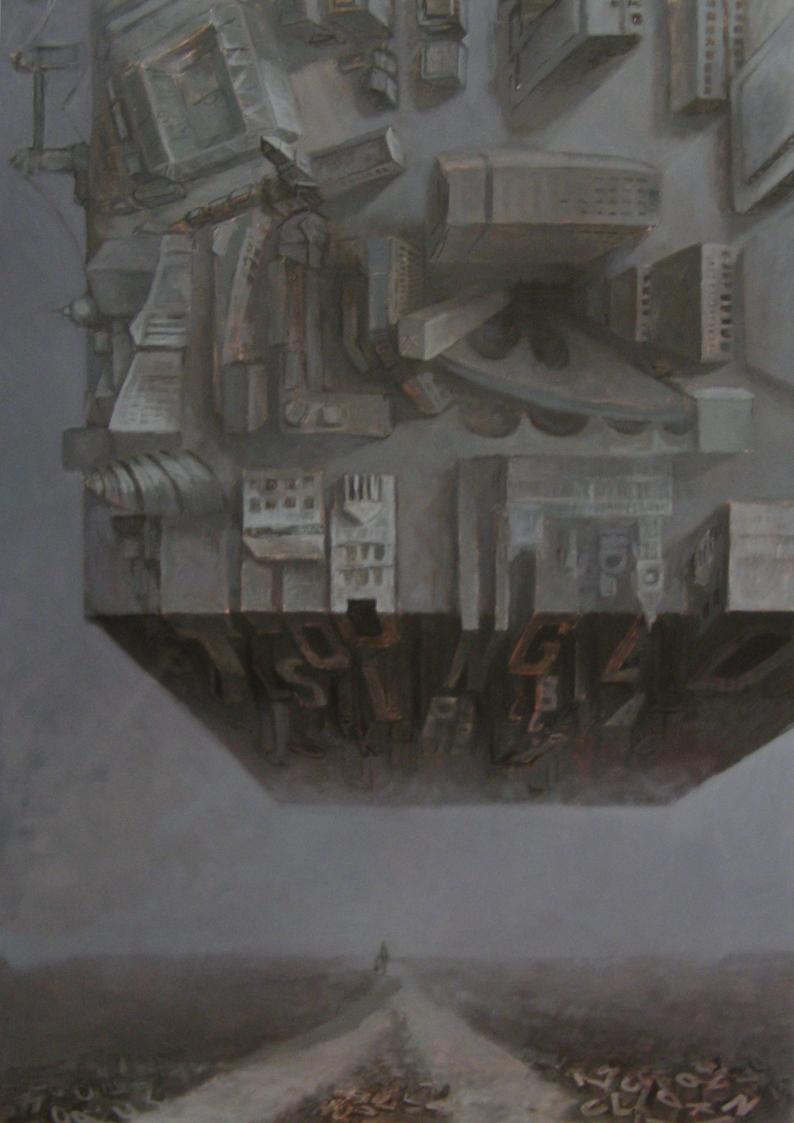 Roads Oil on canvas, 2021
Roads Oil on canvas, 2021
with a couple of questions about your multifaceted background. You have a solid formal training: after having earned your BA of Fine Arts - distinction, from the Academy of Fine Art, Plovdiv, you moved from your native Bulgaria to the United Kingdom, to nurture your education with an MA of Fine Artsdistinction, and a PhD of Fine Art, that you both received from the Winchester School of Art, University of Southampton: how did those formative years influence your evolution as an artist? Moreover, how does your cultural substratum direct the trajectory of your current artistic research?
Nina Pancheva: Hello, thank you for having me.
I was lucky enough to receive more ‘traditional’ education in my home country Bulgaria, which focused on working with various techniques We also studied human anatomy and spent numerous hours doing drawings and sketches at live drawing classes. The emphasis was mainly on the form in these techniques, the subject was of less importance. And, especially in the Secondary Specialised School for Fine Art, it was more about freedom - in experimentation with the techniques, also in making mistakes. It was in the years after the fall of communism and the art market of the country was so chaotic, that we were not concerned with questions about it, we did not think in these terms. So it was very particular freedom.
On the other hand, during my MA of Fine Arts in the UK, I had the chance to speak with my lecturers about my art practice from a
completely new perspective, i. e. by focusing mostly on the relationship between the subject of the work and finding its most appropriate form, and also for establishing my own visual language, in searching for a unique approach in fine art. Working on my practice-based Ph.D. project allowed me to expand my awareness of critical theories and debates in contemporary art, as well as of theoretical approaches of looking at paintings and installations. The latter, of course, would surround my practice so in this sense this awareness has changed my perspective on my work.
Growing up in a nation, which seems preoccupied with history, both in the media, as national celebrations and repeating rituals of searching for a national identity in the past, it was a logical step for me to decide to work on a research project concerned with the methods wich contemporary painting applies to understand and cope with the recent past. It was important for me to make the distinction between the notion of an ‘objective history’ (as defined by Lucian Boia) which refers to the past in its ‘objective unfolding’ and ‘discourses about the past’ that reconstruct what happened. Nostalgia and attempts to erasing the communist past were at the centre of my research. During that time, I completed only several series of paintings and four installations. In terms of quantity, it appeared almost like a pause in my practice. Yet, this experience had a great influence on my work. It shifted the focus on the process rather than on the final work. This had reshaped my practice from then on – now I see the process of
Nina Pancheva scape CONTEMPORARY ART REVIEW Land
developing an artwork as a journey, which changes not only the final work but also myself.

Working on my research project has also expanded my understanding of the relationship between fine art and the political – I examined Socialist Realism and the ways the Communist party tame fine art. My interest in politics is very personal and derives from my family’s past – my two grandfathers were almost killed by the Communist party. My father left aside his research in literary criticism to co-find one of the first democratic parties in the country. Furthermore, even after the collapse of the communist closed system, fine art has remained firmly influenced by the politics in the country. Exploring this tension also shifted the focus of my subsequent work – it is often occupied with political or ecological problems. According to Murrey Edelman art is the fountainhead from which political discourse, beliefs about politics, and consequent actions ultimately spring. I agree with his view. Yet, I am convinced visual art goes one step further – it not only advances political and ideological inquiries but also questions of human existence and our relentless search for meaning.
The body of works that we have selected for this special edition of LandEscape and hat our readers have already started to get to know in the introductory pages of this article, has at once captured our attention for the way your artistic research about the relationship between reality and its pictorial representation in the twodimensional surface of the canvas, raising questions about the act of viewing: when
scape CONTEMPORARY ART REVIEW Land Special Edition
Authorization Required, Oil on canvas, 2021
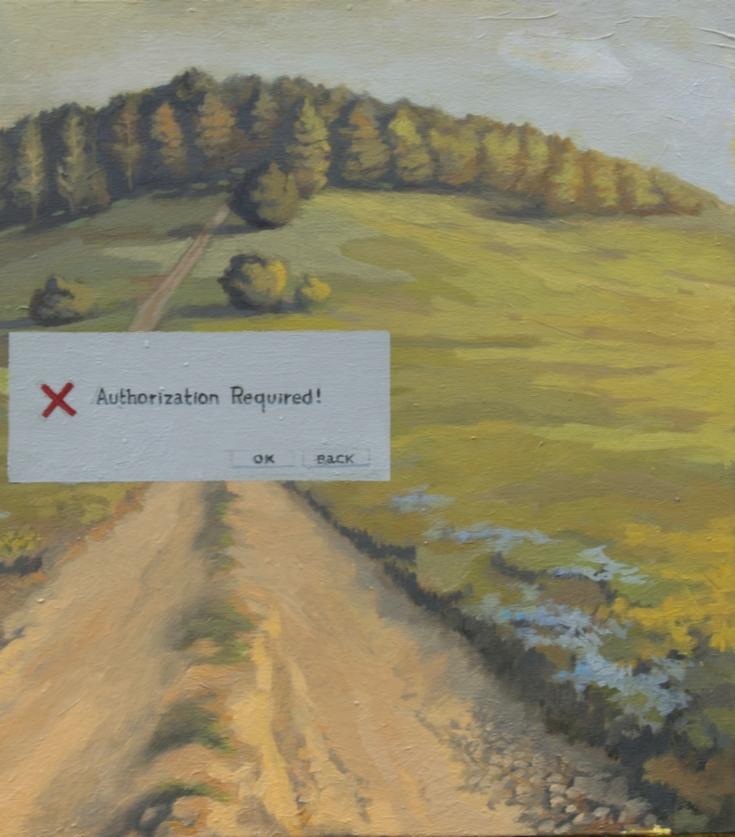
Nina Pancheva scape CONTEMPORARY ART REVIEW Land


Ice, Oil on canvas, 2021
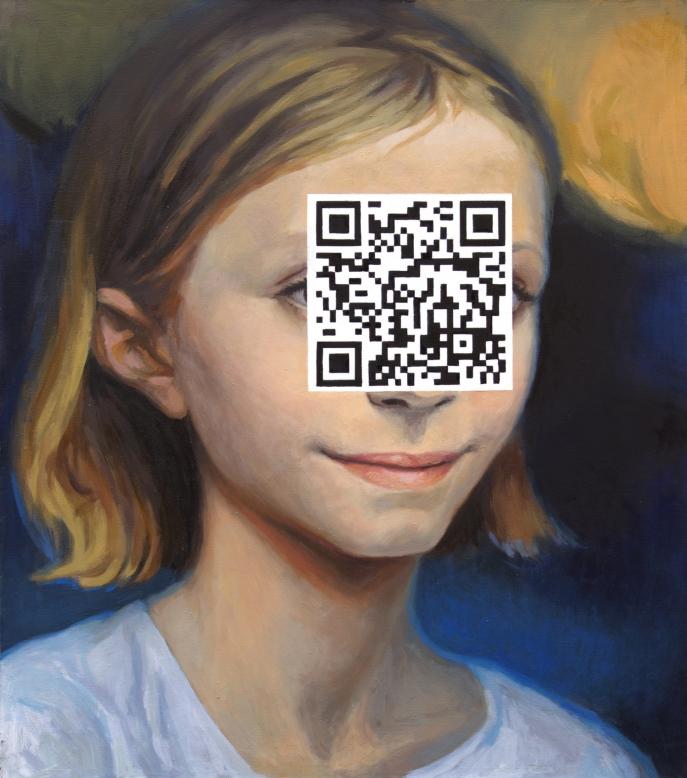
scape CONTEMPORARY ART REVIEW Land Special Edition
Girl, Oil on canvas, 2021
walking our readers through your usual setup, would you tell us something about your process?In particular, do you create your works gesturally, instinctively? Or do you methodically transpose geometric schemes?
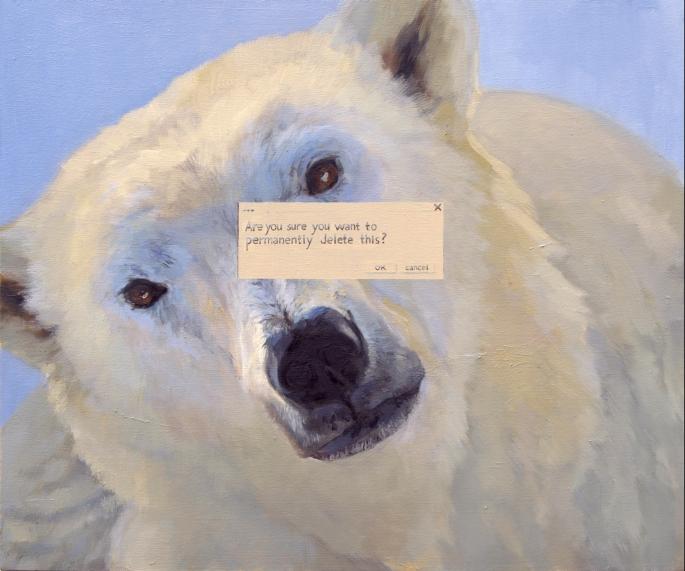
Nina Pancheva: The process of developing my paintings and installations could be described
as a kind of spiral – it usually starts with a question or a concept. Hence the first step is determined by the matters which I find important. Of course, these topics derive from my personal experience. Yet, in my practice I endeavor to move away from myself, not to focus on self- expression, but rather to approach fine art as a way of producing new
scape CONTEMPORARY ART REVIEW Land
Nina Pancheva
Polar Bear, Oil on canvas, 2021
knowledge, new understandings. This method requires collecting and analysing different kinds of source materials, both written texts, and visual materials. I often take or collect photographs that resonate with me one way or another.
The next step of the process often is quite intuitive – I let the images of my future work appear in my imagination without restricting them at first. At this stage, I usually decide on the exact materials which I am going to use, as their choice correlates with the initial questions posed. After completing the first rough sketches, I reflect on their imagery and refine the choices of colors, techniques, and size of the final work. Overall, the creative process shifts between the conscious and intuitive decisions about the imagery, materials, size, etc.
For instance, the work on my series of paintings Fragments of a Past (10 paintings, acrylic on canvas, sizes vary between 30 x 30 cm and 30 x 45 cm), has started with my interest in the relations between contemporary fine art and Socialist Realism, which was the main aesthetics in my country for 45 years.
A representation of a detail of an industrial plant as captured by an old photograph is depicted on a white background in the first painting from this series. The old photograph was a valuable source for my painting. The rigid composition, flat sky, and detachment of the architectural structure reference Bernd and Hilla Becher’s typologies. The latter encompassed a rigorous frontality of the
buildings and symmetrical composition, both evoking the simplicity of diagrams and the timelessness of monuments.
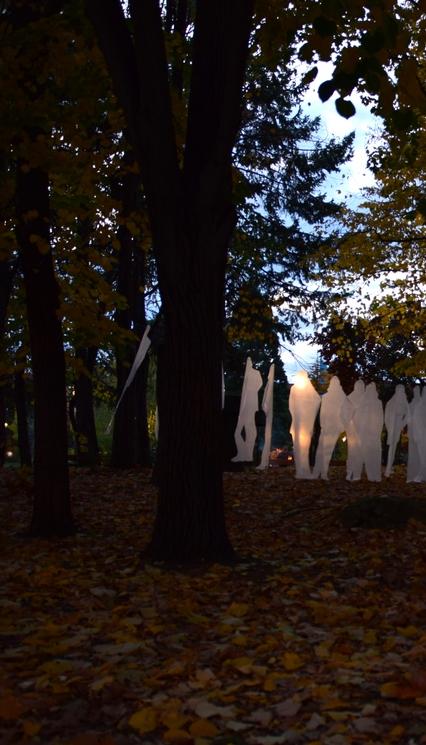
scape CONTEMPORARY ART REVIEW Land Special Edition
My painting does not try to copy or describe the photograph. Rather, by looking at its formal characteristics concerning the contexts of its
Memory of 10th November, installation
production and distribution, it endeavours to explore how they interact with and impact each other. In the process of developing the

scape CONTEMPORARY ART REVIEW Land
Nina Pancheva
In
In Memory of 10th November, installation
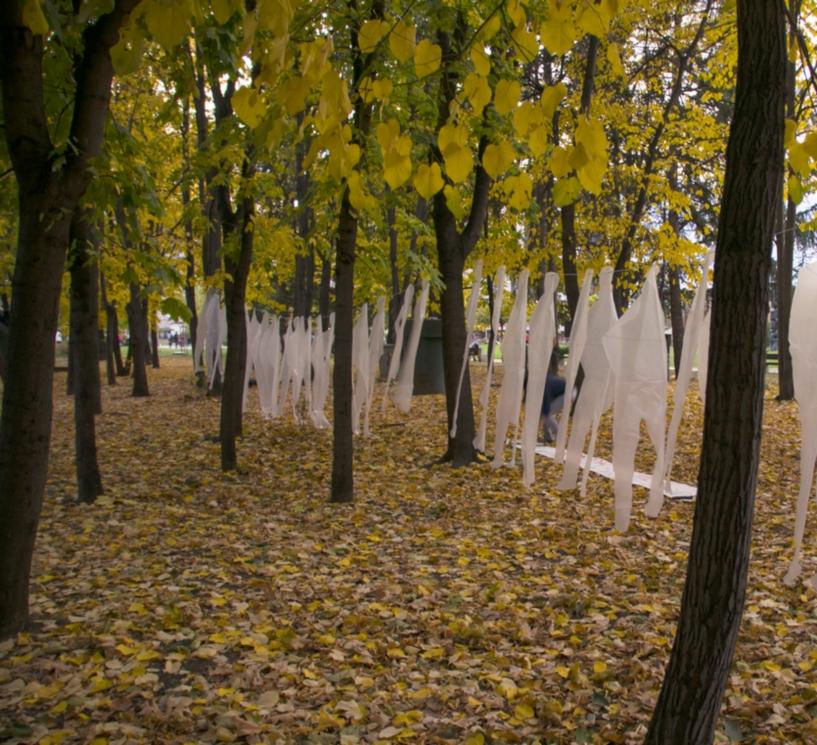
series, each painting has led to the differentiation of new relationships between the photographic representation of the past
and its new, post-Communist context - and consequently to a new painting. The meanings these photographs produce emerge in the
scape CONTEMPORARY ART REVIEW Land Special Edition
thin and nebulous constantly changing boundaries between the institutionalised notions of the past, the formal features of the
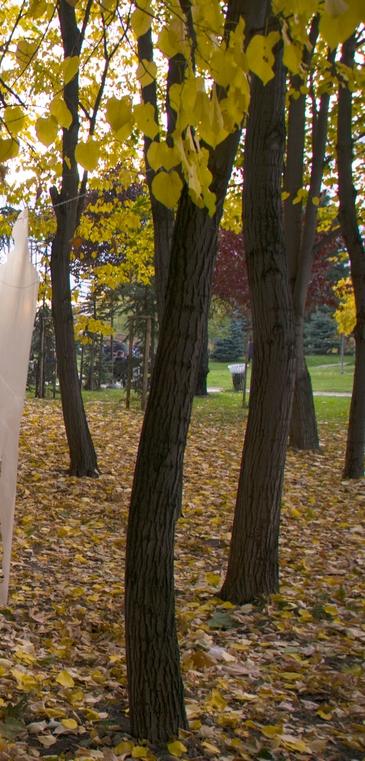
photographs, and the subjects they depict.
We have particularly appreciated the way your artworks — especially the interesting Road and Girl from the Computer Views series— feature balanced contrast between delicate nuances that give the paintings such poetic ambience, that is broken by the severe geometry of the forms: such an aspect of your artworks that creates tension and dynamics both at the level of visual perception and at a semantic point of view: how does your own psychological make-up determine the nuances of tones in order to achieve such brilliant results?
Nina Pancheva: Exploring my own psychological experiences has not been a conscious intention in my practice. Of course, the personal emotional state cannot be excluded, or even some outside influence that I was not aware of - a summer wind reminding me of my childhood, a call from a friend... these elements from the context of the work have their influence, yet, I think they can never be fully explored. So I prefer to focus on my work as a result of decisions. In the working process, I am involved in examining the subjects I have chosen and the techniques and colours I use derive from this choice. The series of paintings Computer Views (it consists of six paintings: Ice, Mars, Field, Polar Bear, Authorization Required and Girl, oil on canvas, sizes between 29 x 41 cm and 70 x 60 cm) is constructed around the tension between the mimetic look of the figurative elements depicted and the abstract forms of the computer dialogue boxes.
CONTEMPORARY ART REVIEW
Nina Pancheva scape
Land
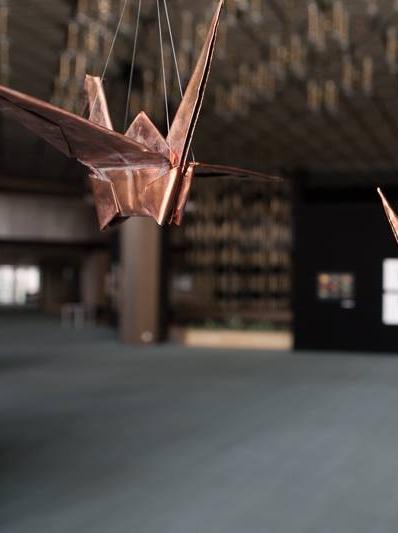

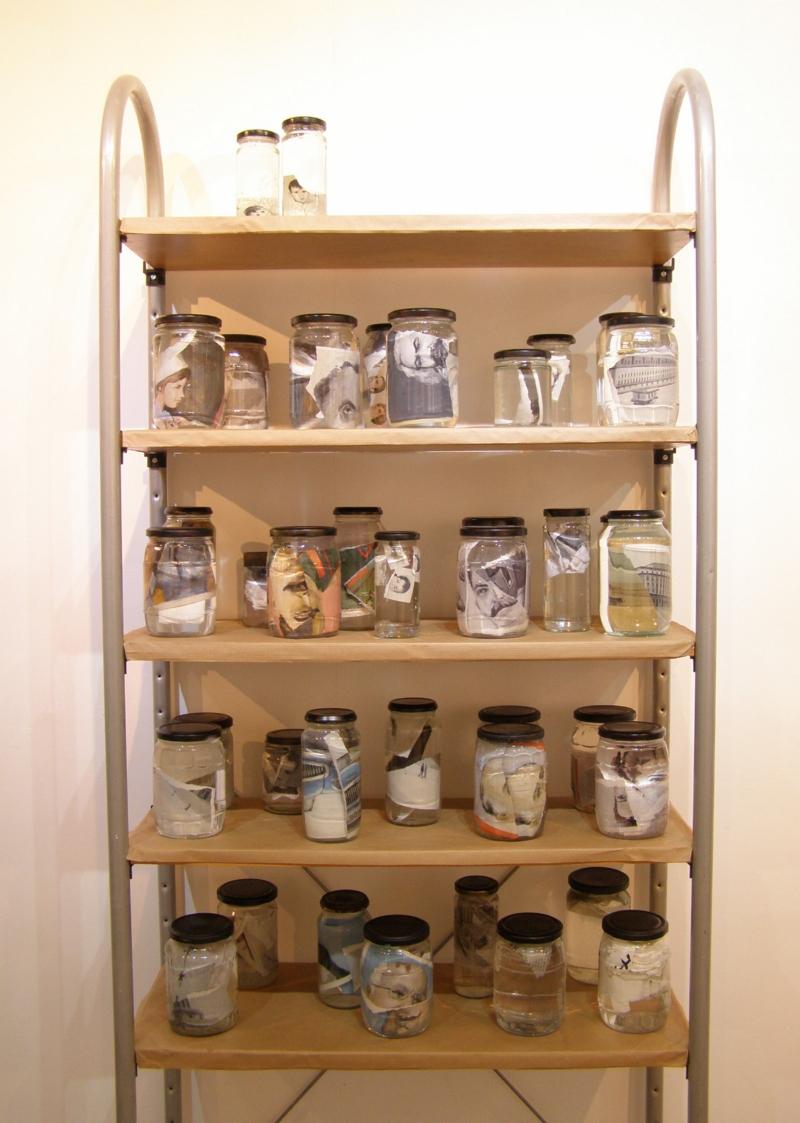
The process of working on this series started twofold. On the one hand, it aimed to address formal questions regarding space in the twodimensional surface of the canvas. By adding the computer dialogue boxes in the paintings, the surface separates into two levels of perception, one been the landscapes and the portrait of the girl, i. e. a realistic approach, and the other - an abstract shape of the computer dialogue box. The nuances are the result of the contrast I pursuit – the contrast between an image that looks calm, peaceful, and inviting (for example the landscape in the painting Field) and the cool gray colors and sharp edges of the dialogue box, which interferes with the perception of the landscape.
The other direction of the creative process unfolded with my hope to contribute to the awareness of current ecological problems, which we all face – the melting of the polar ice caps and the overall global climate change. In this sense, the computer dialogue boxes appear in the paintings as signs of reality, saturated with images, especially on screens. Sometimes it seems as the screens show us a more ‘truthful’ reality than our own five senses in our daily life perceive. We see, hear and еxperience the worlds’ events through screens, we feel as we belong the world through the power of these images. Our own existential experience is deeply influenced by this perception. On the other hand, the world on our screens seems somehow unreal – it resembles some kind of computer-generated reality. Thus issues as fundamental as global
warming seem far away as if they do not concern us.
My paintings combine elements of these two modes of perception, seeking to open up possibilities for awareness of these ecological issues, for the ways we perceive reality and the functions of visual art within this context.
The painting Girl continues the interaction between ‘reality’ and technology on another level – the face of the girl is covered with a QR Code which opens a website. In this address, the viewer can see the face of the girl as a whole, without the QR code. Ironically, the mediation of technology is once again necessary.
We dare say that you sapiently use the aesthetic aspect that marks out the surface of your artworks as a tool, in order to evoke precise reactions in the viewers: how do you consider the role played by aesthetics in your practice, in relation to more comprehensive goals of your artistic research? In particular, how open would you like your works to be understood?
Nina Pancheva: I would not say my work is about limitless freedom of interpretation. It does not aim to leave the viewer to imagine all kinds of possibilities to complete a given work. That is one of the reasons why I prefer figurative elements in my paintings – as they are easily recognizable based on our shared physical experience and thus provide a more limited ‘vocabulary’ of signs and symbols. Therefore I think the interpretations of my
scape CONTEMPORARY ART REVIEW Land
Nina Pancheva
work are not countless. Of course, there are always surprising understandings of the paintings. I leave space for the viewer to complete the paintings. After all, for me, visual art is a form of communication. I do not think it is possible or necessary to limit the interpretations to just one. It would mean that the paintings and art installations take part in peculiar monologues with themselves, and monologues are always frightening, I believe.

Your artistic production is deeply pervaded with effective socio political criticism regarding ecological and environmental topical issues — as the melting of the polar ice caps and the overall global climate change — that affect our unstable and everchanging society: as an artist profoundly convinced of the ability of visual arts in providing groundbreaking perspectives, how do you consider the role of artists in our globalised scene? Moreover, what does in your opinion distinguish artistic approach — in raising awareness on such themes — from a purely scientific one?
Nina Pancheva: Working in visual art is a great opportunity to produce new knowledge on a wide spectrum of subjects, wider than in scientific research for obvious reasons, I think. An artwork may be concerned with psychological, scientific, philosophical, political, and religious questions at the same time. Yet, despite this complexity, visual art can ‘talk’ to anybody. We do not have to underestimate its utopian function, I believe. The power of the image concerned with ‘what
if’ scenarios for the future is immense and it reaches human consciousness in various ways and levels.
scape CONTEMPORARY ART REVIEW Land Special Edition
Furthermore, visual art is not supposed to answer the so-called ‘hard question’, as defined by neurology, i. e. how does the mechanism of
the subjective experience of art proceeds. Rather, through visual art, we directly experience this process. In this sense, it may

Nina Pancheva scape CONTEMPORARY ART REVIEW Land
From the Utopia series
From
the Utopia series

support scientific research, and this interrelation could be beneficial. The insights of the artworks can be helpful to science and
vice versa - visual art and science could expand each other so a better understanding can be achieved. I am fascinated by this kind
scape CONTEMPORARY ART REVIEW Land Special Edition
of interdisciplinary projects.
Regarding the role of artists in our globalised scene, I am not sure I can answer this
question. I am not even sure if the art scene is so globalised. Especially now, in the midst and of the pandemic and the uncertainty of its continuity or whether we will be able to travel as before, the world seems more closed even than the world after the collapse of the Berlin Wall, when people were able to travel to another town only with the written permission from the police. It seems as the artists have lost their place in the talks for society’s future. Hence I find it difficult to define our role today.
On one hand, living in a capitalist system where the image, the projection of a certain lifestyle has become more important than the quality of a product would assume that the role of the artist has become more central. As Daniel Bell maintains, the cultural image changes the economical realm. Another sociologist, Jeffrey Alexander, claims that culture shapes society through the creation of shared meanings. Even in these uncertain times, we can continue to do this.
“To me, death is non-participation in communication,” says Ilya Kabakov in an interview with Boris Groys. This summarises in a great way my hope for my personal role as an artist - to participate in a dialogue, even in a small community, about art, ecology, history, politics, or even humanity itself.
Since ancient Greek age, the act of artistic creation — the mimesis — is inseparable from the idea of real world, in which art often disputes large and everchanging models of truth within coeval societal realities. Nevertheless, over the centuries — from
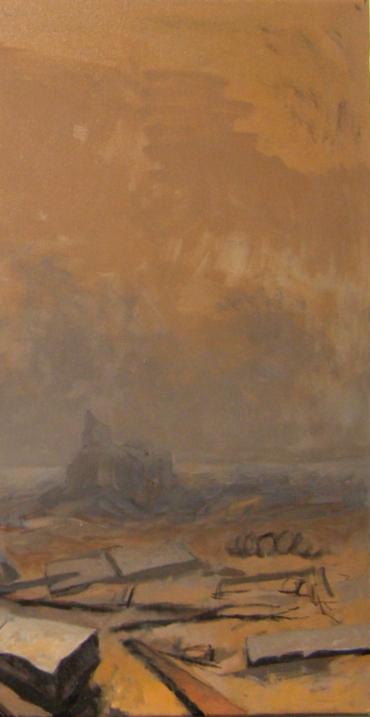
scape CONTEMPORARY ART REVIEW
Land Nina Pancheva


Géricault’s ‘’The Raft of the Medusa’’ to Picasso’s Guernica, to more recently to Michael Light’s and Thomas Hirschhorn works — have conveyed more or less subtle messages or personal views in their artworks: what does in your opinion distinguish on this aspect the artists from the past, from our globalised scene? In particular, does your artistic research respond to a particular cultural moment?
Nina Pancheva: My practice references artists and movements throughout art history, mostly from the 20th century and the 21st century. The energy of the attempts for building a new democracy in the 90s, after the fall of the Berlin Wall, although I was a child then, has its great significance in my work. The world around me seemed to wallop with excitement. And visual art had its vital role.
My installation In Memory of 10th November 1989 reflects directly to these years. It is concerned with this threshold in Bulgarian history – the fall of the communist regime. This day was anticipated with immense hope in democracy and freedom, the streets were filled with protesters against the old regime. Today, thirty years after this date, we have observed the crumbling of these hopes. In these decades, the country witnessed more than 150 public murders – of writers, prosecutors, lawyers, political figures... murders which took place in public spaces, sometimes in daylight. In my installation, the victims are turned into nylon shadows, connected in a solid chain (literally). This
particular material – nylon – was used not only because of its semi-transparency and surface. It is also a cheap, easily replaceable material. It
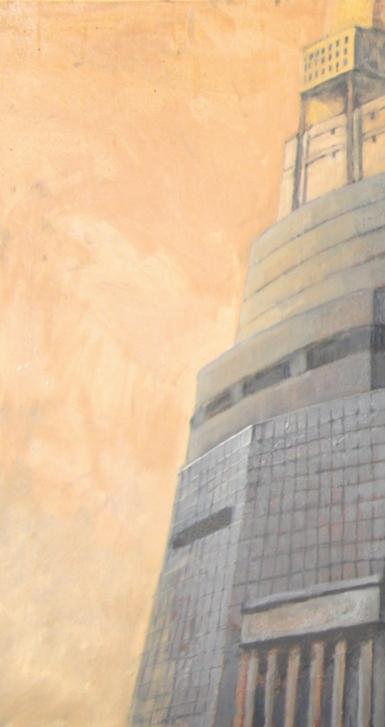
scape CONTEMPORARY ART REVIEW Land Special Edition
From the Utopia series
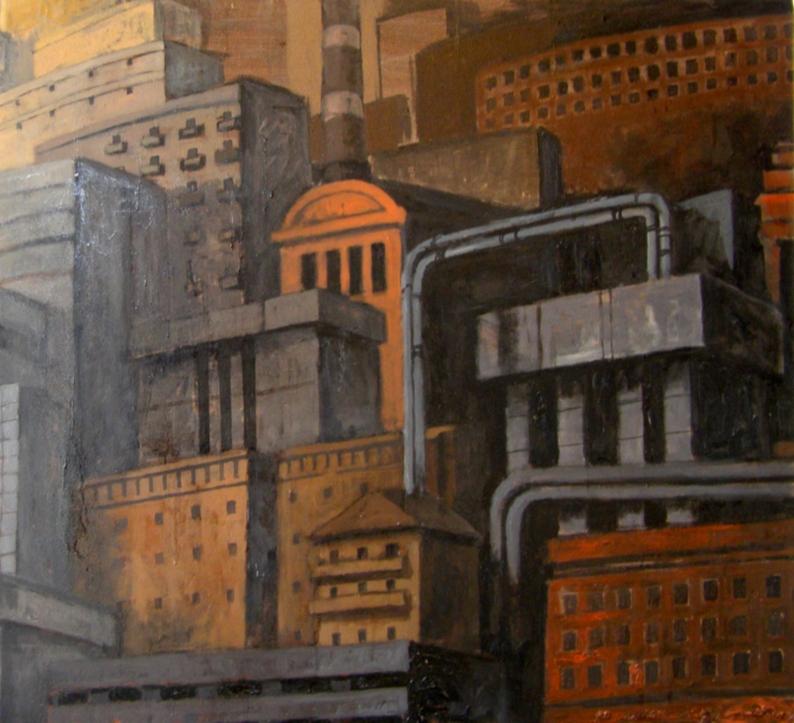
creates the illusion of a shadow, the shadow of all of these people, killed and forgotten, but also the shadows of all of us – the citizens of
this country who were in the position of mere witnesses of these events. In the ways I work with the photographic source material, my
scape CONTEMPORARY ART REVIEW Land
Nina Pancheva
From the Utopia series
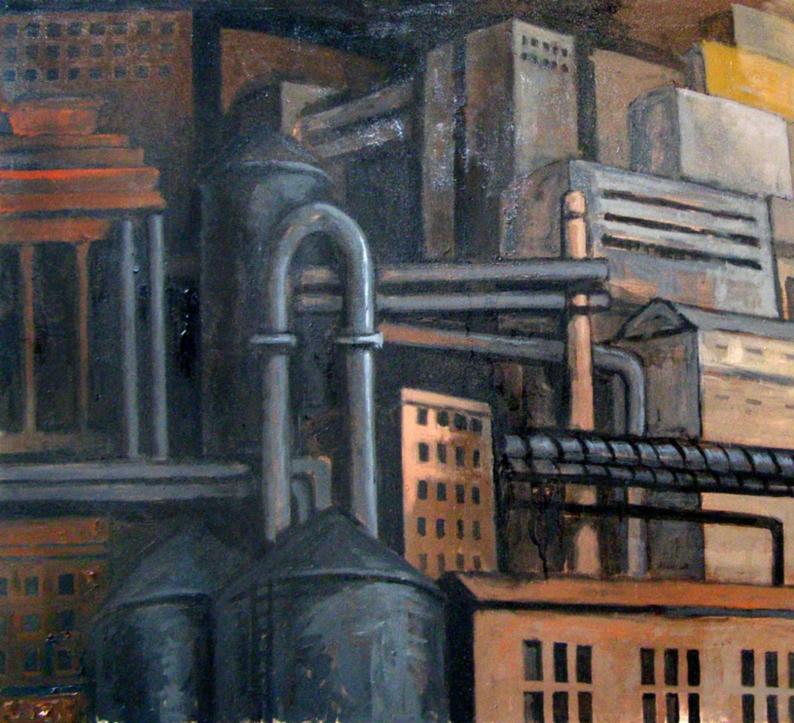
practice references Gerhard Richter’s ‘photopaintings’. The artist maintained that he valued photography for how it keeps the
artist from stylising, from seeing ‘falsely’, from giving an overly personal interpretation to the subject. Likewise, my practice avoids
scape CONTEMPORARY ART REVIEW Land Special Edition
developing personal interpretations of the chosen subject. I am also very interested in Ilya Kabakov’s work, mostly in the ways he
shapes the space in and around his installations, as well as in the fictitious characters he develops. As some kind of alteregos they represent sometimes opposing views on the same subject, often the way of life during the Communist era. In my series Utopia (series of 5 paintings, oil on canvas, 81 x 120 cm each, and 24 drawings, ink on paper) I did my version of fictitious artists, who were presenting their visual diaries. One of them was a passionate supporter of the Communist party. His drawings depicted utopian visions of the ‘bright future of communism’ – a future when a state-governed economy will merge with the technological success of an ideological triumph. The other artist did not support the ruling party, but could not take part in any underground art movement. In his despair for recognition, he envisioned an alternative life of his and drew him on 12 drawings.
Otherwise, my practice reflects on a wide range of art approaches in the 20th and the 21st century, such as the utopian cities by Paul Noble, the disturbing imagery of Adrian Ghenie, and many others. I am excited by the variety of these approaches and the materials used.
Another particular aspect of your artistic research concerns formal questions about the space in the two-dimensional surface of the canvas. Also your installations, as the interesting flying raise questions on the materiality of the work of art: how important
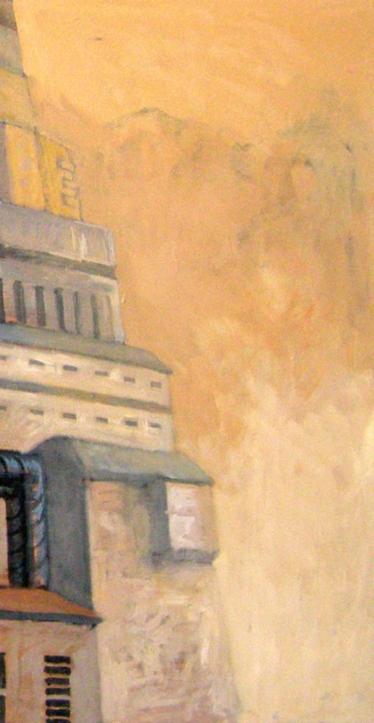
scape CONTEMPORARY ART REVIEW Land
Nina Pancheva
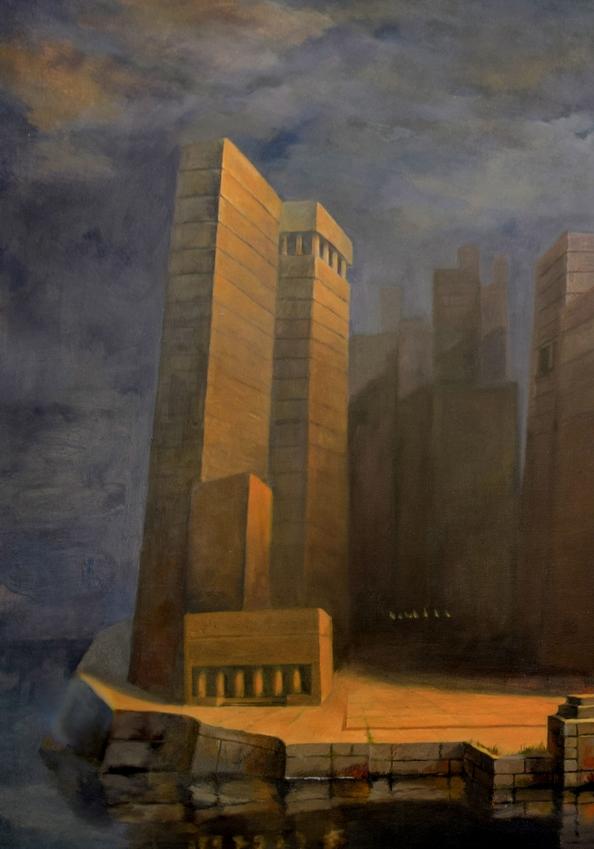
The Island of Utopia, Oil on canvas, 2013
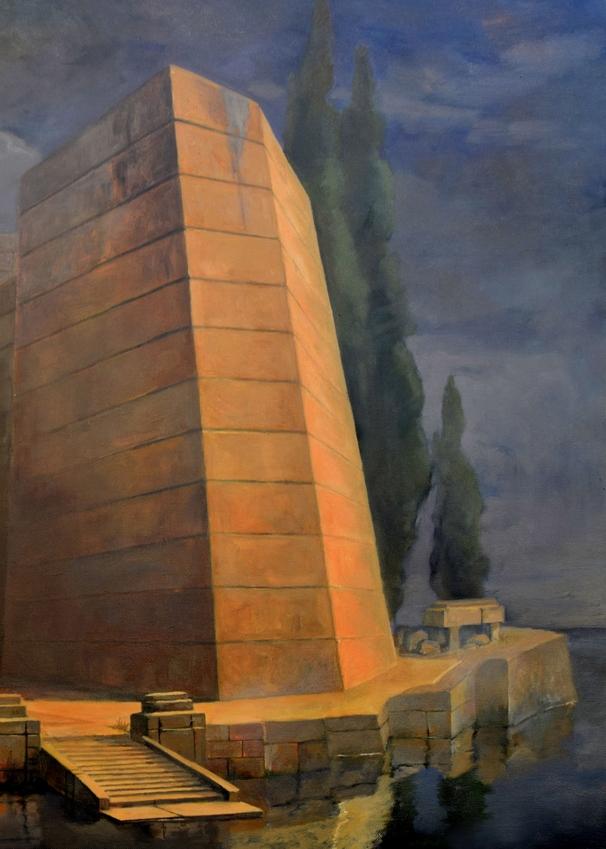
is for you to highlight the physical aspect of your artworks?
Nina Pancheva: The work on the installation
Flying started with the choice of the material – copper, it was not the usual way I proceed. I was invited to participate in an art residency that focused on this material and I enjoyed the opportunity to experiment with it. For that reason the work was based on the tension between the quality of this metal and the fly of the birds, of course, an action which seems impossible, well, at least outside visual art.
In my other installations, I choose materials whose modes of production, usage, and formal characteristics correspond with the concept of the work. For example, in my installation Preserved Memories (part of my practice-based Ph.D. research project, jars, acrylic on paper, shelves; 180 x 100 cm) I used glass jars to make peculiar spaces for exhibiting the paintings inside them. In this case, the paintings were torn into pieces so from different points of view various fragments of them can be observed, but never the paintings in their entity.
Each jar in the installation contains pieces of a painting executed in acrylic which depicts images of either public or personal memories. Why jars? As objects, they acquire a unique position, both temporal and spatial. In the years of state-planned economy, and constant economic crisis, winter supplies were a way of survival. In the installation,
they are displayed on wooden shelves, as if they were taken out from one’s cellar. The jars embody a correspondence to attempts for reconciliation with the past on an individual level, in personal narratives of the past confined in a private space. They signify perceptions of the past which connect to the public narratives, interacting and corresponding constantly with them and thus adding another dimension to the construction of discourses on the past.
It’s important to remark that the abstract details in your paintings aim to focus viewers’ attention to the fact, that they are looking at a constructed picture: how do you consider the nature of your relationship with your audience?
Nina Pancheva: In my practice is important to maintain a certain distance between the work and the viewer’s perception. My paintings and installations do not aim to immerse the audience in an immediate experience. The distance is one of the reasons to work primarily in painting, as this medium allows a slow process of making and thus long meditation on its imagery. Often the images I depict are fragmented, or the abstract elements (such as the dialogue boxes in the series Computer Views) obstruct the perception of the realistic parts as mimetic, i. e. the illusion of a ‘real’ space has been collapsed. Instead, a more critical view takes place. In this sense the distance functions in my practice as a critical distance. The imagery sometimes resembles a puzzle, as in the case
scape CONTEMPORARY ART REVIEW Land Special Edition

Diary of a Fictitious Artists
Fragments of a Past
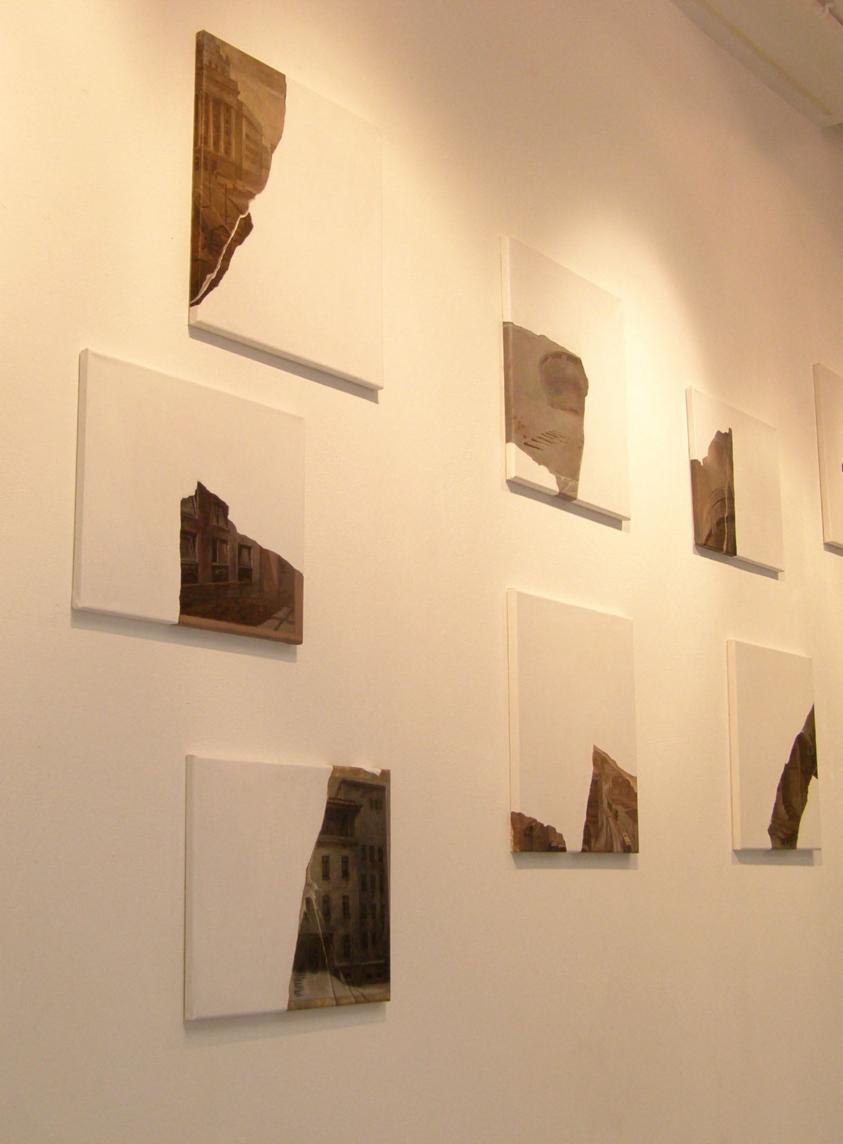
of the series Fragments of a Past, for instance. The pieces of torn photographs look like parts of a bigger picture, it seems as the viewer may find the matching pieces.
With its unique dreamlike ambience and abit enigmatic visual quality, memories from a utopia draws from a real city in Bulgaria with utopian features, and seems to highlight the bridge between the real and the imagined. Scottish painter Peter Doig once remarked that even the most realistic paintings are derived more from within the head than from what’s out there in front of us: how do you consider the relationship between reality and imagination, playing within your artistic production?
Nina Pancheva: At the time when I started the triptych Memories from a Utopia (oil on canvas, overall size 100 x 240 cm) I had just read a book about charity initiatives in Bulgaria in the 19th and the beginning of the 20th century. I was amazed by the scale of this charity – the providers were merchants, lawyers, teachers, scientists, and they built with their own funds many schools, kindergartens, children’s nomes, hospitals, etc. These donations were so numerous that, if combined, they could create an entire city. So I thought to myself - what a beautiful utopia this is - instead of looking at our history as a historical chain of revolutions, revolts and heroes, as the prevailing discourse in the media the last decades do, we can imagine and thus conceptualize a country, a place built
entirely on charity. Painting in its utopian function could do that.
I was fascinated by the revising the concept of utopia by Frederik Jameson and projects, such as the utopian provocation in New York by Steve Lambert and Andy Bichlbaum where a utopian edition of the New York Times was released. It resembled the real one, but was full of ‘ideal’ news, such as the end of the war in Irak, a new health system in the US, etc. With the presumption that this is just a utopia. i. e. a non-place and consequently we are always only on the path towards utopia, but we are never going to reach an ‘end point’. Yet we can still make some useful steps towards utopia, without the violence that worried Karl Popper.
The imagined and the dark side of a totalitarian ‘utopia’ have been explored in my painting The Island of Utopia (oil on canvas, 81 x 100 cm, shortlisted for Lynn Painter-Stainers Prize 2017).
In my painting Road (oil on canvas, 100 x 81 cm) I have placed some of the landmarks of London on a giant cube that hangs over the heads of two receding figures. The depiction of the landmarks allowed me to emphasize the scale of the cube. Reality here is only an outcome of imagination. The neuroscientific perspective of reality as a ‘shared illusion’ confirms this notion. “When we agree about our hallucination, we call that reality”, maintains the Professor of Cognitive Neuroscience Anil Seth. For me, it was interesting to learn that people who suffer
scape CONTEMPORARY ART REVIEW Land
Nina Pancheva
from a particular mental illness see the world in such dramatically different ways, which even include different kinds of perspectives, colours, etc. What is even more striking is that they share these distorted viewpoints, i. e. they see the world as their shared illusion. In this sense ‘realism’ in my paintings is not mimetic, rather it is a kind of accorded language which is understandable and thus can convey meanings to a wider audience.
Your are an established artist: over the years your artworks have been showcased in several exhibitions, and you were recently shortlisted for final exhibition at ING
Discerning Eye and at Las Laguna Art Gallery - Landscapes: as the move of Art from traditional gallery spaces, to street and especially to online platforms — as Instagram — increases, how would in your opinion change the relationship with a globalised audience?
Nina Pancheva: It does seem like the growing influence of online platforms develops more local art markets. In this new space we, the artists, can find an audience that personally engages with our work, the problems it addresses, etc. The only mediator is the particular platform, and of course, the algorithms it uses. It poses new requirements and thus influences our work.
What I mean in particular are the social platforms. There one can not only buy ‘followers’ but also comments for their own work. When I learned about that, it reminded me of the spiral, described by Nicholas Taleb -
of buying a book not because we find it interesting, but because the others are buying it. This makes me skeptical about some of the feautures in the social platforms, despite their unquestionable benefit. I much prefer to take part in an art scene that leaves the galleries and interacts with the urban space. To see and experience the immediate reactions of the viewers is very valuable to me.
We have really appreciated the multifaceted nature of your artistic research and before leaving this stimulating conversation we would like to thank you for chatting with us and for sharing your thoughts, Nina. What projects are you currently working on, and what are some of the ideas that you hope to explore in the future?
Nina Pancheva: Currently, I am working on two new paintings from the series Computer Views, hopefully, to engage the viewer with new viewpoints on our technological life and the perception of reality in all its ambiguity. I am also doing preliminary sketches for an art installation about our future experiences with technology – AI, and the devices that are being planned to connect us on a pre-verbal level. I am fascinated with the development of scientific areas such as neuroaesthetics and I am curious to see how my awareness of this area will affect my work and the direction of my practice.
An interview by Josh Ryder, curator and Melissa C. Hilborn, curator landescape@europe.com
scape CONTEMPORARY ART REVIEW Land Special Edition
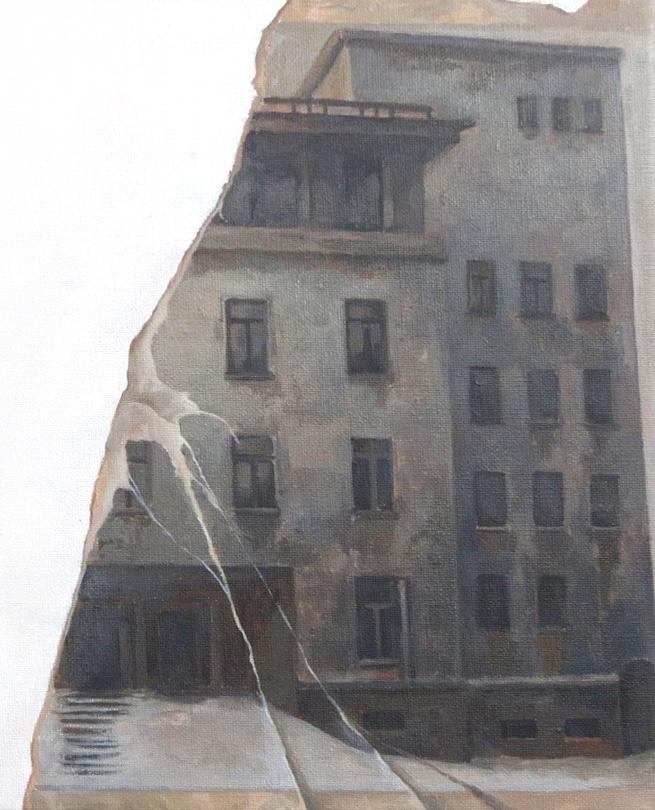
scape CONTEMPORARY ART REVIEW Land
Nina Pancheva
Fragments of a Past
LandEscape meets
John A. Blythe
I am an artist and educator based in Oxfordshire. My practice is situated in and beyond the realm of light and time based image making. My interest is as much in process as it is in subject.
My current art practice is an experimental exploration of the material possibilities of photography and the space between the representational and the abstract. Rather than using photography to capture images ‘out there’ that represent something external, I’m interested in how images might emerge from the photographic process itself and express something of the nature of the materials used. I’m particularly interested in contact, how material photography can capture and articulate the physical presence, both of the photographer and the subject. I’m excited by the alchemy of early and alternative photographic processes. There is a magic at work that surpasses the technicality of the process and taps directly into the imagination.
Underlying my work is my need to be sustainable and to acknowledge my individual responsibility to my community and the wider world. I work as part of an interdisciplinary community of artists interested in finding more sustainable approaches to art making, with an emphasis on reducing environmental impact and developing ecologies of sustainable practice.
My practice is informed and supported through the integration of my artist-teacher identities. My teaching draws on both pedagogic and andragogic strategies to co-create the learning environment. I am committed to the value art brings to both individuals and communities, not just engagement with works of art but more so, the practice of art. I am particularly interested in the role art practice can play in developing analytical thinking, critical discourse, political awareness and places of connection in the wider community.
An interview by Josh Ryder, curator and Melissa C. Hilborn, curator landescape@europe.com
Hello John and welcome to LandEscape.
Before starting to elaborate about your
artistic production and we would like to invite our readers to visit in order to get a wide idea about your multifaceted artistic production, and we would start this
scape Land CONTEMPORARY ART REVIEW
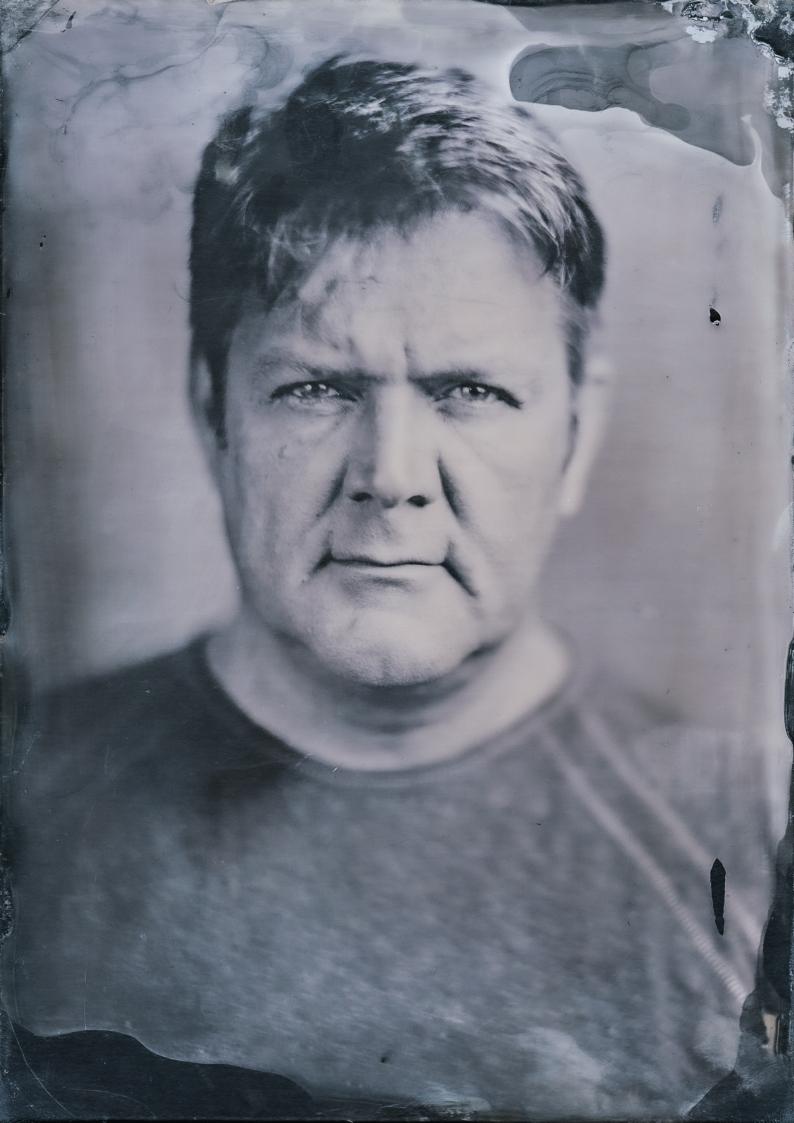
Title: FFCAP M (PF05.1+4-PF05.1+4)190608
Medium: Fujifilm Fujicolor Crystal Archive Surface M Size: 40.6cm x 50.8cm
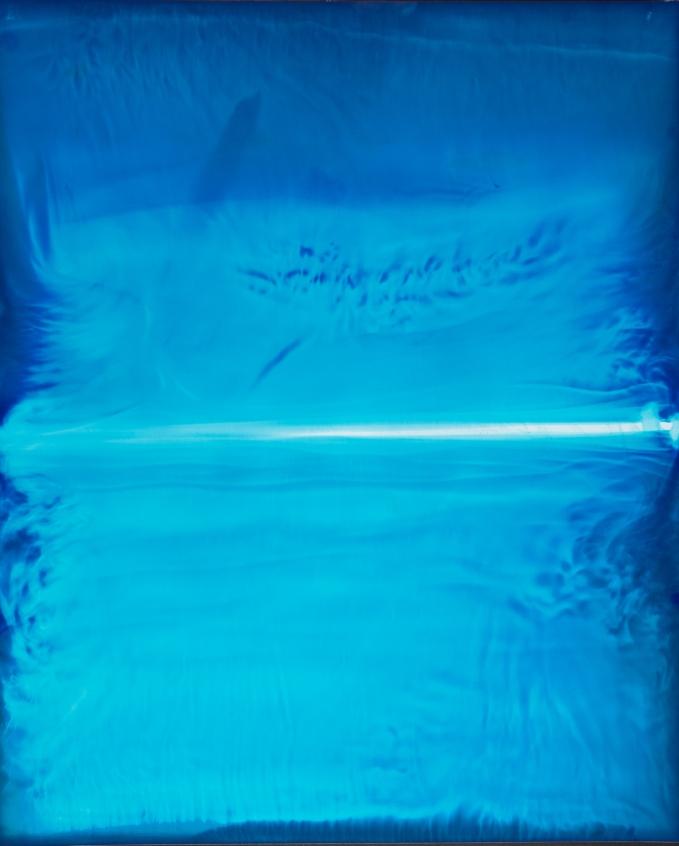
scape CONTEMPORARY ART REVIEW Land Special Edition
#1
Title: AChPECU310 L (PP01.1+5PF10.1+9)190524 #1
Medium: Agfachrome PE CU 310 Surface L
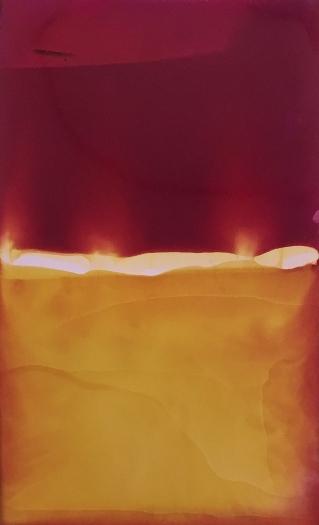
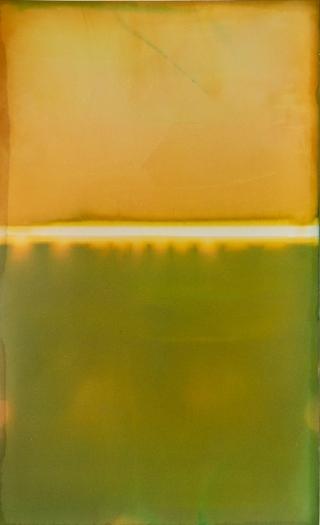
Size: 15.3cm x 20.3cm
Unique Work
interview with a couple of questions about your multifaceted background. You have a solid formal training: you hold a MFA in Fine Art, that you received from Oxford Brookes University, and you later nurtured your education studying under Michael Schaaf and
Title: KERIII N (PP01.1+5PF10.1+9)190507 #1
Medium: Kodak Ektachrome Radiance III Surface N
Size: 15.3cm x 20.3cm
Unique Work
Rotimi Fani-Kayode: how did those years influence your evolution as an artist? How does your cultural substratum direct the trajectory of your current artistic research?
John A. Blythe: Thank you for this opportunity to share my art and my
scape CONTEMPORARY ART REVIEW Land
John A. Blythe
Title: KCPC SR TSL (PP01.1+5PF10.1+9)190524 #1
Medium: KonicaColor PC Paper Type SR Surface SL Size: 12cm x 20.3cm
Unique Work
thoughts with your readers, I really appreciate your interest in my work. Much of my formal training is recent, I only completed my MFA two years ago. Before that I had little formal art/photography training, in fact I had little formal education
Title: ACo CN310/8 (PP01.1+5PF10.1+9)190524 #1
Medium: Agfacolor CN 310/8 Glossy Size: 12.7cm x 20.3cm
Unique Work
beyond school, as I didn’t go to university. The arc of my journey as an artist is separated into a couple of explicit stages. My passion for photography, like most, started in my teens. I was a keen amateur photographer for about ten years before I
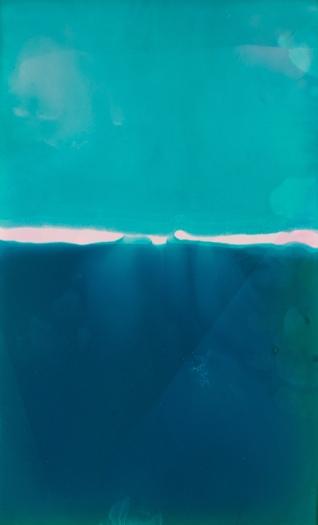
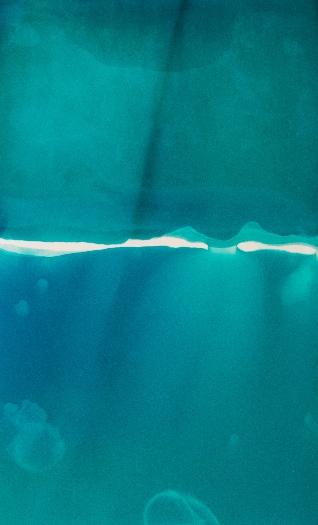
scape CONTEMPORARY ART REVIEW Land Special Edition
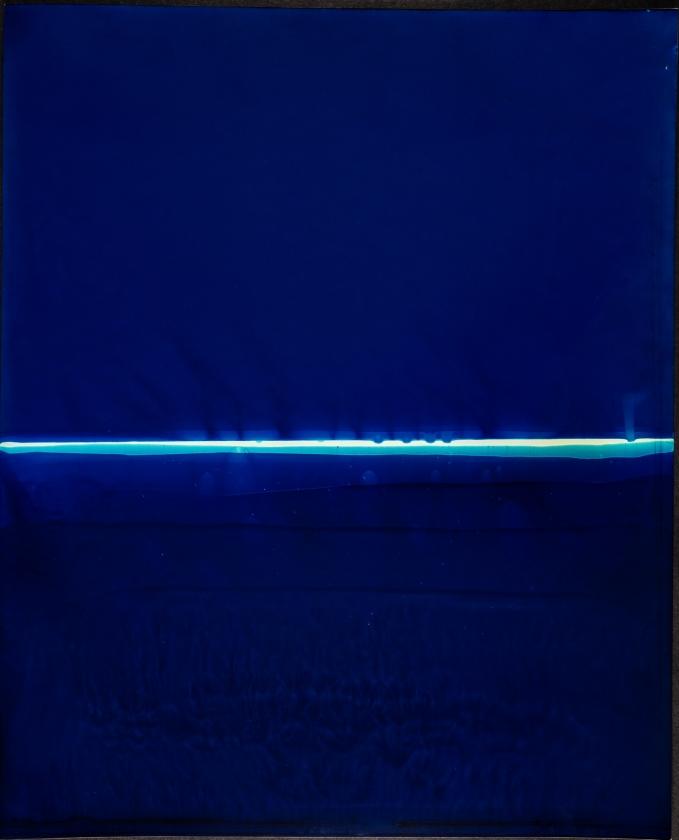
scape CONTEMPORARY ART REVIEW Land
John A. Blythe
FFCAP M (PP01.1+4-PP01.1+4)190608 #1

scape CONTEMPORARY ART REVIEW Land Special Edition
AChPECU310 L(PP01.1+5-PF10.1+9)181204 #2
Title: FU 9 G (PP01.1+4-PF05.1+4)190524 #2
Medium: Fotoubet-9 Glossy (1985)
Size: 9cm x 12cm
Unique Work
felt confident enough to even think of being more serious about it. In the late 80’s I lived in Shoreditch, in London. I was taking lots of street and architecture images at the time and really enjoying my photography, just for myself. I saw a notice for a photography evening class and decided to attend. It was there I met Rotimi Fani-Kayode who was an amazing photographer, and a wonderful
Title: FU 9 G (PP01.1+4-PF05.1+4)190524 #1
Medium: Fotoubet-9 Glossy (1985)

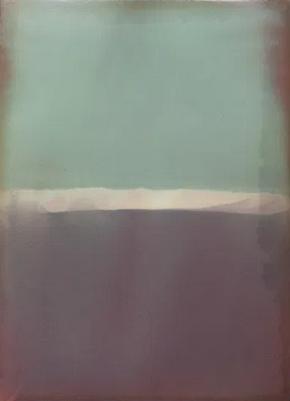
Size: 9cm x 12cm
Unique Work
person. He really opened my eyes to how photography could be something both of beauty and meaning, of aesthetic and politic. It was partly his influence that eventually led me to become a professional photographer and I value the influence he had on me to this day.
In the early 1990’s I started working as an
John A. Blythe scape CONTEMPORARY ART REVIEW Land
assistant in a commercial photography studio photographing products and room interiors. I soon progressed to getting my own work photographing products for brochures and shooting magazine interiors. I then moved into food photography and continued doing commercial work until about 2010. I often felt I was missing something, running a photography business is hard work and didn’t really leave me the mental space to continue with my own personal work. Eventually I felt this balance was something I needed to address. By then, we (my wife and two children) had moved out of London and I decided I needed to change direction.
In 2010 I started teaching a few hours a week and made a concerted effort to make time for my own creative practice. My teaching developed and I started teaching Foundation Art and A Level Photography. I was then accepted onto an MA course in Education which I started in 2014. The course was structured specifically for art teachers and it was a requirement to establish a personal art practice. This was the first real opportunity I had to focus hard on what I wanted to do and think seriously about what I am interested in. I’ve always been interested in the material, I started photography before digital was a thing and I have always seen photographs as three dimensional. When I go to an exhibition of photography, I don’t just look at the images, I often look at photographs from the side to see the texture of the print surface and the curves and undulations of the print and how it catches the light.
In 2014 I went to a wet plate collodion workshop with Michael Schaaf. Michael was another significant influence on me. His enthusiasm for process and the alchemy of chemical photography illuminated an idea for me that physical photographs can be unique ‘things’ invested with place and connection and personal significance beyond just a repository for memories or a mode of mass production. I did several workshops with Michael exploring early photographic processes, he was a great sounding board for ideas.
After two years of my MA in Education I realised I needed to devote more of my time to developing my art practice and decided to transfer to the MFA course at Oxford Brookes University. I did this parttime over two years and it helped me solidify all the thinking and feeling I had about my creative interests. It brought together my curiosity (by opening the door to research), my fascination with process and material (by allowing me the opportunity to just play) and my belief in aesthetic (through critical discourse). My current studio practice is very much formed out of my MFA experience.
For this special edition of LandEscape we have selected Chromogenesis PI, a stimulating body of works that our readers have already had the chance to get to know in the introductory pages of this article. What has at once captured our attention of your meta exploration of the thingness of photographic materials, is the way it unveils the point of convergence between the concepts of medium and message: when walking our readers
scape CONTEMPORARY ART REVIEW Land Special Edition
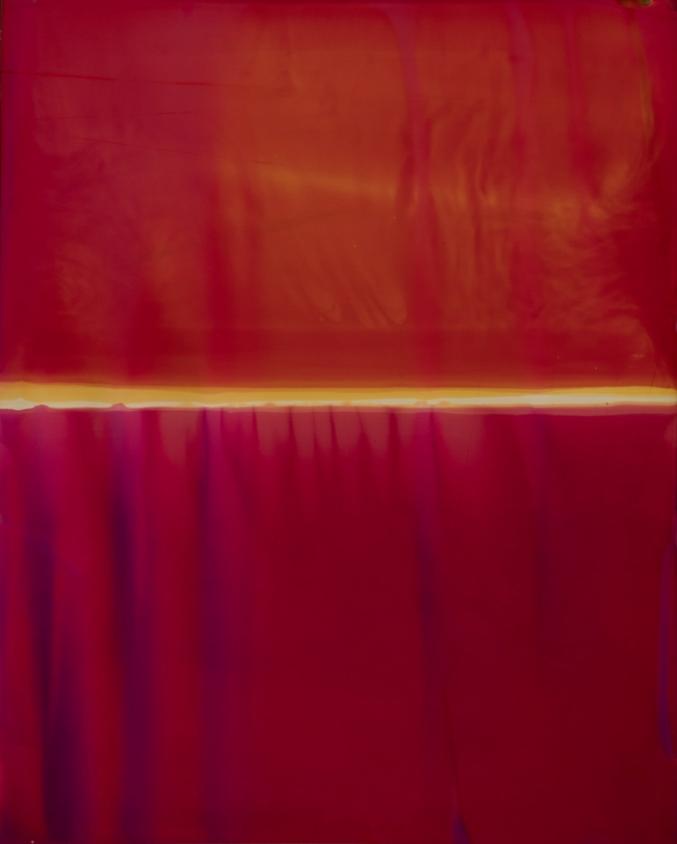
scape CONTEMPORARY ART REVIEW Land
John A. Blythe
KERIII N (PP01.1+5-PF10.1+9)190608 #1

scape CONTEMPORARY ART REVIEW Land Special Edition
KCPC-SR/SL (PP01.1+5-PF10.1+9)181204 #1
through your usual setup and process, would you tell us something about the genesis of Chromogenesis PI?
John A. Blythe: Chromogenesis evolved from my MFA research. I had already been looking at materiality and experimental approaches to photography and artists whose work interested me. I was familiar with artists such as Catherine Yass, Garry Fabian-Miller, Walead Beshty, Allison Rossiter, all of whose work has explored materiality and photography at its margins. So, I just started to play around with colour photographic paper and to research the colour chemistry process. Play features a lot in my development process. One of my earliest and fondest memories is sitting at a table on the porch of my grandparents’ house, finger painting, making a real mess. Things haven’t changed much!
I read a comment by Beshty on his colour photograms, that he considered them ‘to be literal, meaning that they aren’t abstractions of a particular subject matter but are concrete manifestations of a specific set of conditions’. This notion appealed to me, photography is a recording medium which is generally used to record optical representations of a moment in time, however, as anyone who has worked in a darkroom can tell you, the photographic ‘process’ can record many things. Dust in the air during exposure, drops of fixer accidentally splashed onto a print during development, someone opening the darkroom door at the wrong moment, exhausted developer, fingerprints on a negative. Photographic prints record traces
of their journey into being, beyond just the image imposed on the paper.
This interests me. I wanted to allow these normally invisible and often avoided traces to become a welcome part of the work. Most of my materials are obsolete, there are relatively few colour photographic papers still being manufactured now. Most of my materials are between twenty and fifty years old and so already come with traces of their lives, their own history. I’m currently collecting papers manufactured in soviet era Eastern Bloc countries. They have quite unique characteristics compared to, for example Agfa or Kodak paper.
In order to make visible something of these traces it became obvious to me that any externally imposed image would simply be getting in the way and so I remove the light sensitivity from the paper before I start to work with them. They are in essence nonphotographic photographs. This only removes the light sensitive silver element of the paper's chemistry but leaves the colour dyes and this is what I work with. This means the images are entirely internal responses.
We have appreciated the way
Chromogenesis PI sheds a whole new light on the importance of the physical aspect of Art, responding to Gerhard Richter's view about the emergence of meanings from the ''thing'' and its intrinsic manifold significance. New York City based artist Lydia Dona once remarked that in order to make art today one has to reevaluate the conceptual language behind the mechanism of art making itself: do you
CONTEMPORARY ART REVIEW Land
John A. Blythe scape
create your works gesturally, instinctively?
As an artist particularly interested in experiencing the alchemical magic that inhabits analogue photographic materials, how do you consider the relation between the nature of the concepts that you explore in your artistic research and the physical aspect of your daily practice as an artist?
John A. Blythe: As well as the traces I mentioned above, there are also many gestural aspects to photographic darkroom practice. These gestures become repetitive, practiced, ritualised, by their practitioners. For me, the immersion of the paper into the developer is one of the magic moments when the true alchemy of the darkroom reveals itself. No understanding of the physics or chemistry of photography fully explains the feeling of seeing the plain white surface of the paper transform. I became aware over time that to some extent, the experience of this moment is more important to me than the image itself. So the idea of removing the imposed image and conjuring images from within the material, allowing the material its own voice in the conversation, felt natural.
I think a lot of artists, photographers particularly, work intuitively to some degree. Many aspects of my process have been arrived at through extensive research, but that only gets you so far. At some point you have to let your instincts take over and follow your feelings. However, although this work is a significant departure from the normal conventions of photographic image making, my training as a photographer doesn’t just disappear. I’m not starting
from scratch, all my acquired experience of seeing, of feeling my way to an image are still in play. I’m following all the same practices in the darkroom, the same gestures and the same rituals. I guess it’s a bit like playing all the same notes in a piece of music just in a different order.
As you have remarked in your artist's statement, you are fascinated by the aesthetic quality of the materials you work with, revealing the inner landscape that is a manifestation of both the process and the materials own physical character. How do you consider the role of chance and improvisation playing within your artistic research?
John A. Blythe: The early stages of my experiments with each material are improvisational, playful, chance is very much in evidence. However, as I progress, the process becomes more of a call and response, a dialogue. I am conscious of the importance of listening more than speaking.
Jean Renoir once commented that ‘You control everything. You plan everything, but you leave a door open for reality to enter.’ I am quite meticulous in some aspects of my preparation and handling of materials, twenty plus years as a professional photographer has made sure of that. But, I’m also doing something that is completely counter to normal photographic practice. I’m as prepared as I can be, but ultimately I’m poking the ground in front of me with a stick while inching forward into a territory full of unknowns. And this is the excitement, the
scape CONTEMPORARY ART REVIEW Land Special Edition

KERIII N (PP01.1+5-PF10.1+9)190608 #3
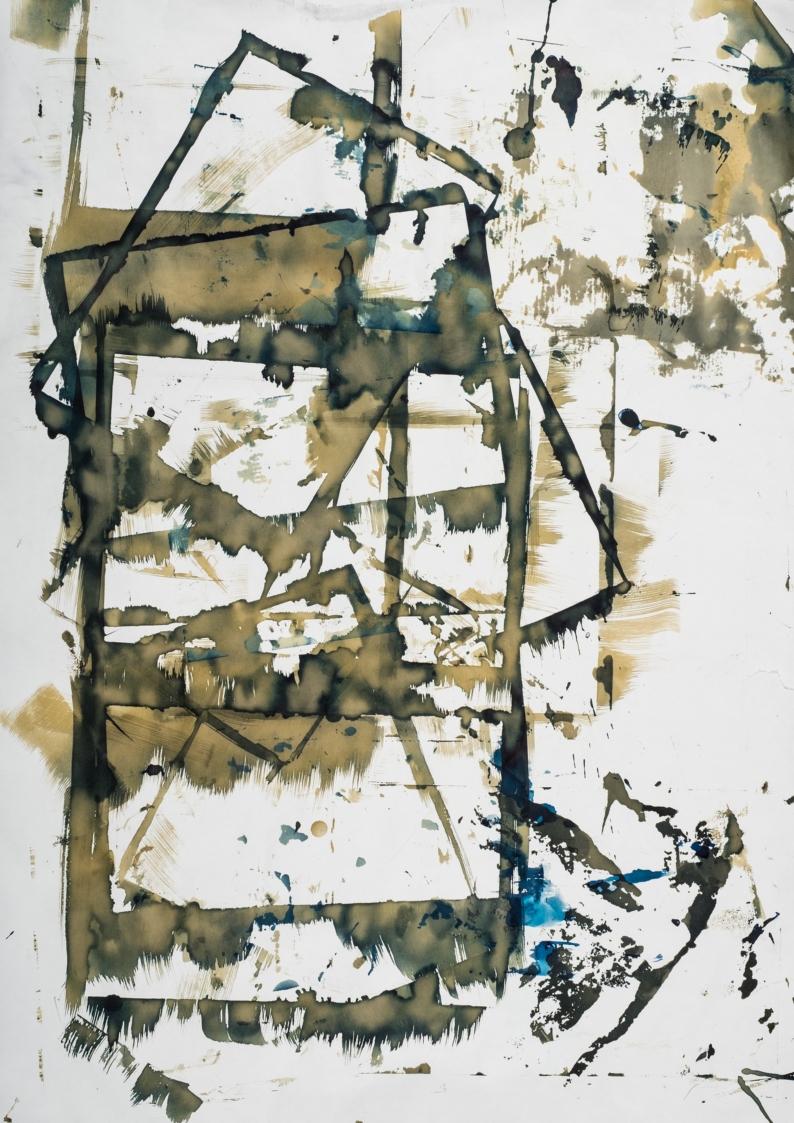
FAD3 Spring Term #2
exploration, the discovery. As new possibilities emerge adaptation takes place, but there is only so much control I can have, I’ve never been able to make the same outcome twice and that’s not what I’m after, that would feel like standing still.
We definitely love the way you capture "the real", then digest it through your peculiar process, that gives life to such seductively ambiguous images. Scottish artist Peter Doig once remarked that even the most realistic work of arts are derived more from within the head than from what's out there in front of us, how do you consider the relationship between reality and imagination, playing within your artistic production?
John A. Blythe: This is where the ‘thingness’ comes alive for me. John Hilliard also talked about this, how the abstract focuses attention on the ‘whole object itself’. It requires the viewer to consider the process and to imagine an understanding of something that visually, is representative of nothing other than the process of its own making. The reality is there for all to see, but it requires imagination in order to fathom an understanding of it.
Another interesting body of works that has impressed us and that we would like to introduce to our readers is entitled "records of things [not] seen" and it revolves about the relationship between your artist and teacher identities and how you make links and find modes of intersection between them. In its apparently minimalistic feature, your series hides the refined complexity of the interaction between teachers and
students: how does being a teacher influence your creative process? In particular, did you ever get inspired by your students?
John A. Blythe: There is no tangible, measurable way to record the impact that teachers and students co-create in their interaction, but it is without doubt symbiotic.
Around the time I was studying for my PGDip in education, while attending a talk at The History of Science Museum in Oxford, I had the privilege to see and in fact hold an original edition of Anna Atkins book of cyanotype impressions from 1843. I was immediately struck by the story of the work's existence. Anna Atkins had made these pages, coated the paper, collected the plant samples, exposed and washed the paper. The sense of touch was unavoidable.
The title of this work comes from John Berger’s essay Understanding a Photograph, in which he describes photographs as simply ‘records of things seen’. However, the cyanotype process, as Anna Atkins used it, very much represents ‘things’ that are themselves not seen. What we see is a shadow of the subject rather than the subject itself. Anna Atkins book of British algae does not show the specimens she collected, rather an impression of them, but their presence is implicit in the contact nature of the process.
The cyanotype process is usually the first thing I teach my new students. So, we are still getting to know each other. Developing trust as a group, navigating and
CONTEMPORARY ART REVIEW Land
John A. Blythe scape
negotiating. The cyanotype process is such a simple yet startling process if you have never done it before. It presents lots of opportunities to play and experiment. If I’m honest, I am testing them a bit, letting them loose to see how they each respond, how confident they are to move beyond the obvious.
These sheets which are co-created with my students, act as a metaphor, representing that impression we all leave on each other through our interactions. It’s impossible to be precise about what it is, it’s messy, unimaginably complex. There are some things I can identify that I get from my students, energy, they keep my curiosity alive, exercise my patience, challenge my conceptions and keep me present, and much more I’m sure. The practice of teaching itself brings benefits. The need to be constantly reflective definitely travels between my artist and teacher identities.
As you have remarked once, your interest is as much in process as it is in subject. In a certain sense, after a work of art is created, its process continues in the mind of the viewers with freedom to realize their own perception. Austrian Art historian Ernst Gombrich once remarked the importance of providing a space for the viewers to project onto, so that they can actively participate in the creation of the illusion: how important is for you to trigger the viewers' imagination in order to address them to elaborate personal interpretations?
In particular, how open would you like your works to be understood?
John A. Blythe: With Chromogenesis, the process of making is for me, it satisfies my desires, my curiosity, my playfulness, and my need for control. That’s not to say the resulting images are purely incidental. They often start that way, but I’m refining aspects of them, the materials and I cocreate their aesthetic. I’m so drawn to their depth, their resonance, I do fall in love with them.
I’m very keen to leave space for the audience to have their own conversation with these works. I want the images to speak for themselves and the audience to feel for themselves. Of course I want the audience to fall in love with them too. Not everyone is going to, I’m good with that. In 2017 I went to the exhibition of American Abstract Expressionism at the Royal Academy of Art, actually I went three times. On the first visit I took my students so I was too preoccupied to really engage with the works. On the second visit I remember standing in front of a painting by Clyfford Still (PH-247, 1951) and suddenly I’m crying. I look around and people are wandering by, apparently unmoved and oblivious to this extraordinary work of art, but of course that is how it is. We each have to find what moves us.
It's important to remark that you are committed to the value art brings to both individuals and communities, not just engagement with works of art but more so, the practice of art. Many contemporary artists, such as Thomas Hirschhorn and Michael Light, use to
scape CONTEMPORARY ART REVIEW Land Special Edition
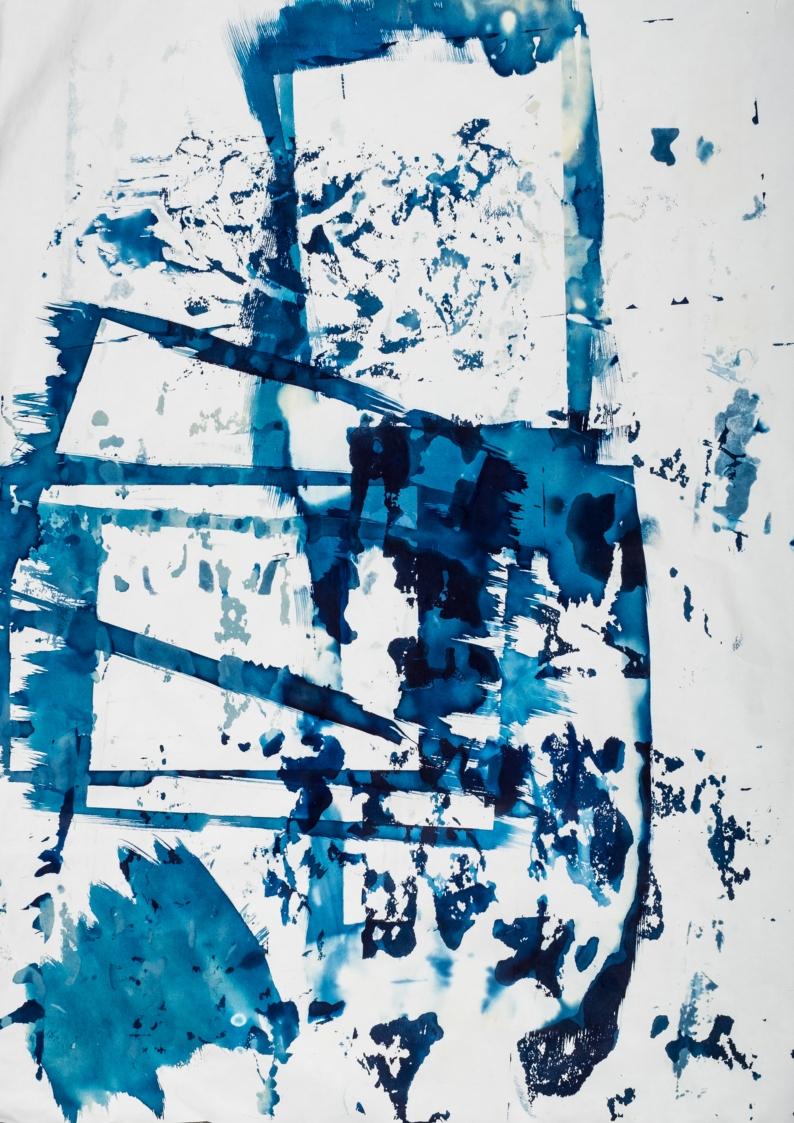
FAD2 Autumn Term #1
include socio-political criticism and sometimes even convey explicit messages in their artworks: as an artist particularly interested in the role art practice can play in developing analytical thinking and critical discourse, do you think that artists can raise awareness to an evergrowing audience on topical issues that affect our everchanging society? In particular, does your artistic research respond to a particular cultural moment?
John A. Blythe: As a teacher I’m very aware of the pressure art faces to justify its value in modern education. Art teaching is being marginalised in many schools and I see this as very short sighted thinking. Art feeds into and has a positive effect on so many aspects of our lives. I’m hopeful that our experience of the Covid pandemic and lockdown may go some way to reconnecting us with our appreciation of art and making. To bring its ‘value’ (as that is how everything now has to be measured) in creating a more balanced and healthy existence for all of us, to the fore.
I think most artists, at some level, respond to what is happening around them, either in their personal life or in the wider world. I do feel there is a pressure at the moment to make art that is overtly political, statement art. But for me, the greatest value art offers is freedom. The freedom to make the art you want to make in spite of the pressure of expectation or the barriers of politics. So, if you want to make political statements with your art you should do so, but if you want to paint pictures of the flowers in your garden for no other reason than the joy it brings
you, then that is equally important. Each generation of artists face barriers. Art is always under threat, always has to fight for recognition and so it can be argued that making any form of art has, and always will be, a political act of defiance.
There are culturally relevant issues that motivate my work. Most of the materials I use are either chosen for their low environmental impact, such as the cyanotype process, or in the case of Chromogenesis, would otherwise end up as waste in landfill. Using existing materials allows me to be more sustainable in my practice. I am also involved in interdisciplinary collaborations with many artists who are exploring ways to make less toxic chemicals for use with analogue photographic processes and develop sustainable ecologies within their practice. Finding ways to reduce environmental impact are essential elements of my research. This is an aspect of my work but it’s not the point of the work, it’s not the message.
You are an established artist: you have had four solos, including Chromogenesis at Upcycle Gallery, Templar Sq, Oxford, and over the years your artworks have been showcased in several group exhibitions, both in the United Kingdom and abroad: how do you consider the nature of your relationship with your audience? By the way, as the move of Art from traditional gallery spaces, to street and especially to online platforms — as Instagram
https://www.instagram.com/johnblythe65
scape CONTEMPORARY ART REVIEW Land Special Edition
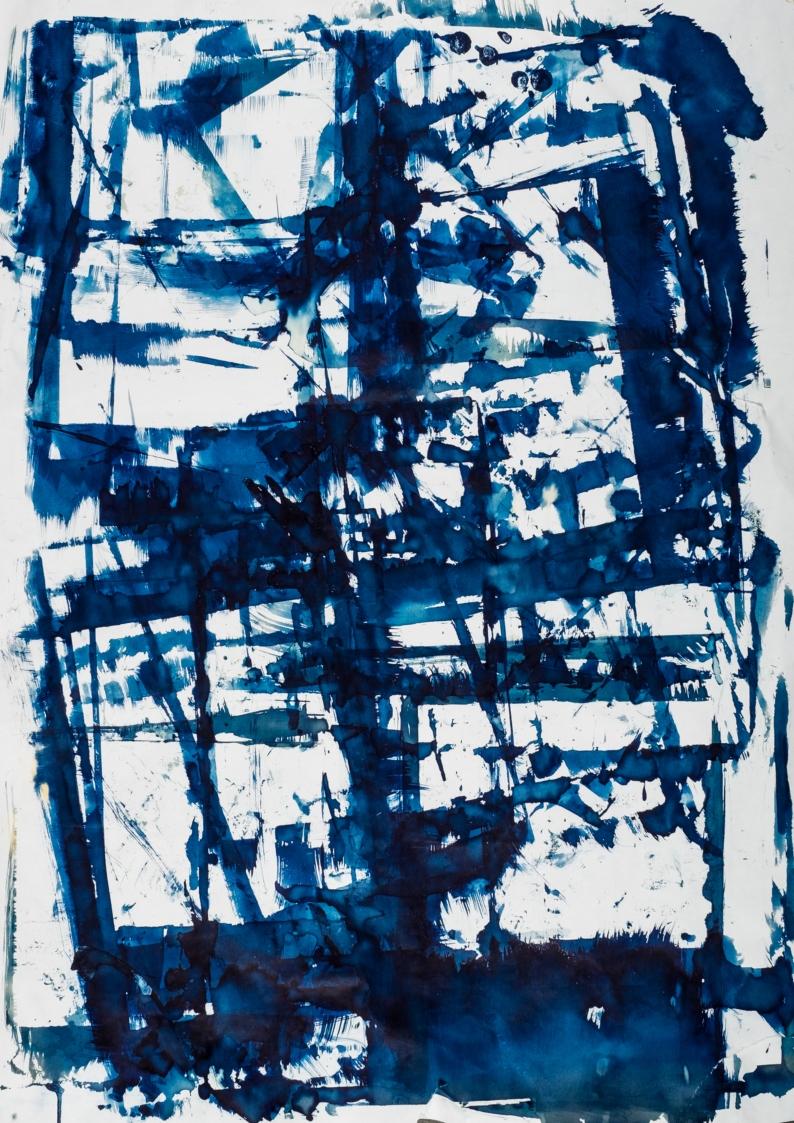
FAD2 Autumn Term #2
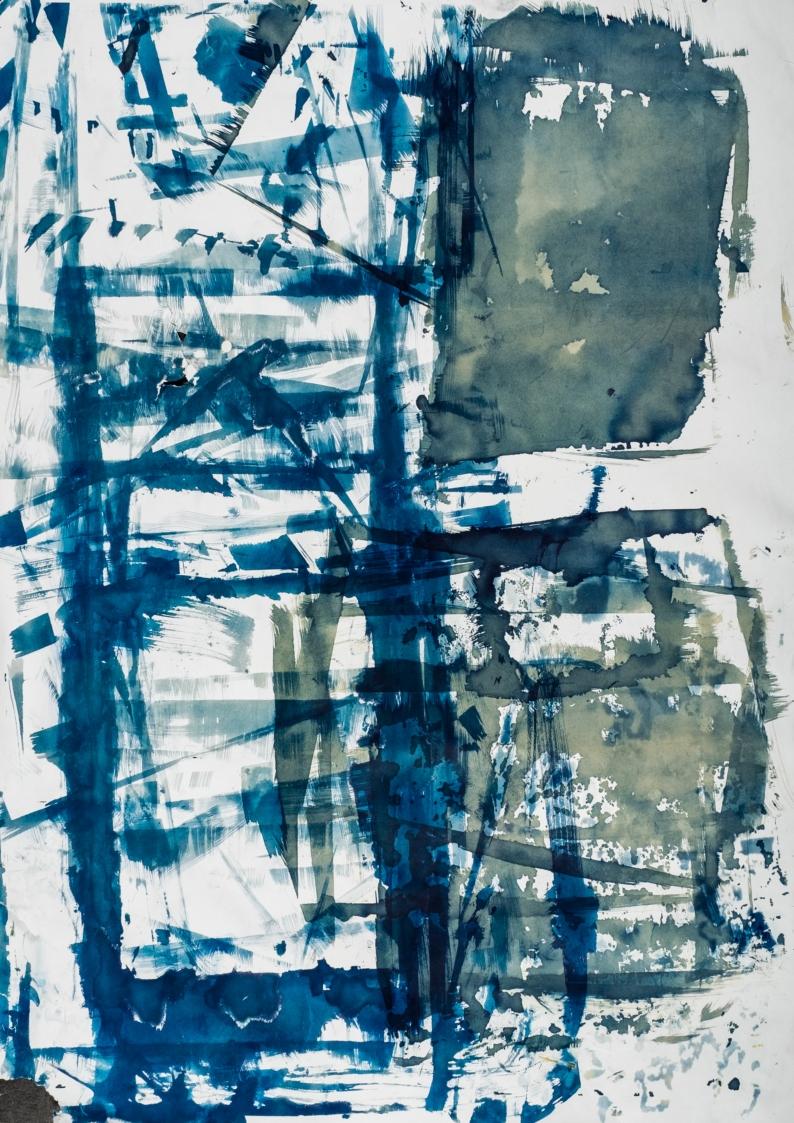
FAD2 Autumn Term #2
— increases, how would in your opinion change the relationship with a globalised audience?
John A. Blythe: Certainly the art landscape has changed in recent years, social media and digital connectivity have created a very different world, with many positives for artists. However, the digital space can be a very crowded one with many voices shouting for attention and as ever, the loudest voices tend to dominate. I don’t think it necessarily creates a space that is any more democratic or meritocratic.
I like Instagram. As I’m dyslexic, the visual dominance suits me. It’s a great place to just look around and it allows me to connect with a self-selecting community that may be interested in what I do. I still prefer people to engage with my work directly through physical exhibitions. There is plenty of opportunity for the digital and physical realms to coexist. It’s like digital and analogue photography, each has their own specific strengths and weaknesses, it’s about finding the right balance.
I am looking at creating virtual versions of my exhibitions in order to widen my audience but I haven’t committed to that yet. I haven’t managed to find a platform that I feel really works effectively for what I do, but the technology is developing all the time. Watch this space!
We have really appreciated the multifaceted nature of your artistic research and before leaving this stimulating conversation we would like to thank you for chatting with us and for
sharing your thoughts, John. What projects are you currently working on, and what are some of the ideas that you hope to explore in the future?
John A. Blythe: I’m continuing to develop the Chromogenesis project, it feels like I’ve only scratched the surface with this work and it will be a part of my practice for a long time to come.
However, for some of the lockdown I was not able to access my studio and this opened up an opportunity to focus on other aspects of my research. I’ve been doing more experiments making film and paper developers using less toxic chemicals and plant materials. I’m also making images directly on plant leaves and having fun making soil chromatographs. I’m not sure yet exactly where these will go but I have a few ideas. I am also involved in running a community darkroom in Oxford. I’m looking forward to being able to get that up and running again and supporting the great group of people who use it, and hopefully some new ones as well.
It’s been a pleasure to chat with you, answering your questions has been a valuable opportunity to reflect and evaluate, a chance to stop and think for a bit, which is always useful.
An interview by Josh Ryder, curator and Melissa C. Hilborn, curator landescape@europe.com
scape CONTEMPORARY ART REVIEW
Land John A. Blythe
LandEscape meets
Joaquim Marques
I see watercolor as a subconscious way to create fictitous memories of landscapes which might exist somewhere. As times goes by memories become blurry, but at the same time they get a new immaterial quality. The unpredictability of water transforms color and shapes in oneiric images of Nature. Unpainted parts on the paper are like a loss of information, a loss of memories. Watercolor is, paraphrasing the brazilian writer Guimaráes Rosa, working memory in its solid, liquid and gas state.
substratum direct the trajectory of your current artistic research?
Hello Joaquim and welcome to LandEscape. Before starting to elaborate about your artistic production and we would like to invite our readers to visit http://www.joaquimmarques.com.br in order to get a wide idea about your multifaceted artistic production, and we would start this interview with a couple of questions about your multifaceted background. You have a solid formal training: you studied Fine Arts at Hochschule für Gestaltung in Offenbach, Germany with Prof. Jankowkski and at Hochschule für Bildende Künste in Frankfurt with Prof. Bayrle: how did those formative years influence your evolution as an artist? Moreover, how does your cultural
Joaquim Marques: I remember when I was a student and I joined for the first time a meeting with prof. Bayrle and his class. I expected a talk about some school issues and about our works but instead he suggested us to go to a local jazz club and listen to jazz music. Later I understood that art is about everything in our life and not just about producing art pieces. Being an artist is also a way of life. I remember that Bayrle also said that making art today is like finding jetsam on the beach that we reassemble in order to get something new.
Most of my lifetime I was a foreigner and the experience of otherness has been present in my life since my early days. Being an artist is also a kind of otherness. My parents were
scape Land CONTEMPORARY ART REVIEW
An interview by Josh Ryder, curator and Melissa C. Hilborn, curator landescape@europe.com

From the series Existence, 2021 acrylic and oil on canvas, 80 x100 cm

from the countryside in Portugal and they lived in harsh conditions as rural workers before they immigrated illegally to Germany in search for a better life in the 1960ies. Many years later my father wrote down his immigrant story in a notepad. He died some years ago but his memories are now part of my memories as well. Besides the project shown here, I’m part of an artistic duo called Pocket Entropy in collaboration with my wife and also artist Letícia Barreto. Our
project deals with issues as immigration, otherness, refugees, history, etc.
The body of works that we have selected for this special edition of LandEscape and that our readers have already had the chance to get to know in the introductory pages of this article has at once captured our attention for your unique interpretation of the role of memory and its relationship with the subconscious, to create a channel of
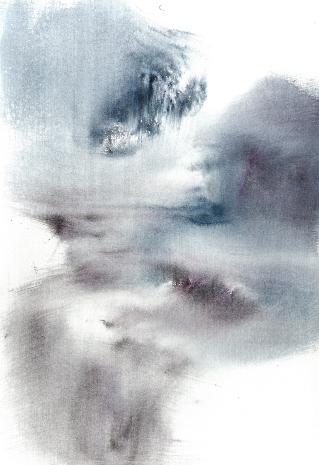
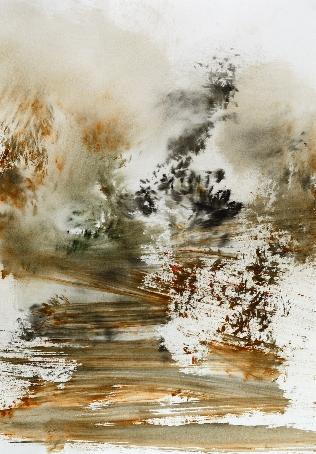
Marques scape CONTEMPORARY ART REVIEW Land
Joaquim
From the series Beyond Matter, 2020 watercolor, 70 x 50 cm
From the series Beyond Matter, 2019 watercolor, 70 x 50 cm


From the series Existence, 2021, acrylic and oil on canvas, 110 x 100 cm
communication between your inner inspirations and the viewers: when walking our readers through your usual setup and process, would you tell us how do you
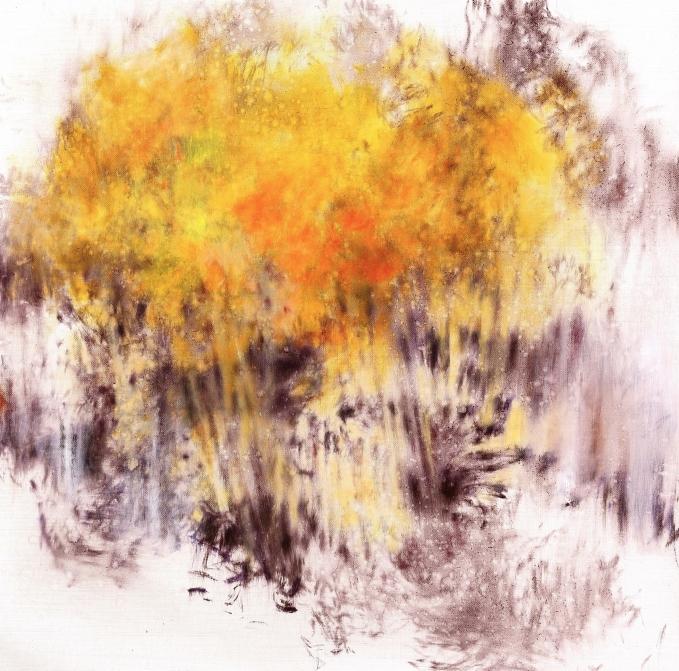
develop your ideas?
Joaquim Marques: Years ago when I studied at Arco School in Lisbon, Prof. Castro
scape CONTEMPORARY ART REVIEW Land Special Edition
Caldas, talking about my work, said that I would think too much before I started to paint. And indeed, every time I finished a work I never knew what would come next
and I spent a lot of time thinking about the next work, but the ideas didn’t really flow. Then, some years ago, when I lived in Brazil three things came together: First, I need to
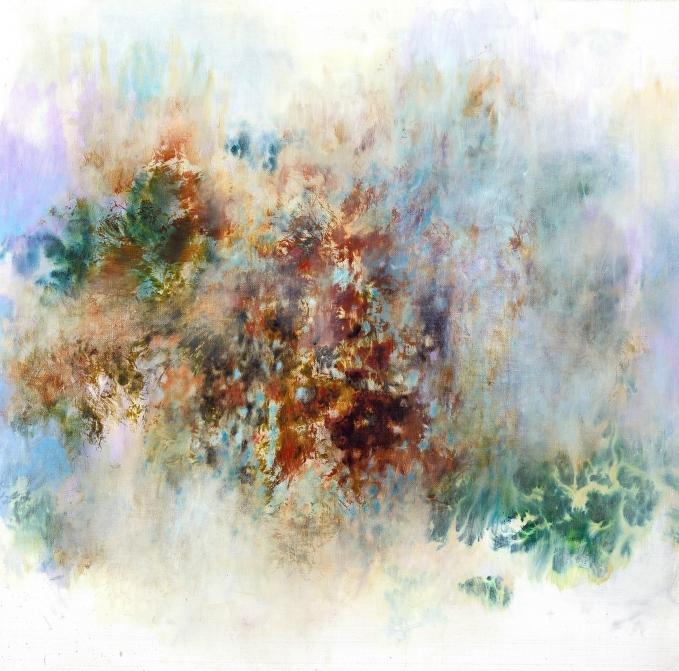
scape CONTEMPORARY ART REVIEW Land
Joaquim Marques
From the series Existence, 2021, acrylic and oil on canvas, 100 x 110 cm
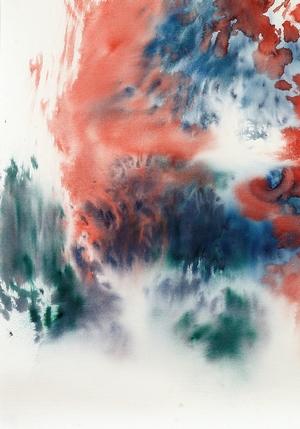
From the series Beyond Matter, 2021, watercolor, 50
70 cm
x
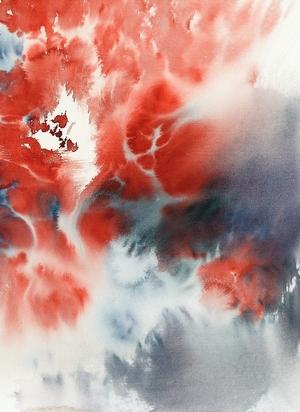
find a painting technique which would allow me to paint quickly without leaving enough time to think. Secondly I had for the first time in my life a bigger studio, and thirdly I asked myself: Why don't I use in my own work the watercolor techniques, which I teach to my students in my classes? So I started to paint on large watercolor paper sheets laying on the ground with watercolor and a lot of water. Soon I discovered that water contains a kind of memory. Blurred pictures of oneiric and forgotten landscapes emerged. (That reminds me of an article I once read about an Amazonian tribe who believes that dreams are memories, which liquify during the night and flow into the river which crosses their forest. The river is their living collective memory.) The painting itself doesn’t take long and it looks a little bit like a performance involving a mop, a duster and me moving on the paper. The quick but intense painting process requires a lot of concentration and intuition regardless of the paper size. And intuition means to open my mind to subconsciousness.
Both when featuring vivacious tones — as in Secret Garden — and as when you resort to more delicate nuances — as in the works of the Lost in Memory series — your artworks achieve the difficult task of challenging the dynamics of perception, drawing the viewers to a state of mind where the concepts of time and space become almost suspended. How does your
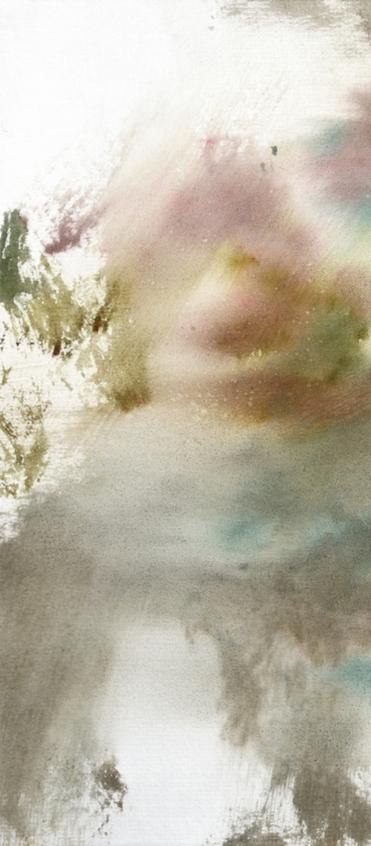
scape CONTEMPORARY ART REVIEW Land Special Edition

Joaquim Marques scape CONTEMPORARY ART REVIEW Land
the
watercolor,
43
From
series Beyond Matter, 2020,
30 x
cm
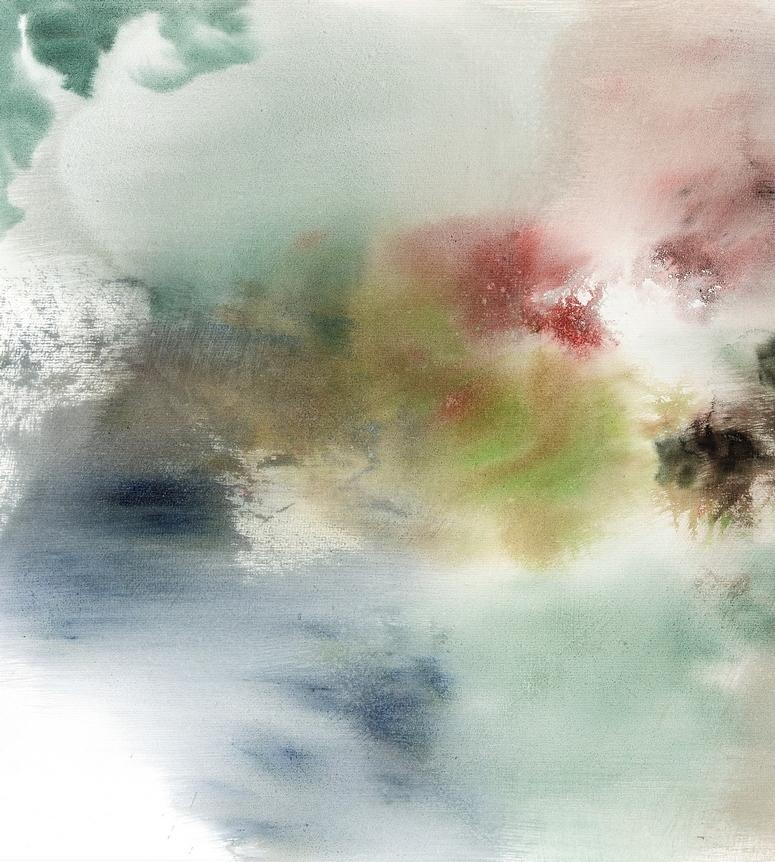
scape CONTEMPORARY ART REVIEW Land Special Edition From the series Beyond Matter, 2018, watercolor, 50 x 70 cm
own psychological make-up determine the nuances of tones that you decide to include in your works and in particular, how do you develop your tones in order to achieve such unique results?
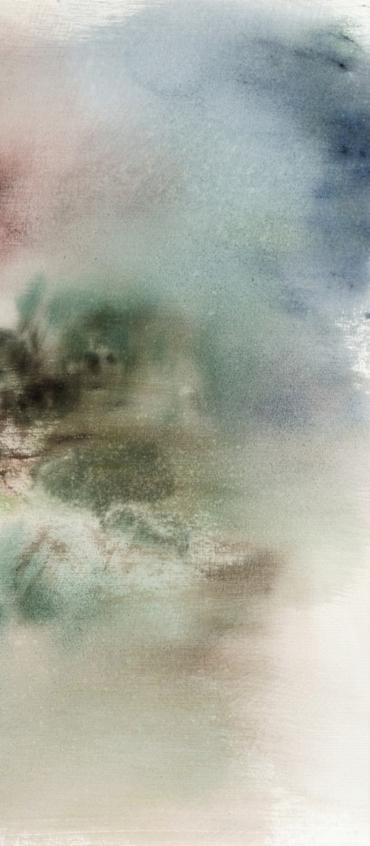
Joaquim Marques: At the school where I teach watercolor painting I'm known as the one who tells the students that they shouldn’t clean the watercolor palette, because a little bit of dirt can be very useful to obtain interesting and surprising colors. I’m not sure if my choice of colors is psychologically influenced but it is certainly intuitive. There are always some of my favourite colors left on my palette and when I paint them on wet paper they mix up and new and unexpected colors appear. My wet on wet painting technique allows me to avoid hard edges in order to get blurred shapes like somebody or something caught in movement on a long exposure photograph. When I paint on canvas I use the same technique as in my watercolors but with acrylic, a water based paint also.
We have appreciated the way the performative nature of your approach — that our readers can view at https://youtu.be/fMQB4aTMUDI highlights the physical aspect of the creative act. New York City based artist Lydia Dona once remarked that in order to make art today one has to reevaluate the conceptual language behind the mechanism of art making itself: as an artist
CONTEMPORARY ART REVIEW Land
Joaquim Marques scape
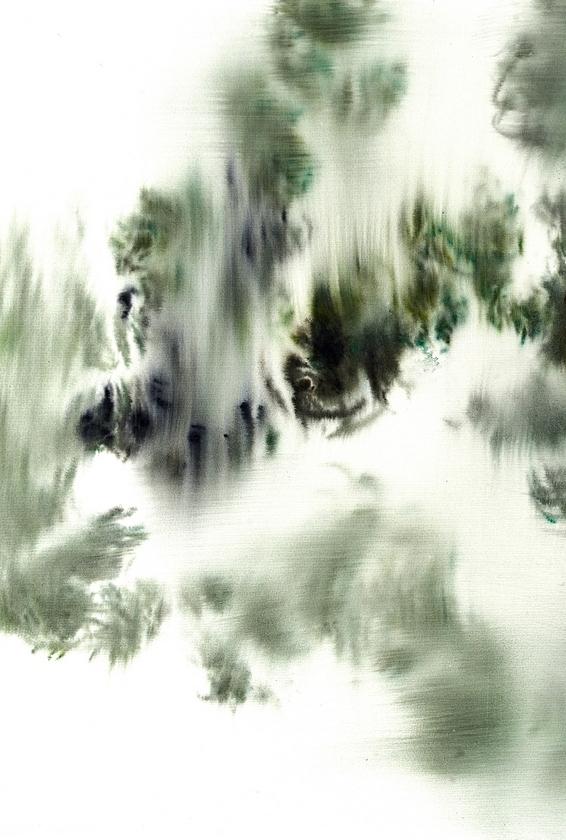
From the series Beyond Matter, 2020, watercolor, 50 x 70 cm



From the series Beyond Matter, 2019, watercolor, 50 x 70 cm
particularly interested in capturing the unpredictability of water in order to achieve such unique visual results, how do you consider the role of randomness and improvisation playing within your artistic practice? In particular, how important is for you the physical process of creation, even before the intellectual one?
Joaquim Marques: I consider the physical process in my large works as very important. I start to paint on a blank sheet without any previous sketches. I walk on the paper and all my body is involved in the painting process, creating a strong physical relationship between myself and the work. When I paint I’m focused especially on the parts which I will not paint. In traditional watercolour painting there is no use of white paint, the white color you see in the works is just the white of the paper. If I paint too much there is no way back to make it white again. Therefore I feel a certain tension when I start painting, but after half an hour of some adrenaline the work is finished. I rarely paint a second layer. During the painting I’m completely absorbed, time and space become meaningless. It’s for sure a physical and mental challenge. Randomness is a key issue in my work. As I put paint on the wet paper (or canvas) I watch how it spreads and I have to decide if I should stop or continue. I have to make these decisions quickly before the paper gets dry. Paper (or canvas) soaked with water and paint has its own life

scape CONTEMPORARY ART REVIEW Land Special Edition
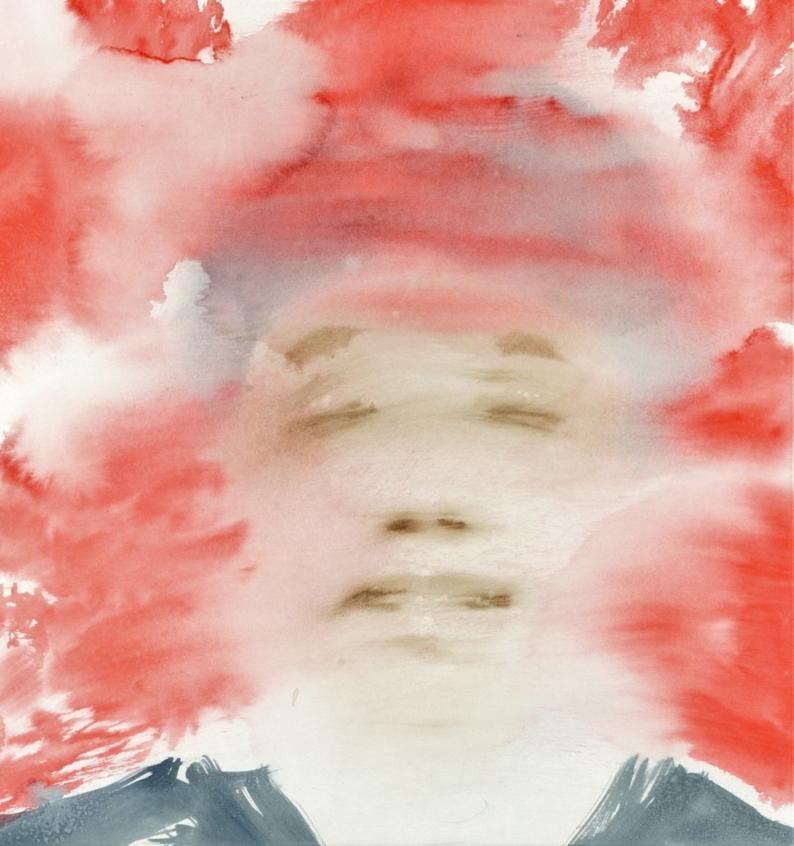
Joaquim Marques scape CONTEMPORARY ART REVIEW Land
From the series Dreamers, 2021, watercolor, 50 x 70 cm
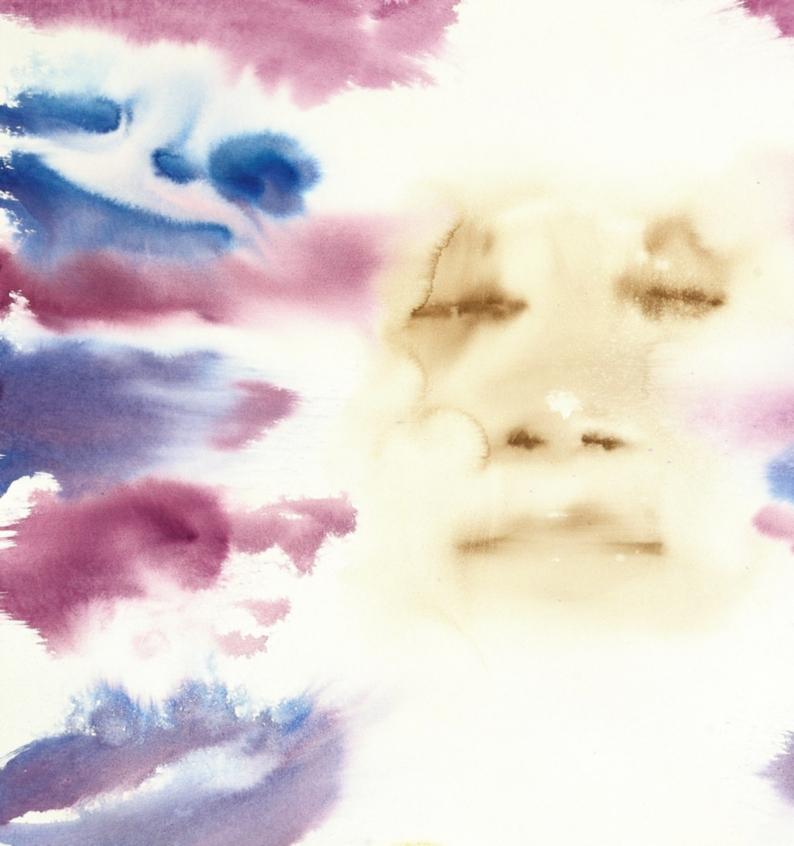
scape CONTEMPORARY ART REVIEW Land Special Edition
From the series Dreamers, 2021, watercolor, 50 x 70 cm
and I have to deal with it, water behaves like an unpredictable living being.
We dare say that your artistic production is a successful attempt to provide the elusive, intangible nature of memory, with such material, almost tactile quality. How do you consider the role of memory in your artistic research and what did lead you to focus a noticeable part of your artistic practice on it? By the way, does your everyday life's experience fuel your creative process, as well?
Joaquim Marques: Well, I guess that we can say that memories are our identity. We are made of conscious and subconscious memories. Actually, my painting is not about landscapes or so but about the mystery of our existence. Every single moment of our life becomes a memory after a split of a second in the present. I’m interested in the relationship between material and immaterial things. Physicists say that matter is energy. I believe that everything is a flow of energy. Therefore the landscapes in my paintings are a metaphor of our existence and our impermanence. The whole universe is ours, but nothing belongs to us.
In my everyday’s life I always try to pay attention to the marvels of nature. We should look every day at nature as it were for the first time. My creative process mirrors my fascination for the unknown.

scape CONTEMPORARY ART REVIEW Land
Joaquim Marques

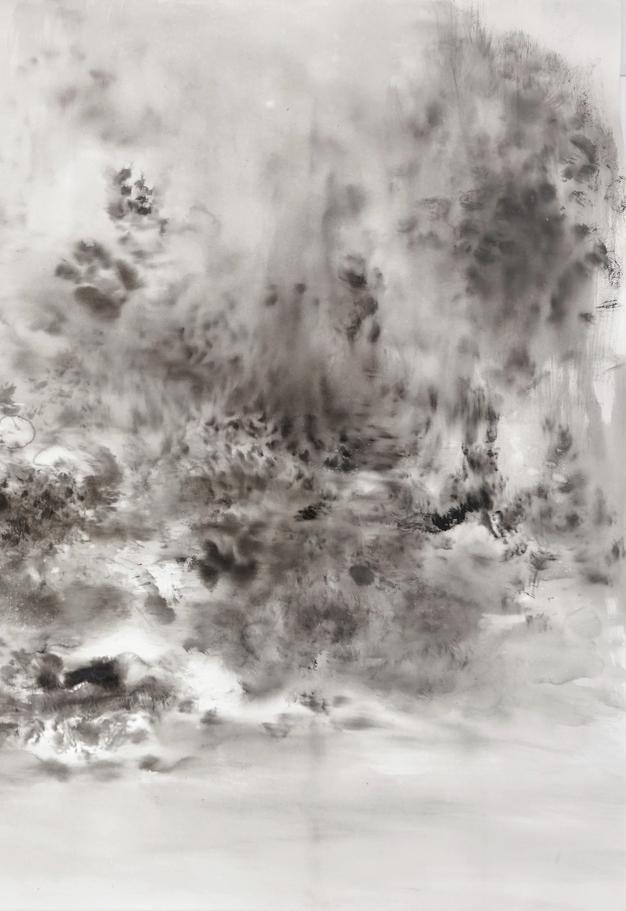
As you have remarked in your artist's statement, you see watercolor as a subconscious way to create fictitious memories of landscapes which might exist
somewhere. Scottish artist Peter Doig once remarked that even the most realistic work of arts are derived more from within the head than from what's out there in front of
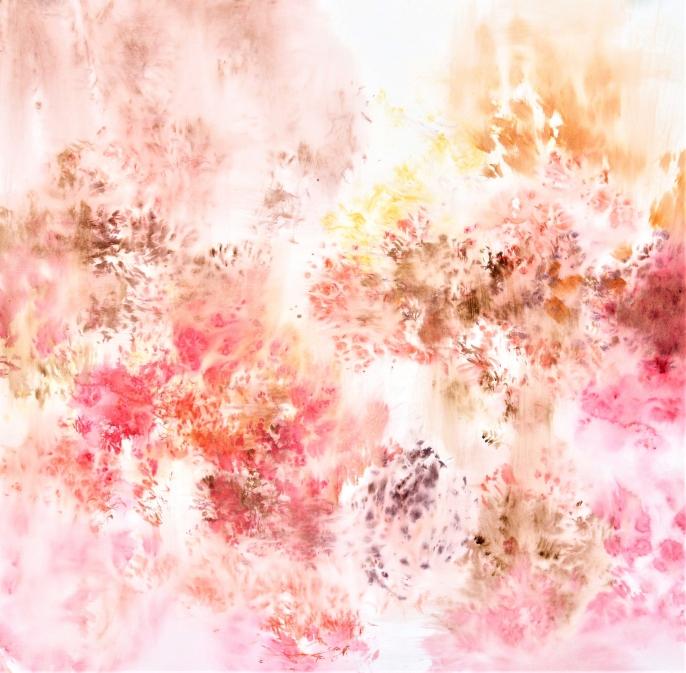
scape CONTEMPORARY ART REVIEW Land Special Edition
From the series Forgotten Landscapes, 2019, watercolor and acrylic on paper, 150 x 150 cm
us, how do you consider the relationship between reality and imagination, playing within your artistic production?
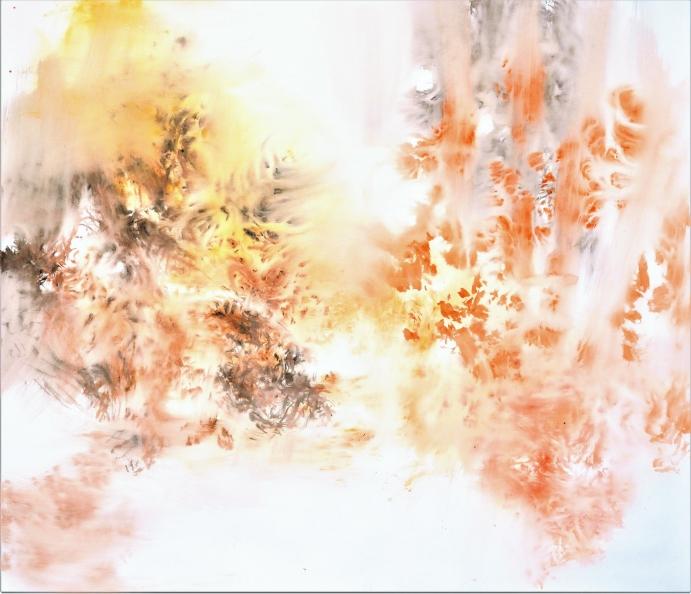
Joaquim Marques: Peter Doig is an artist I admire very much and I agree with him. The austrian writer Thomas Berhard once said
that he wasn’t interested in describing what everyone can see like landscapes, but in describing what is not visible like the thoughts of his novel characters. Every piece of art is just a representation of some reality, in fact, it is a reality by his own.
scape CONTEMPORARY ART REVIEW Land
Joaquim Marques
From the series Forgotten Landscapes, 2019, watercolor and acrylic , 150 x 160 cm.
Memories, dreams and ecstatic experiences are just different states of reality.
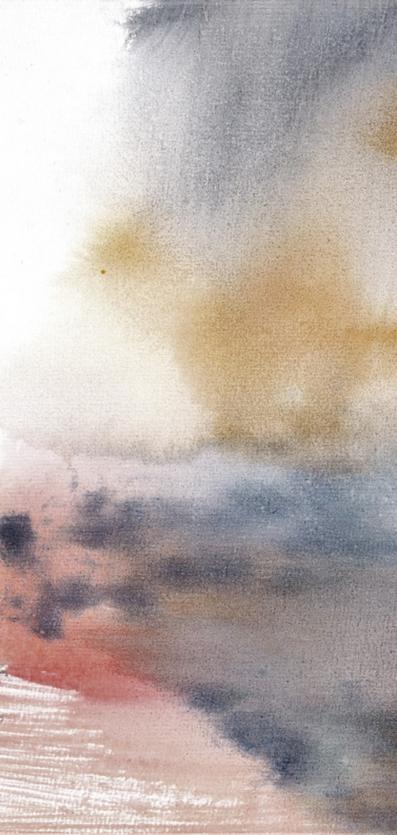
Inviting the viewers to such poetic contemplation, your artworks draws the eyes to fill white spaces on the paper as to recover memory gaps. Austrian Art historian Ernst Gombrich once remarked the importance of providing a space for the viewers to project onto, so that they can actively participate in the creation of the illusion, or even of the meaning: how important is for you to trigger the viewers' imagination in order to address them to elaborate personal interpretations? In particular, how open would you like your works to be understood?
Joaquim Marques: In the openings of my exhibitions often people tell me that they have seen an animal, a face or something else in my paintings. The viewer's imagination is what keeps an artwork alive, I guess. Showing artworks means to share them with an audience. My personal interpretation is just one among many others.
Some of your artworks, as the ones from your interesting Caruso's Dream series, feature a stronger presence of figurative elements, that seem to find their way to the surface out of an abstract blanket, and that provide the works with such seductively unsettling ambience. How do you balance the degree of figuration in
scape CONTEMPORARY ART REVIEW Land Special Edition
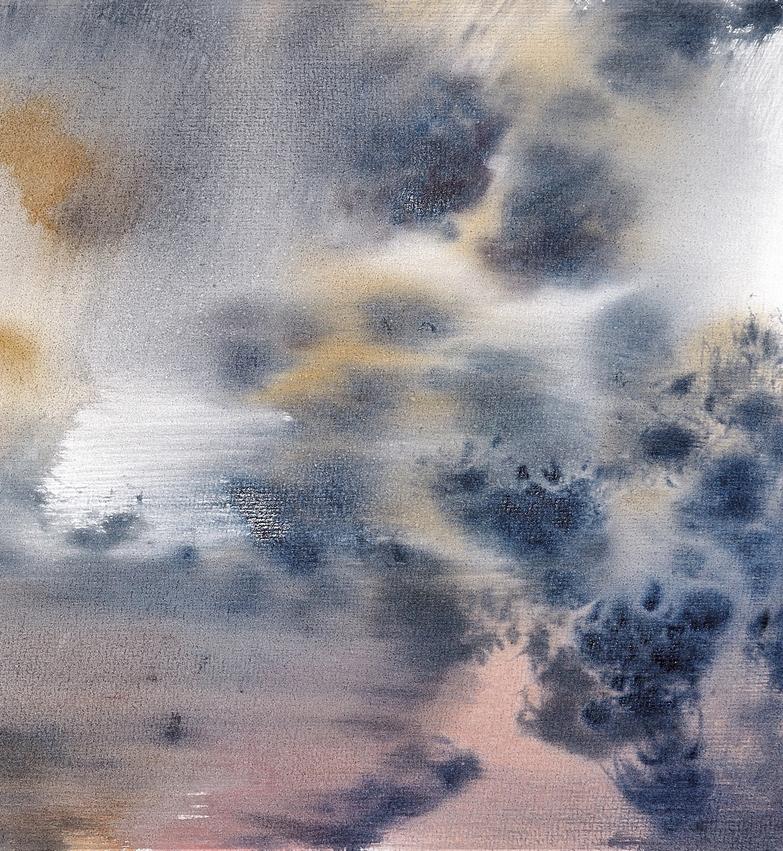
scape CONTEMPORARY ART REVIEW Land
Joaquim Marques
From the series Beyond Matter, 2021, watercolor, 30 x 43 cm
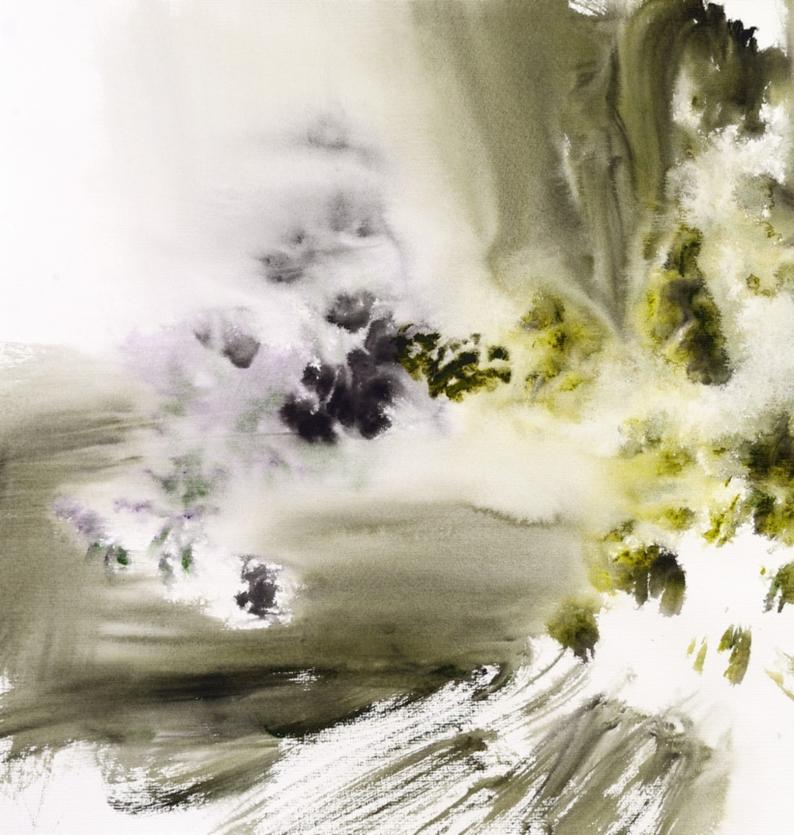
scape CONTEMPORARY ART REVIEW Land Special Edition
From the series Memories of Nowhere, 2019, watercolor, 50 x 70 cm
your compositions? Do you structure it in order to better walk the viewers in their visual experiences?
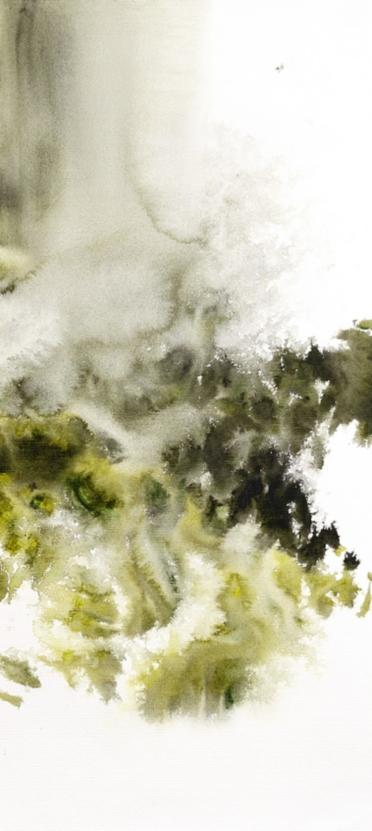
Joaquim Marques: Actually, the Caruso's Dream series was made for a specific exhibition two years ago, “The Conquest of the Useless”. There I showed works inspired by Werner Herzog’s amazing film “Fitzcarraldo”. Starting point was the research of film stills, which I painted rearranging the original composition and changing the background. First I create an atmosphere and ambience, after that the figures can enter the stage. Sometimes I project pictures of the figures on the paper or canvas after I painted the background to see how they fit in the composition.
You are an established artist: over the years your works have been showcased in a number of international solos and you were selected for the Amadeo de Souza-Cardoso Prize in 2020: how do you consider the nature of your relationship with your audience? By the way, as the move of Art from traditional gallery spaces, to street and especially to online platforms increases, how would in your opinion change the relationship with a globalised audience?
Joaquim Marques: Due to the pandemic, my relationship with my audience is now mainly virtual. I suppose that after the pandemic it will keep that way. With an increasing
CONTEMPORARY ART REVIEW Land
Joaquim Marques scape
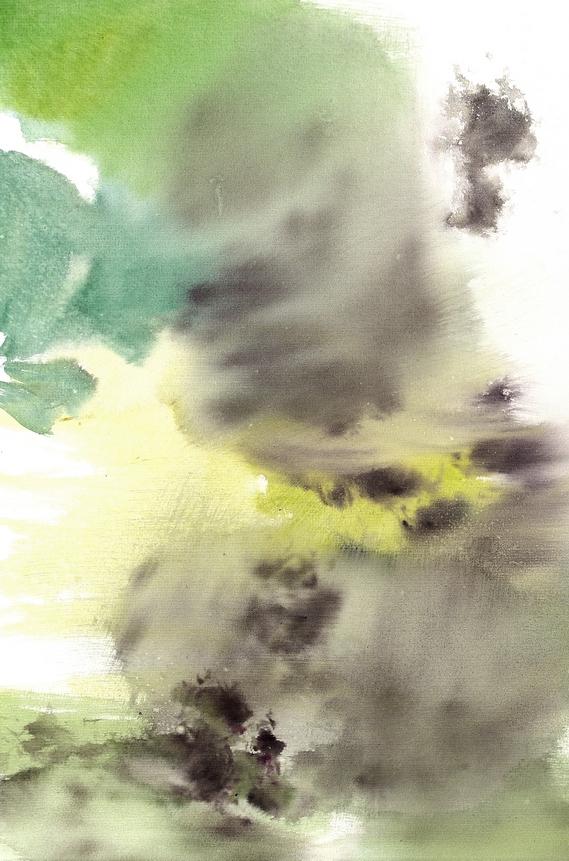

From the series Beyond Matter, 2020, watercolor, 50 x 70 cm
number of digital platforms there are now many chances for an artist to show his works to a vast audience all over the world and get connected to a lot of fellow artists. Art became a sort of global communication. Never before was the virtual world so present in our daily´s day life like today. So why should art be an exception? I think all the transformations societies are going through are only the beginning of something really new. Social media, digital platforms, etc. allows a close relationship to an audience with different cultural backgrounds. A globalised audience demands globalised artists.
We have really appreciated the multifaceted nature of your artistic research and before leaving this stimulating conversation we would like to thank you for chatting with us and for sharing your thoughts, Joaquim. What projects are you currently working on, and what are some of the ideas that you hope to explore in the future?
Joaquim Marques: Thanks for the opportunity to share my work with the readers, it was a pleasure chatting with Land Escape. In my current project I’m introducing dreams and figurative elements in my memory-landscapes. I suppose that the figures are a kind of alter egos who will embark in a journey to unknown pleasures of my subconsciousness. Let’s see where it will take me.
An interview by Josh Ryder, curator and Melissa C. Hilborn, curator
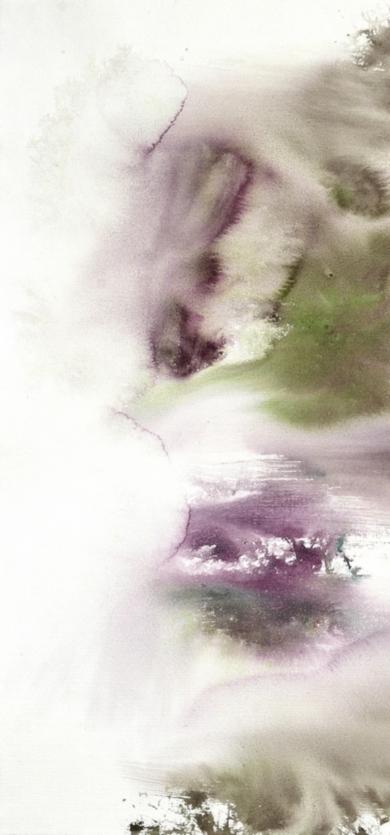 landescape@europe.com
landescape@europe.com
scape CONTEMPORARY ART REVIEW Land Special Edition
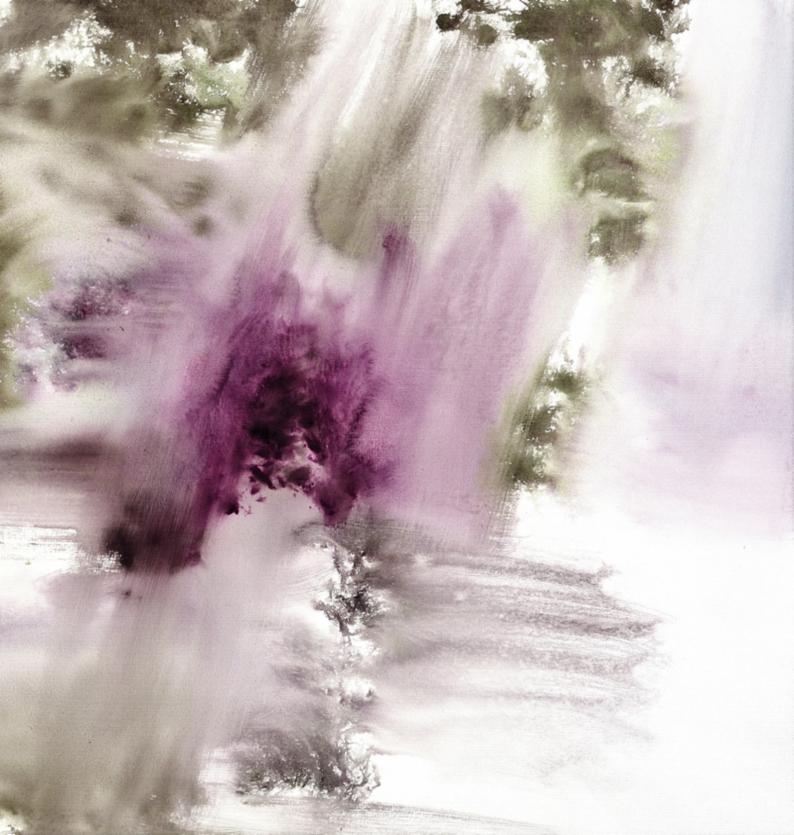
scape CONTEMPORARY ART REVIEW Land
Joaquim Marques
From the series Forgotten Landscapes, 2020, watercolor, 50 x 70 cm

LANDESCAPE ART REVIEW

























 Photo by Phoenix Sage Potter
Photo by Phoenix Sage Potter













 Photo by Phoenix Sage Potter
Photo by Phoenix Sage Potter




 Yin Yang, 24x36 acrylic, paper and charcoal on cotton canvas
Yin Yang, 24x36 acrylic, paper and charcoal on cotton canvas




 Dorsoduro, 2020, photograph, archival pigment print, Ed.5+AP, 40x30 cm.
Dorsoduro, 2020, photograph, archival pigment print, Ed.5+AP, 40x30 cm.



 Honesty
Honesty












 The Lotus Eaters
2019, photograph, archival pigment print, Ed.5+AP, 41x61 cm.
Illustrative of society’s preoccupation with itself, these subjects denote the self-obsessive byproduct of our collective pursuit of identity, one step in a fluid trilogy of exhibition, dissemination, and approval.
The Lotus Eaters
2019, photograph, archival pigment print, Ed.5+AP, 41x61 cm.
Illustrative of society’s preoccupation with itself, these subjects denote the self-obsessive byproduct of our collective pursuit of identity, one step in a fluid trilogy of exhibition, dissemination, and approval.














 11 x 15 inch / 28 x 38 cm
Chilli Powder and Charcoal
11 x 15 inch / 28 x 38 cm
Chilli Powder and Charcoal






 Victoria Terminus
x 4 ft Wall space
Kinnari Saraiya
Victoria Terminus
x 4 ft Wall space
Kinnari Saraiya
























 The Empty Chair
The Empty Chair

 The Mirror The Sound of Silence
The Mirror The Sound of Silence












 The Blue Meadow
The Blue Meadow













 Door. 194x63x95 cm. ‘Over There’, Zuzu Galery, Hefer valley, Curator: Rotem Ritov
Door. 194x63x95 cm. ‘Over There’, Zuzu Galery, Hefer valley, Curator: Rotem Ritov





 Forest. ‘Sleeves of the Trees’, Solo Exhibition, Janco-dada Museum, Ein Hod; Curator: Avital Katz
Forest. ‘Sleeves of the Trees’, Solo Exhibition, Janco-dada Museum, Ein Hod; Curator: Avital Katz

















 Roads Oil on canvas, 2021
Roads Oil on canvas, 2021













































































 landescape@europe.com
landescape@europe.com

